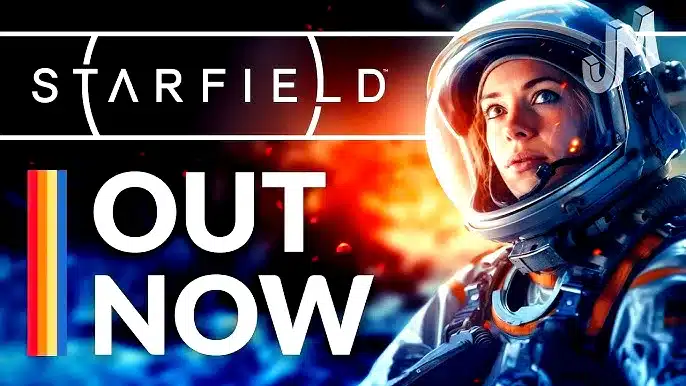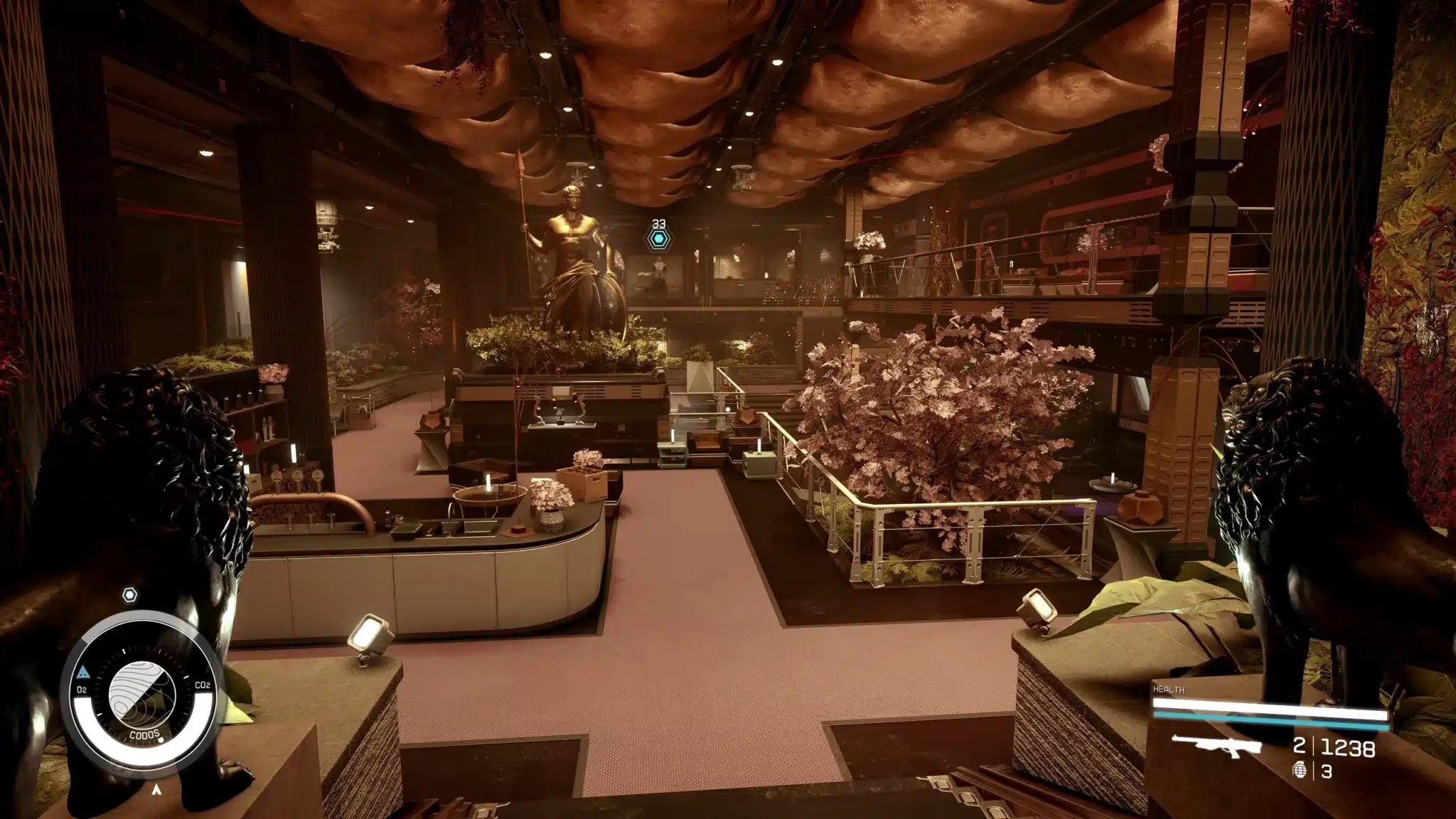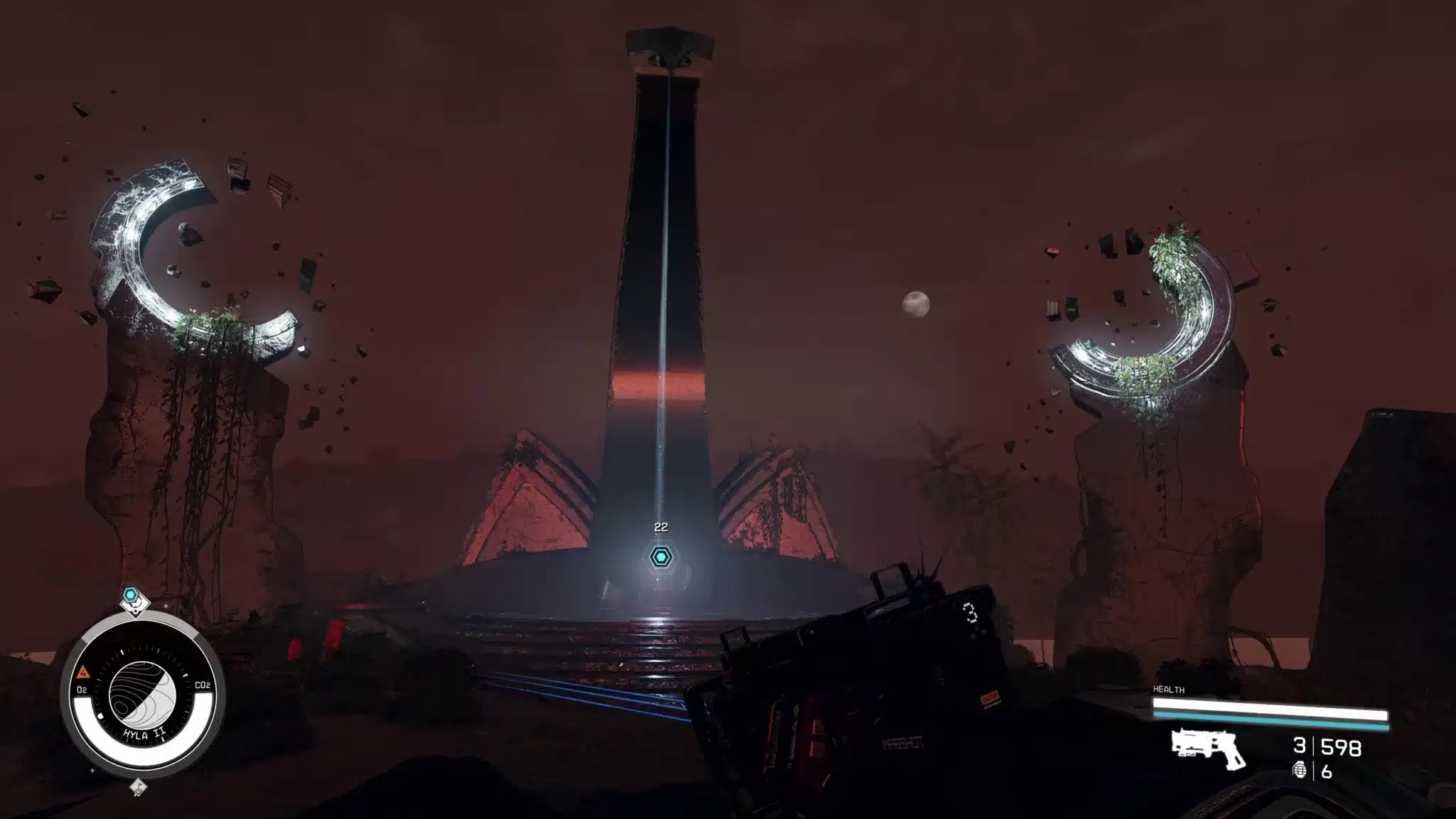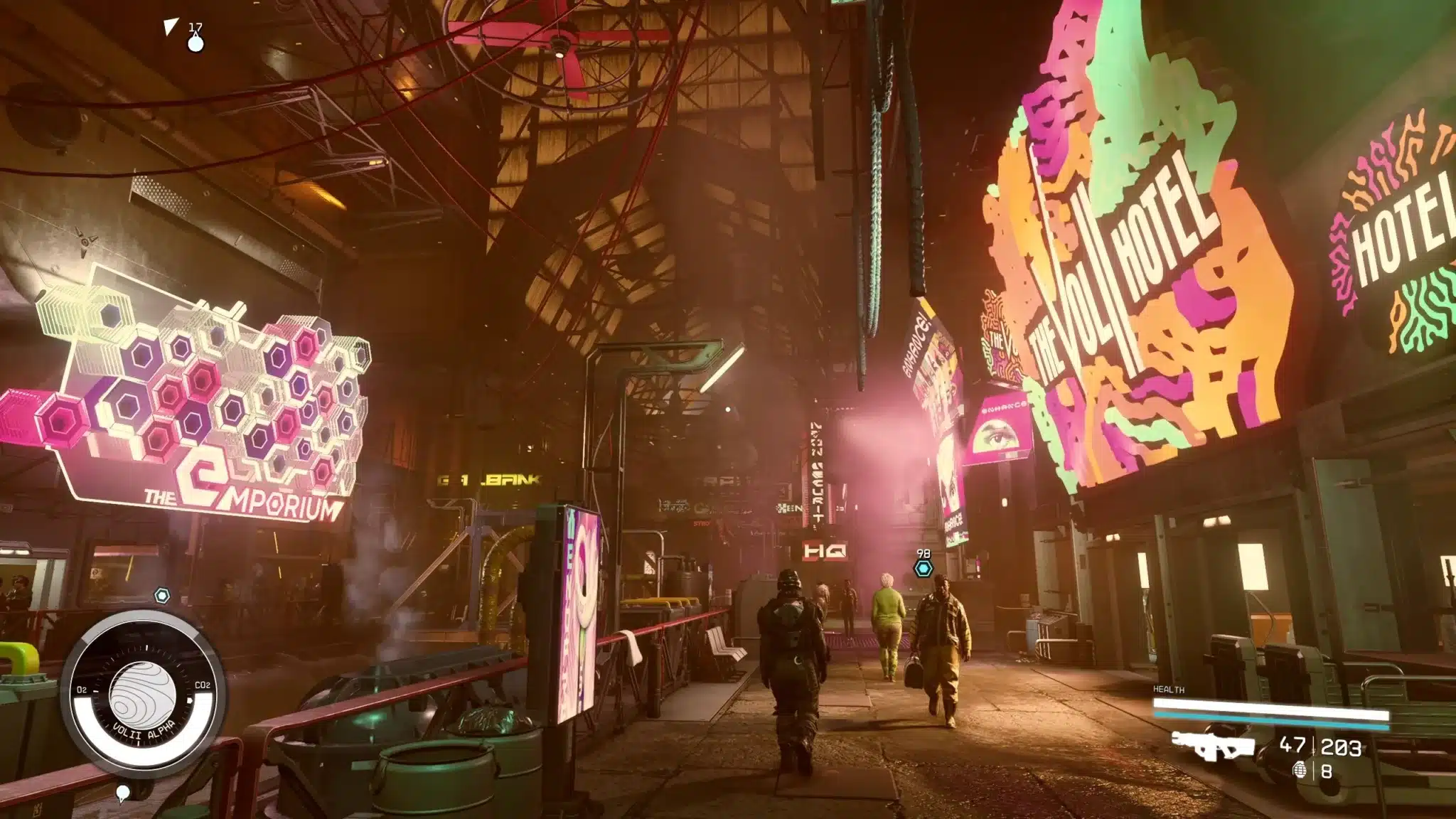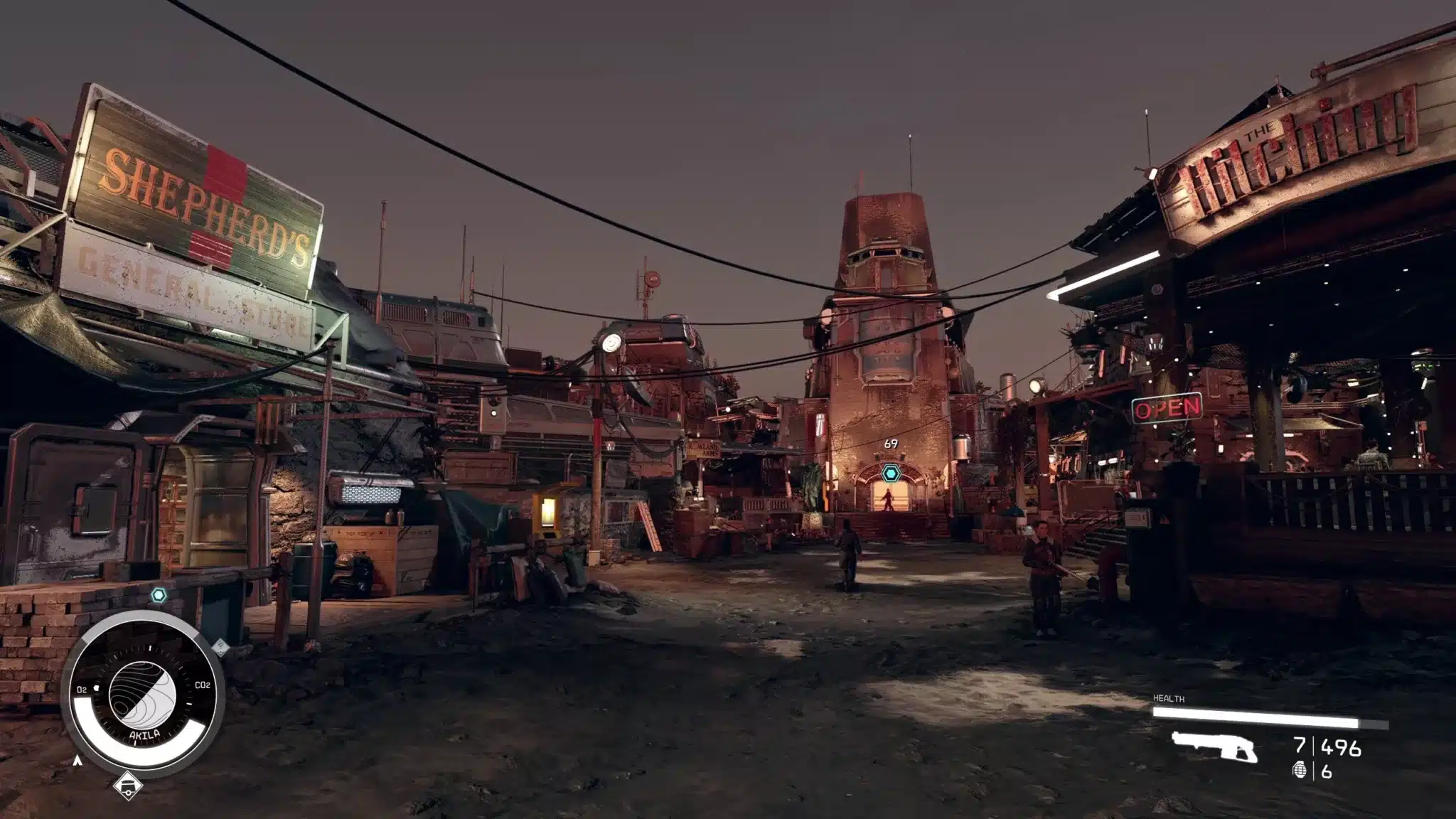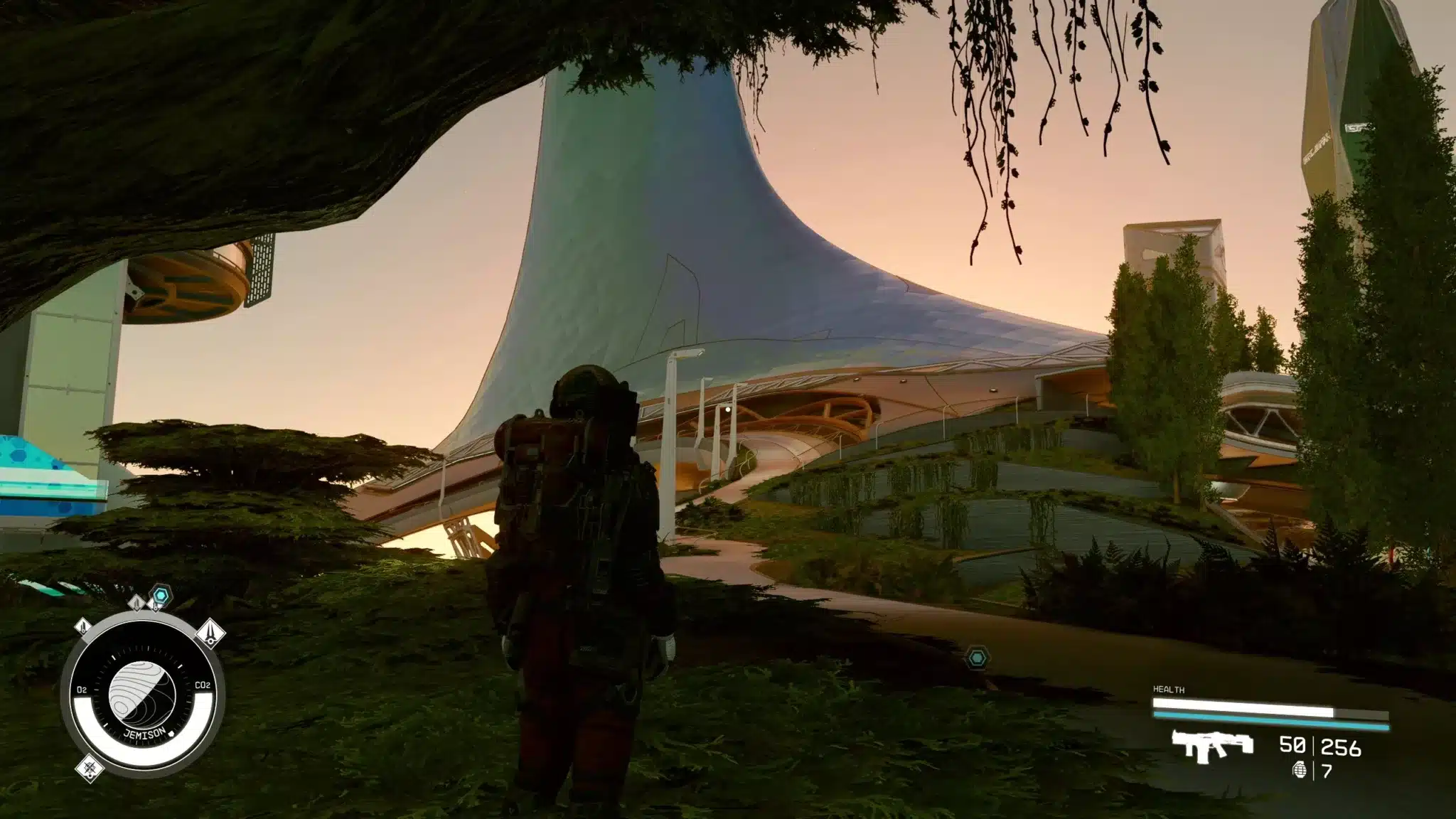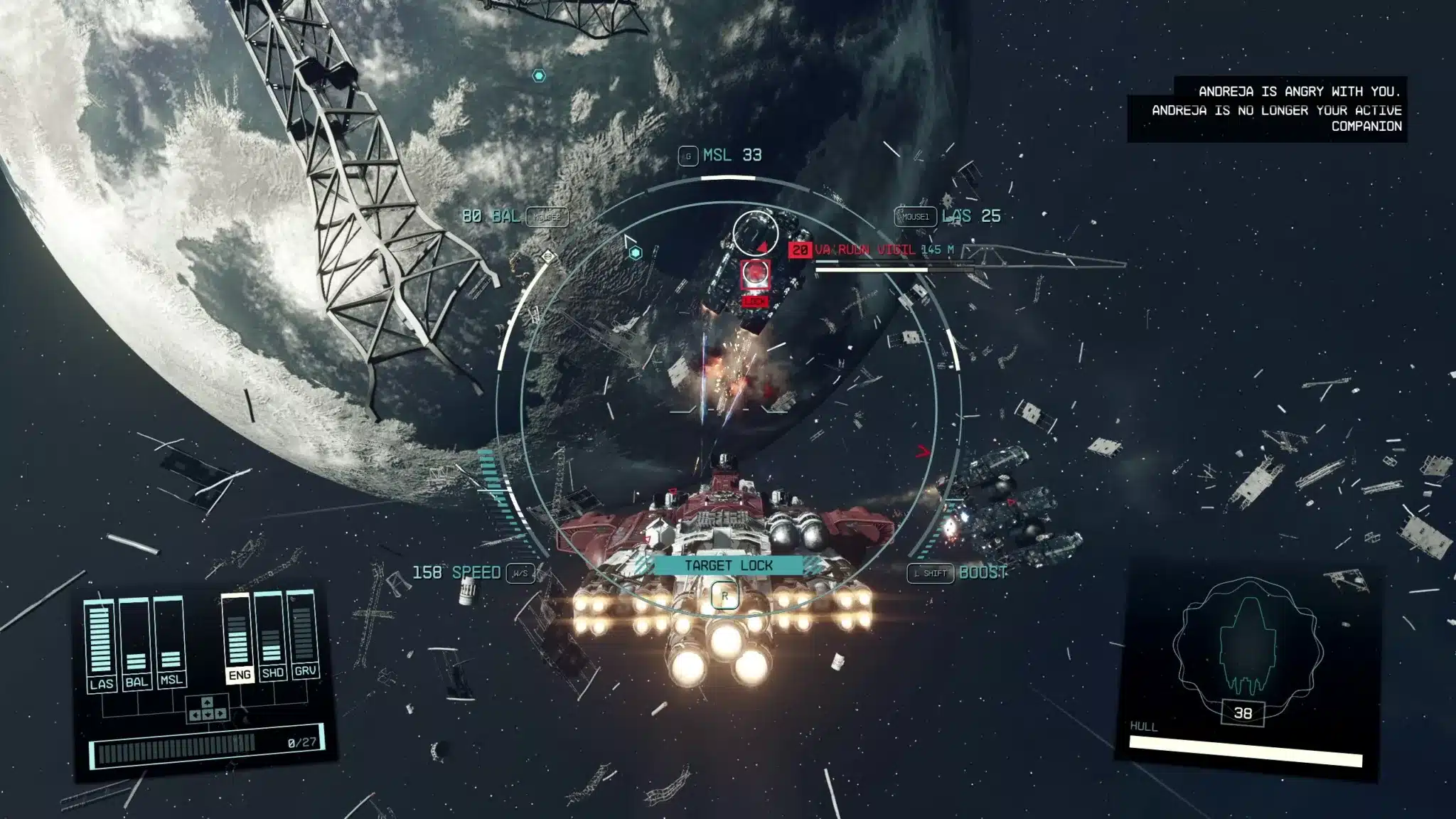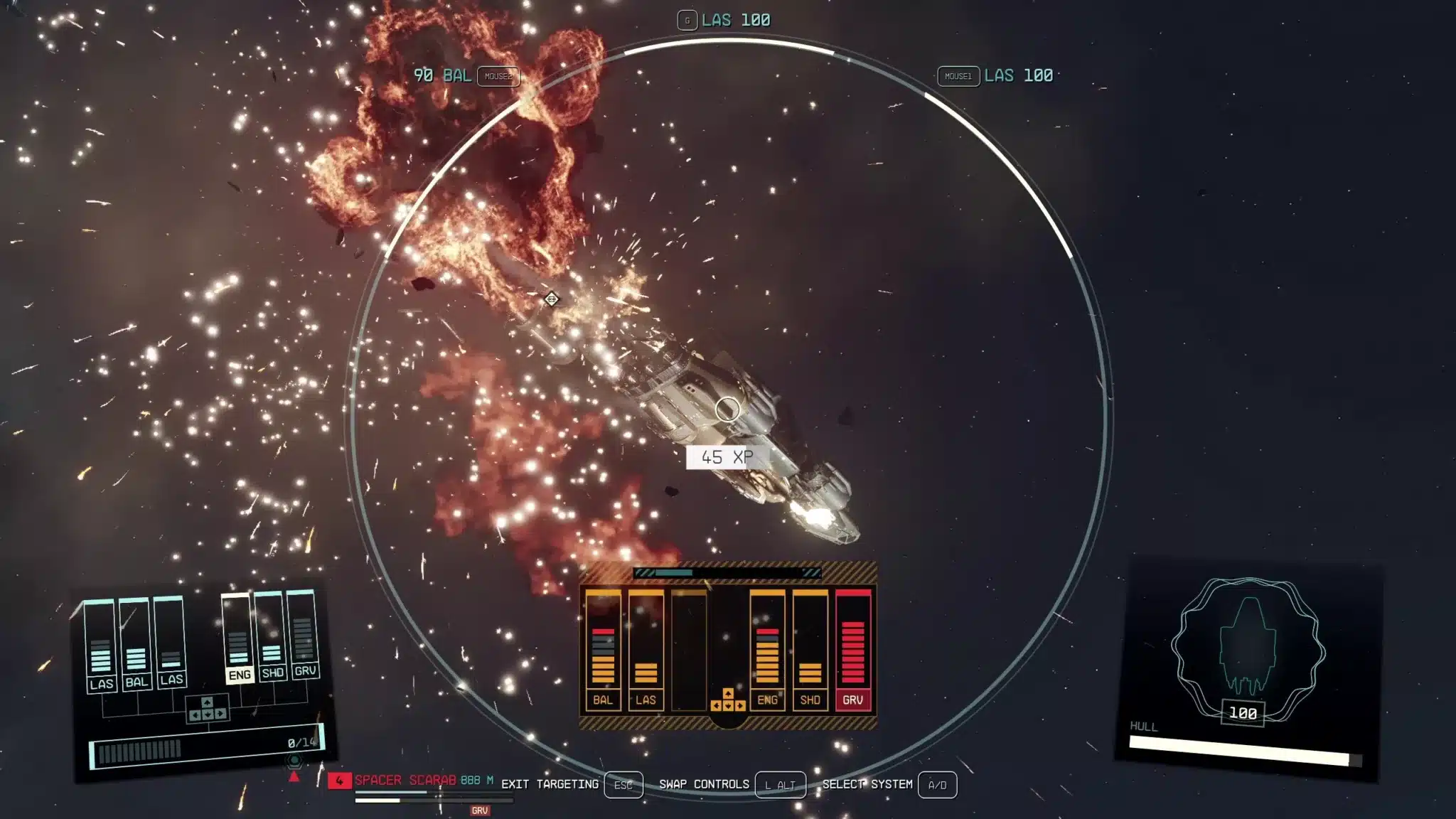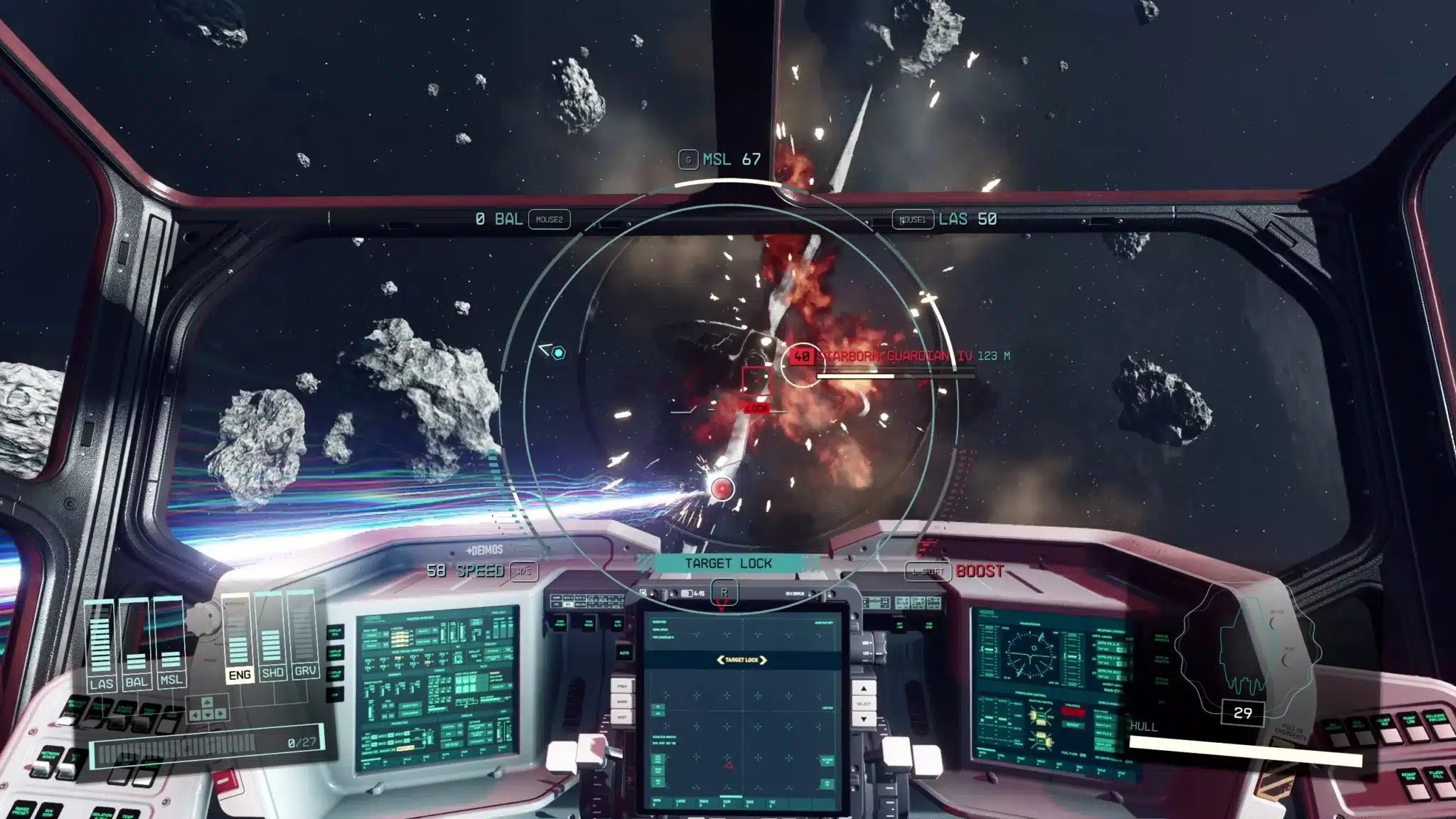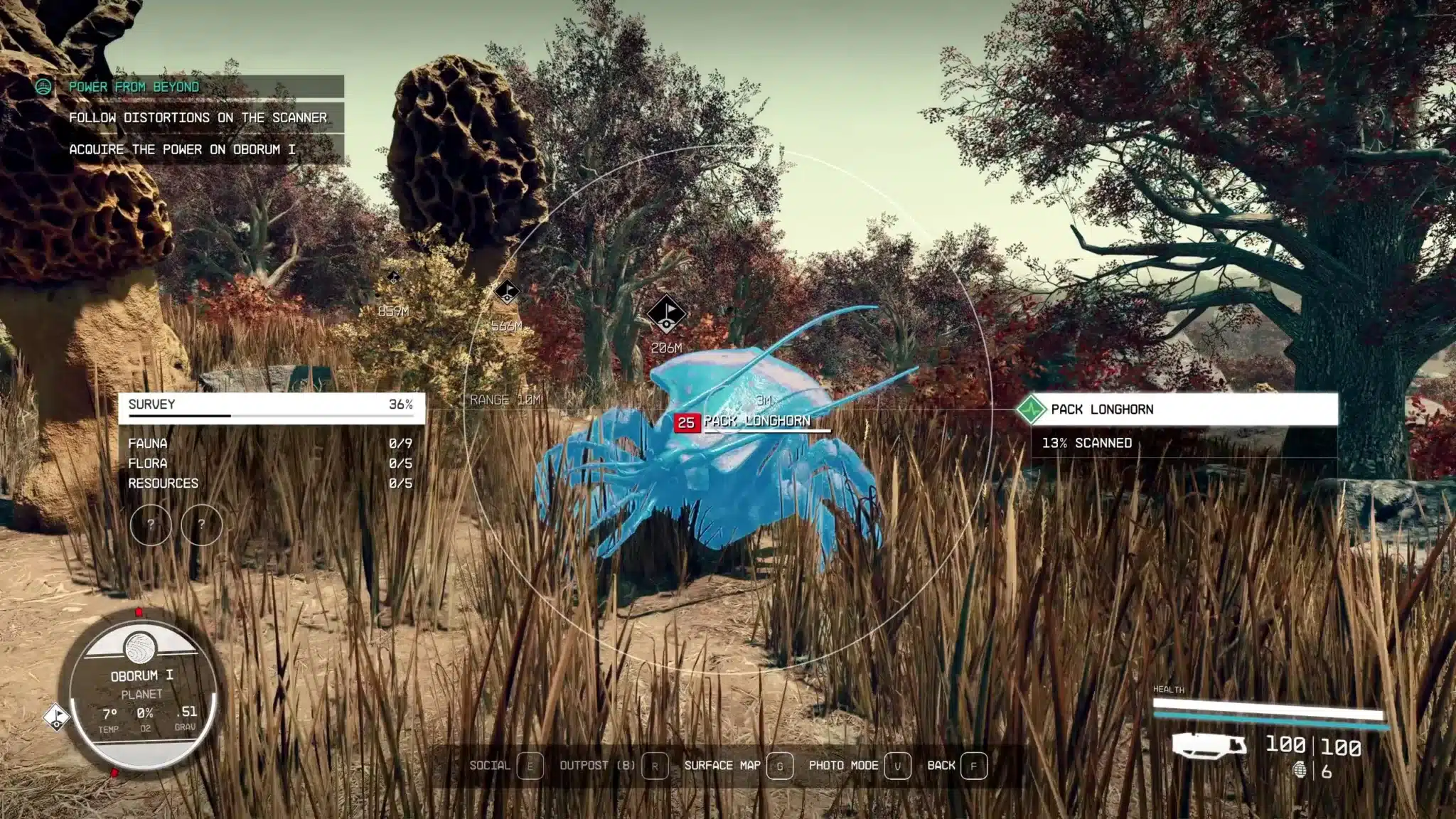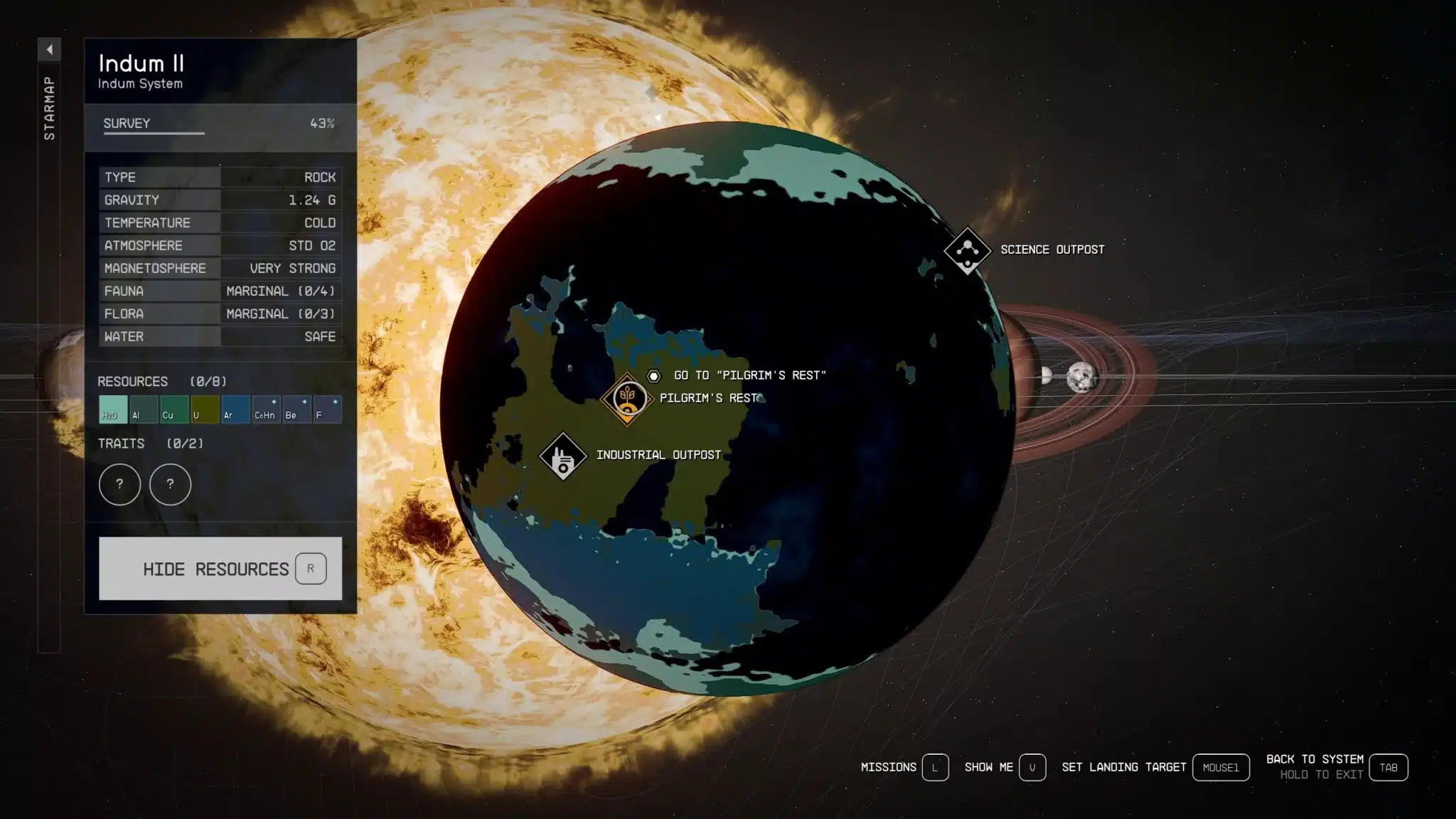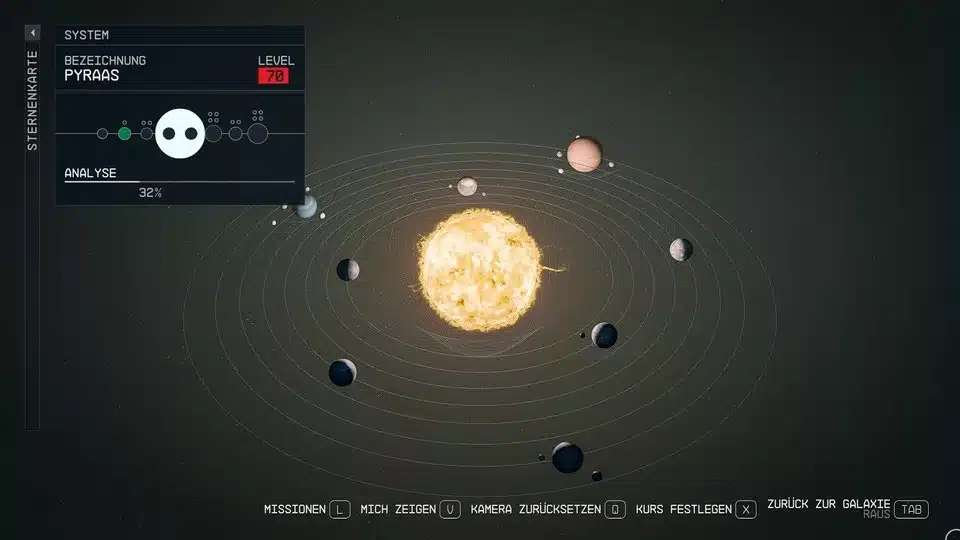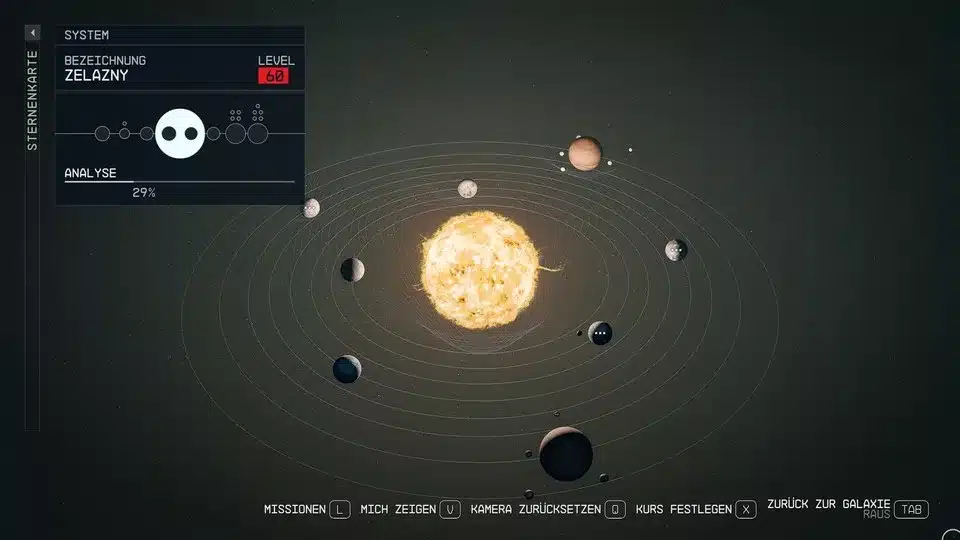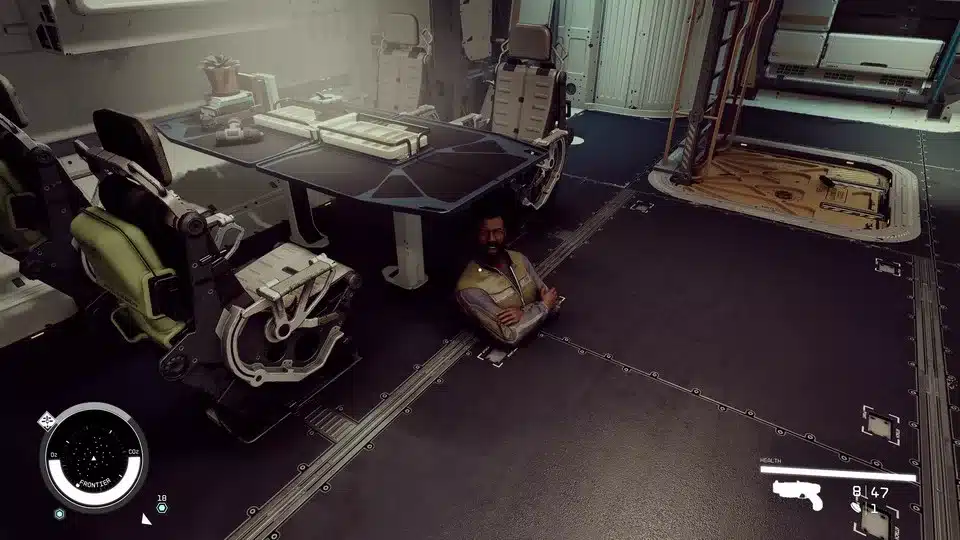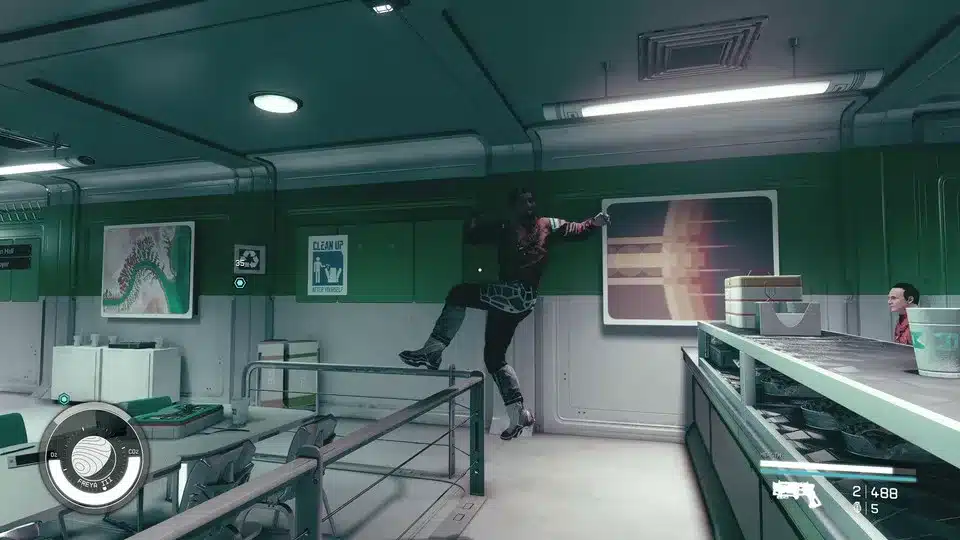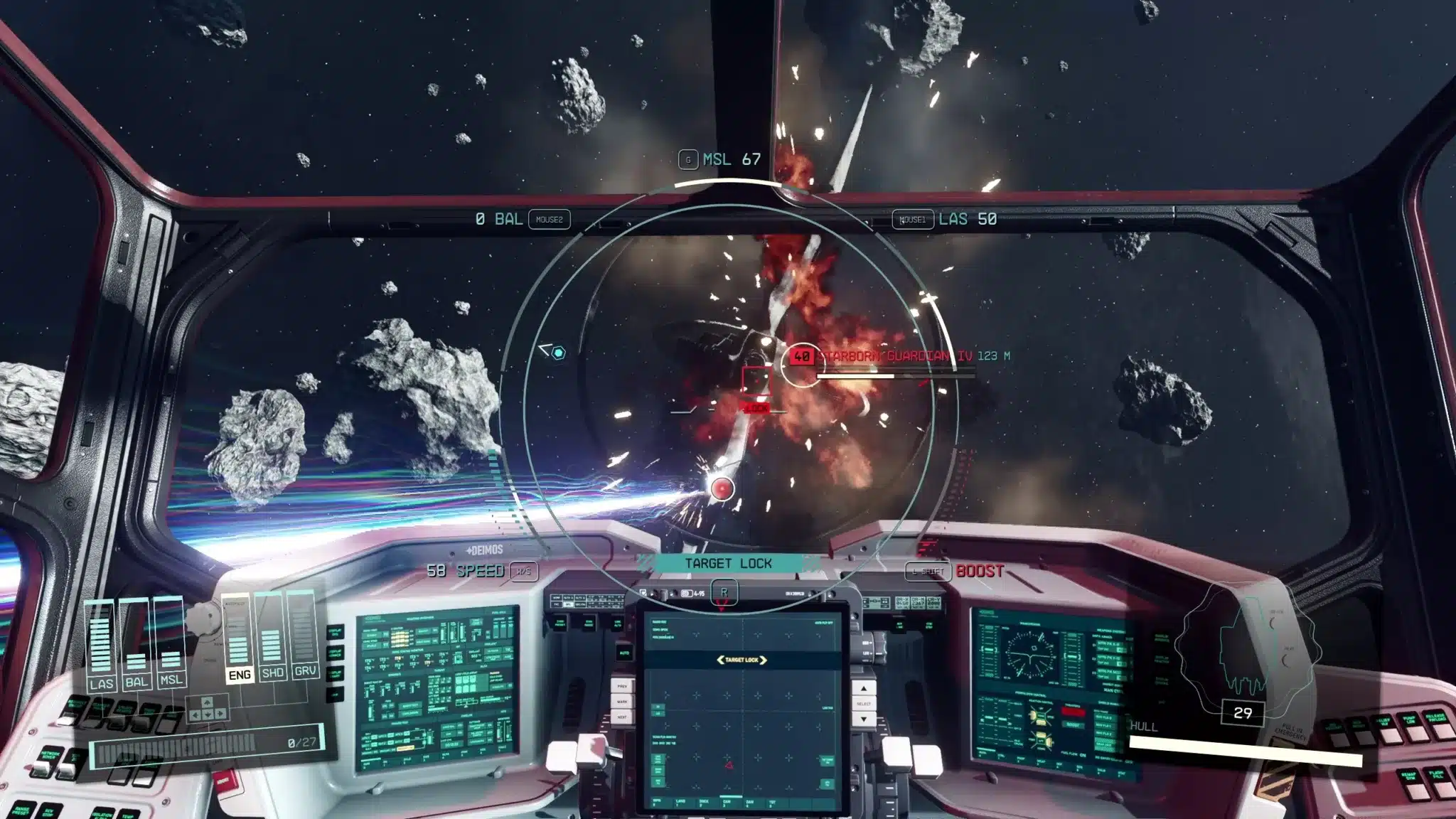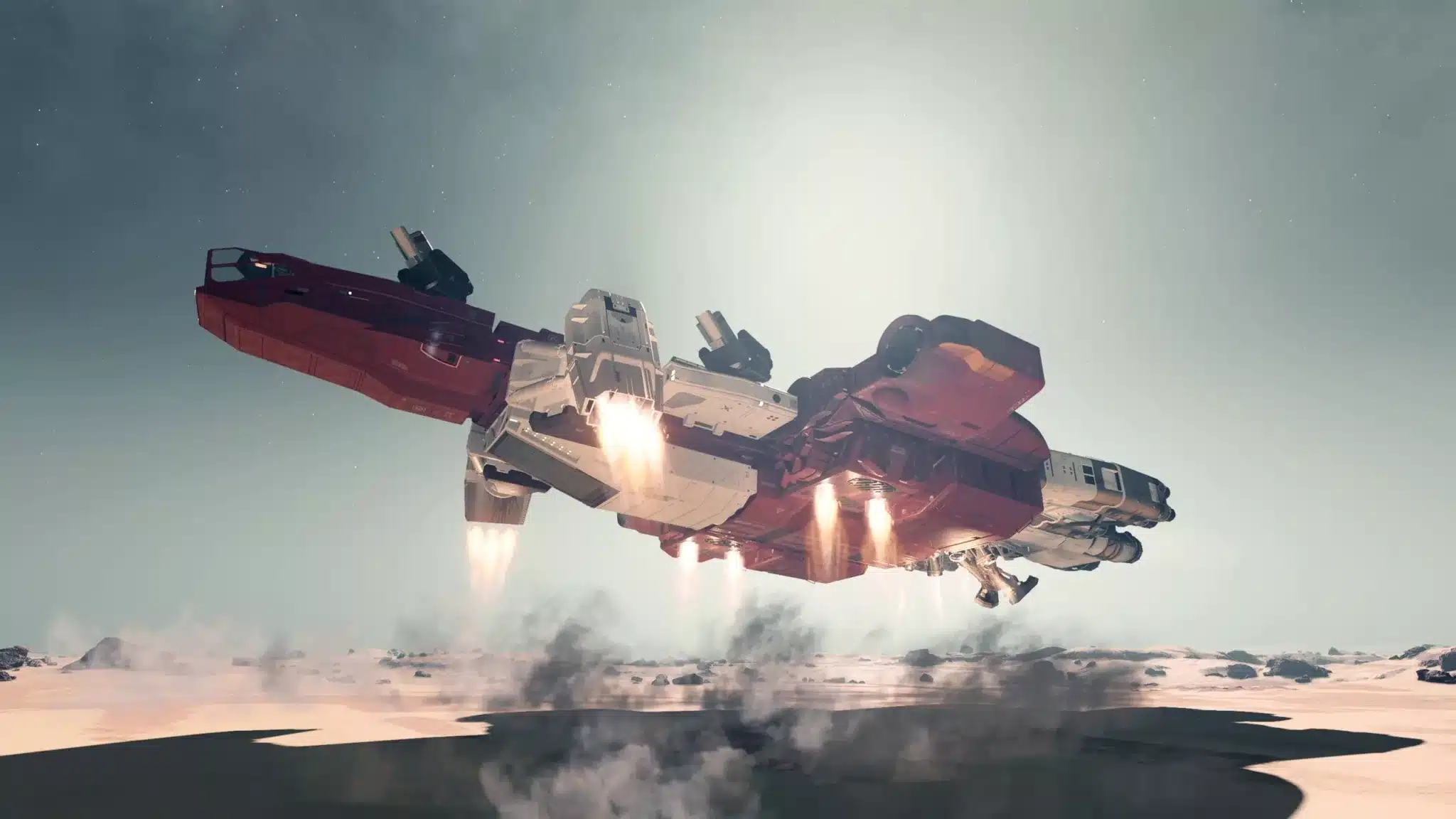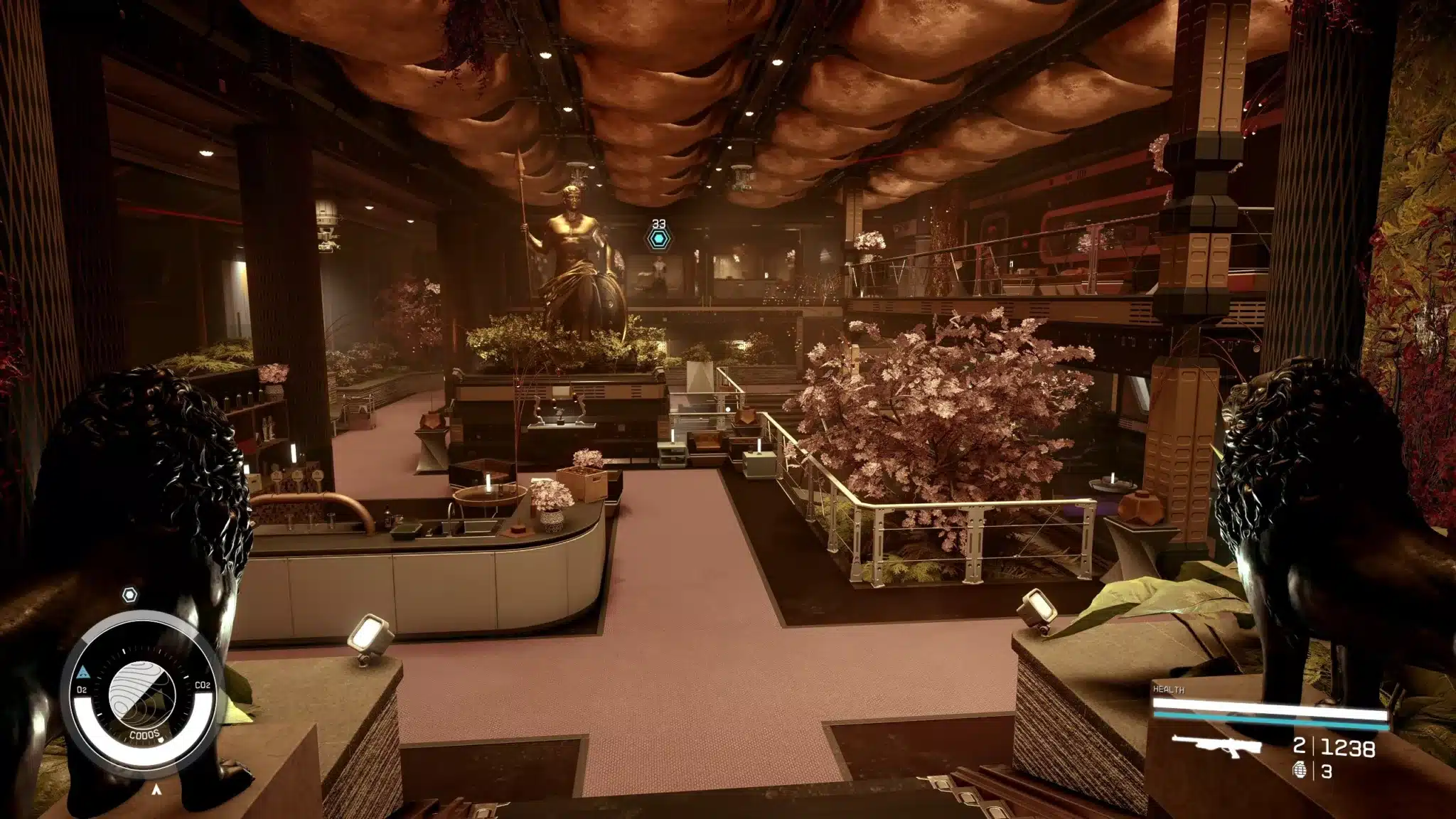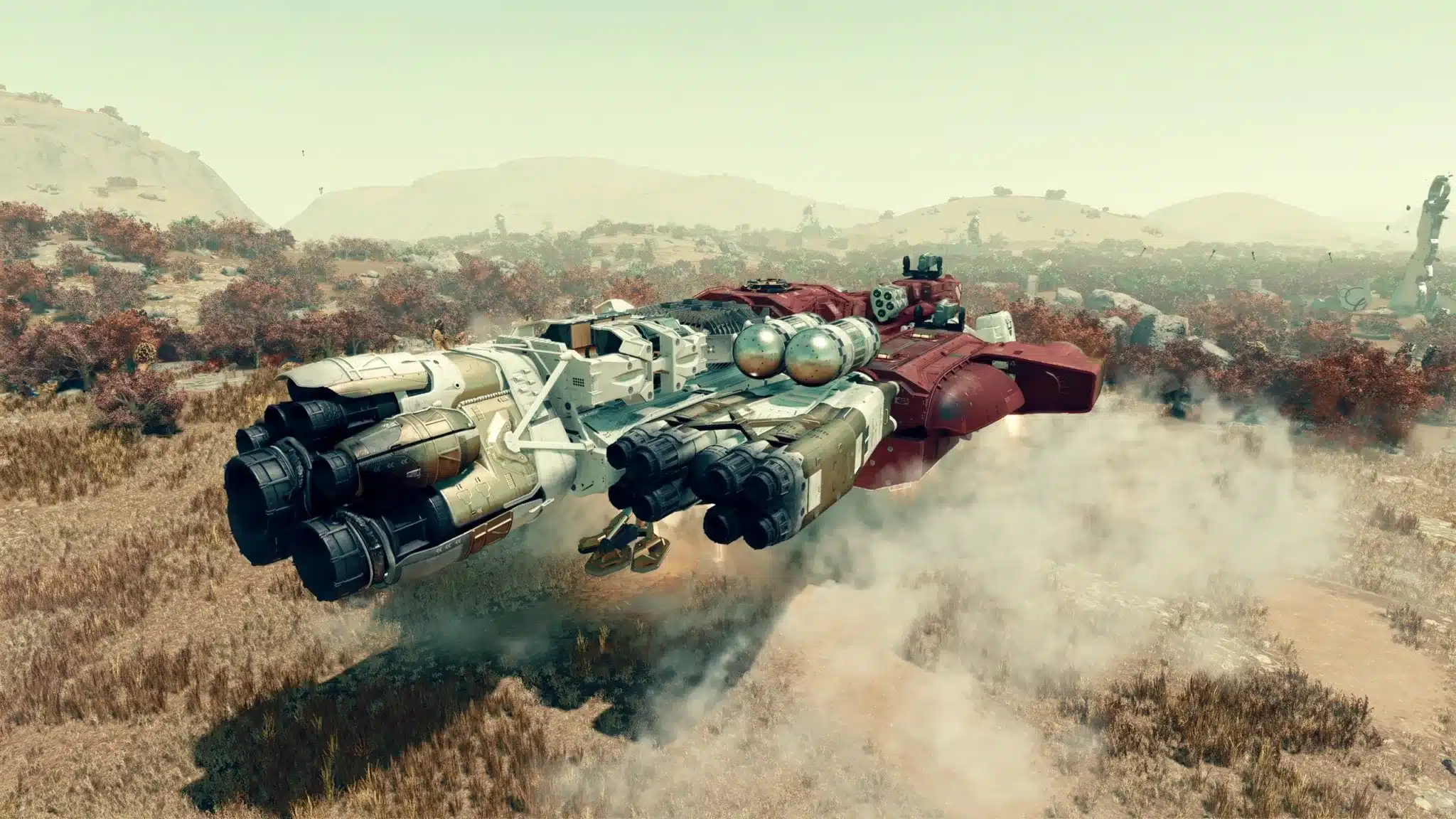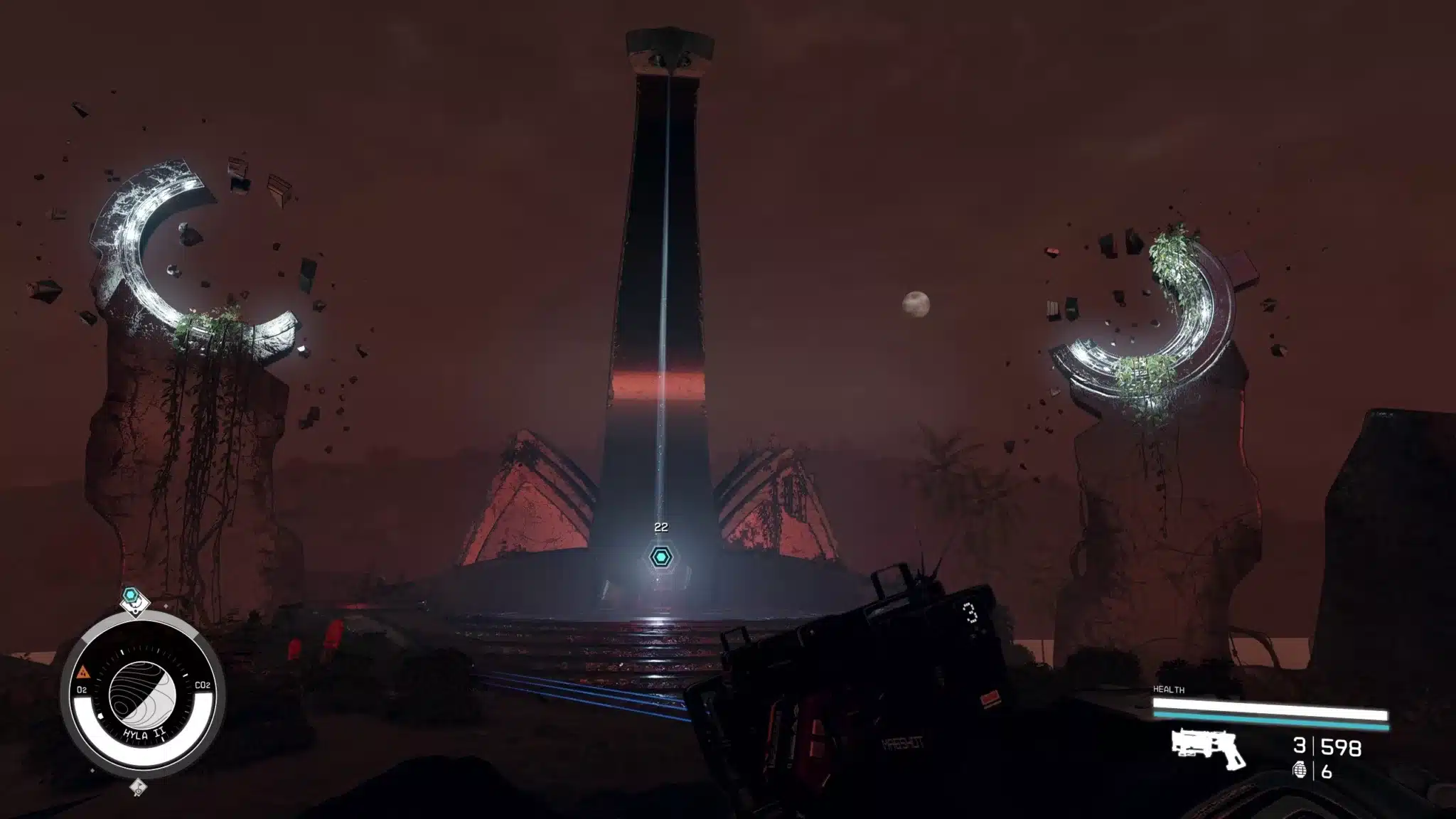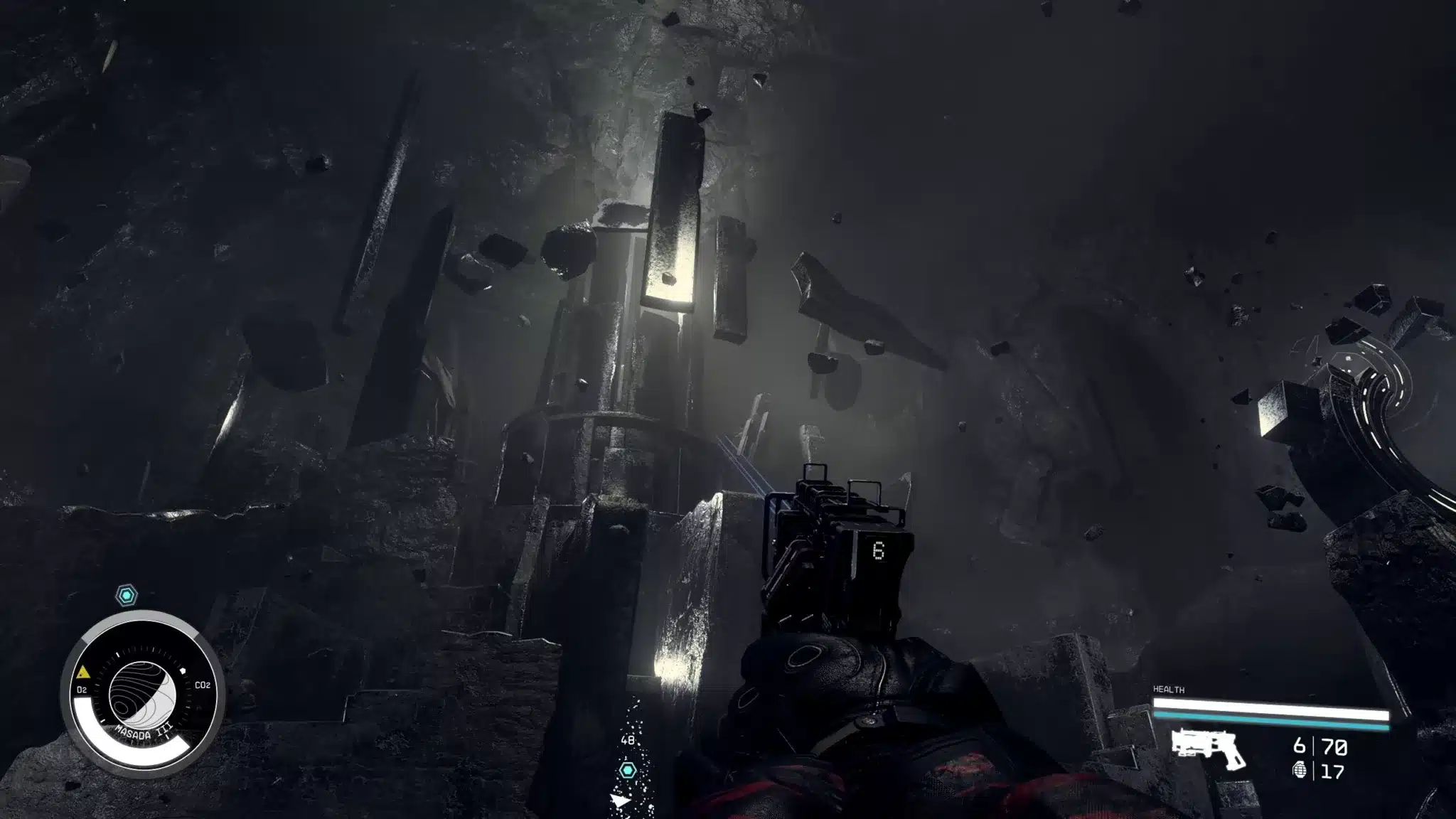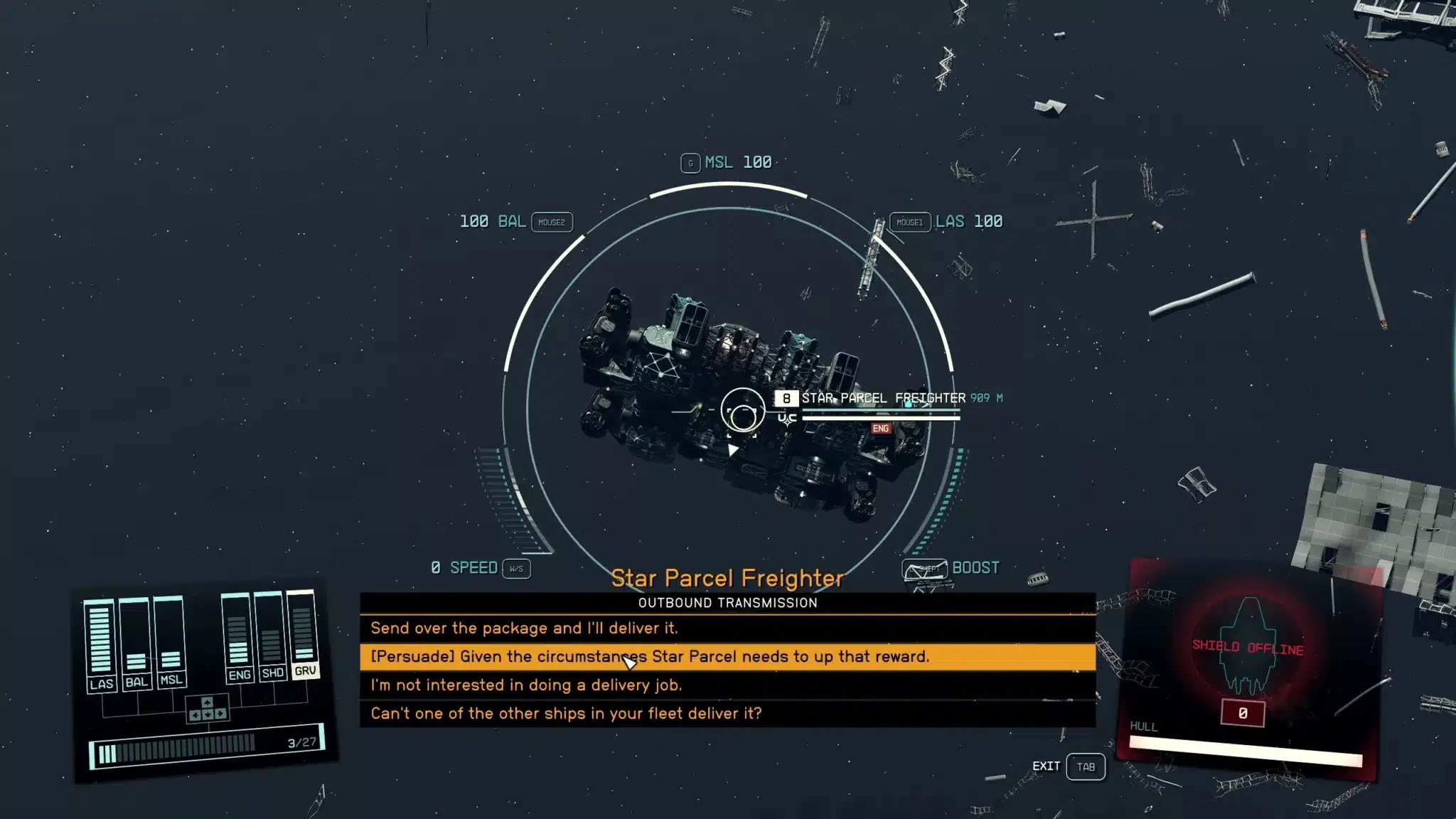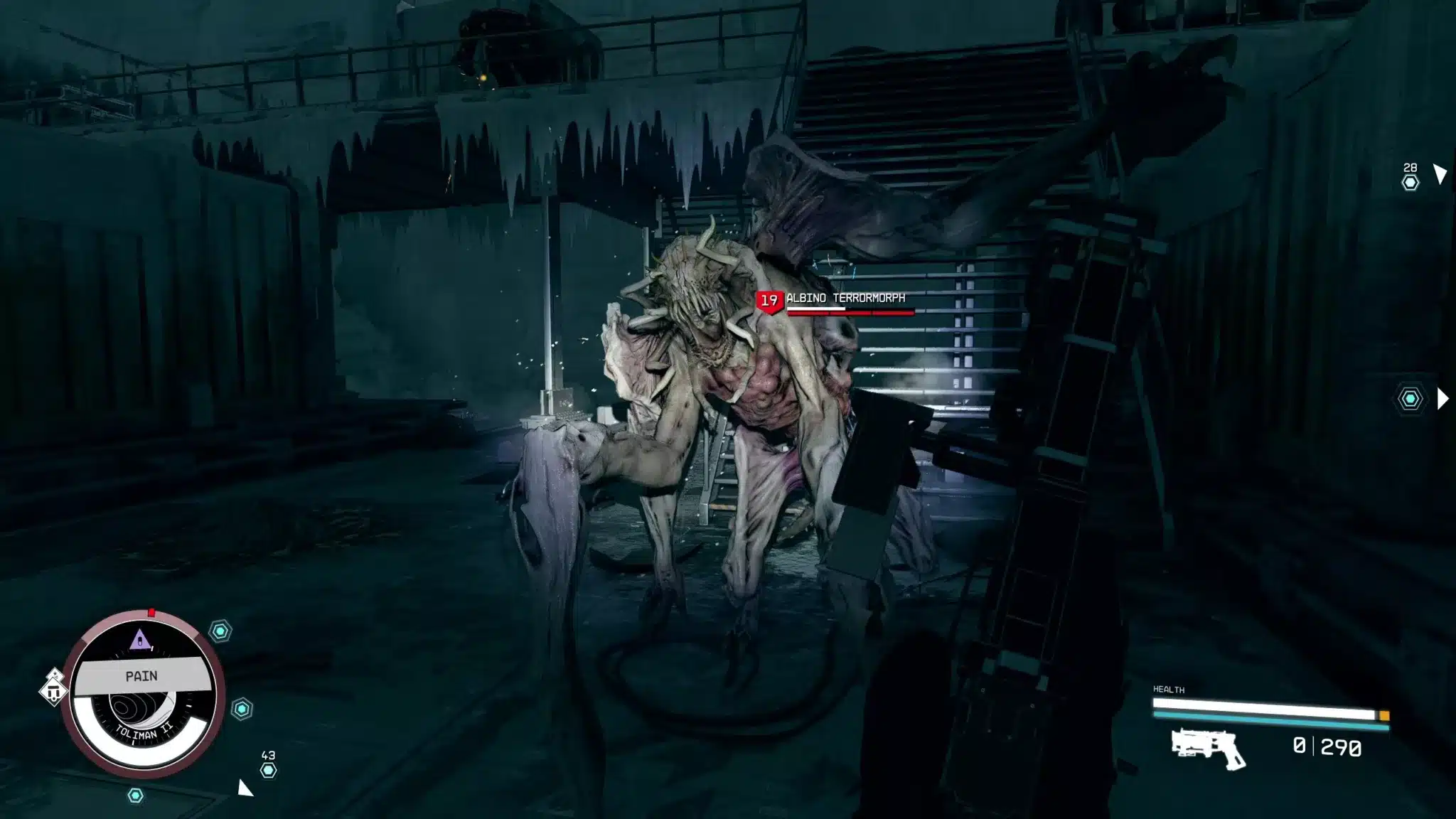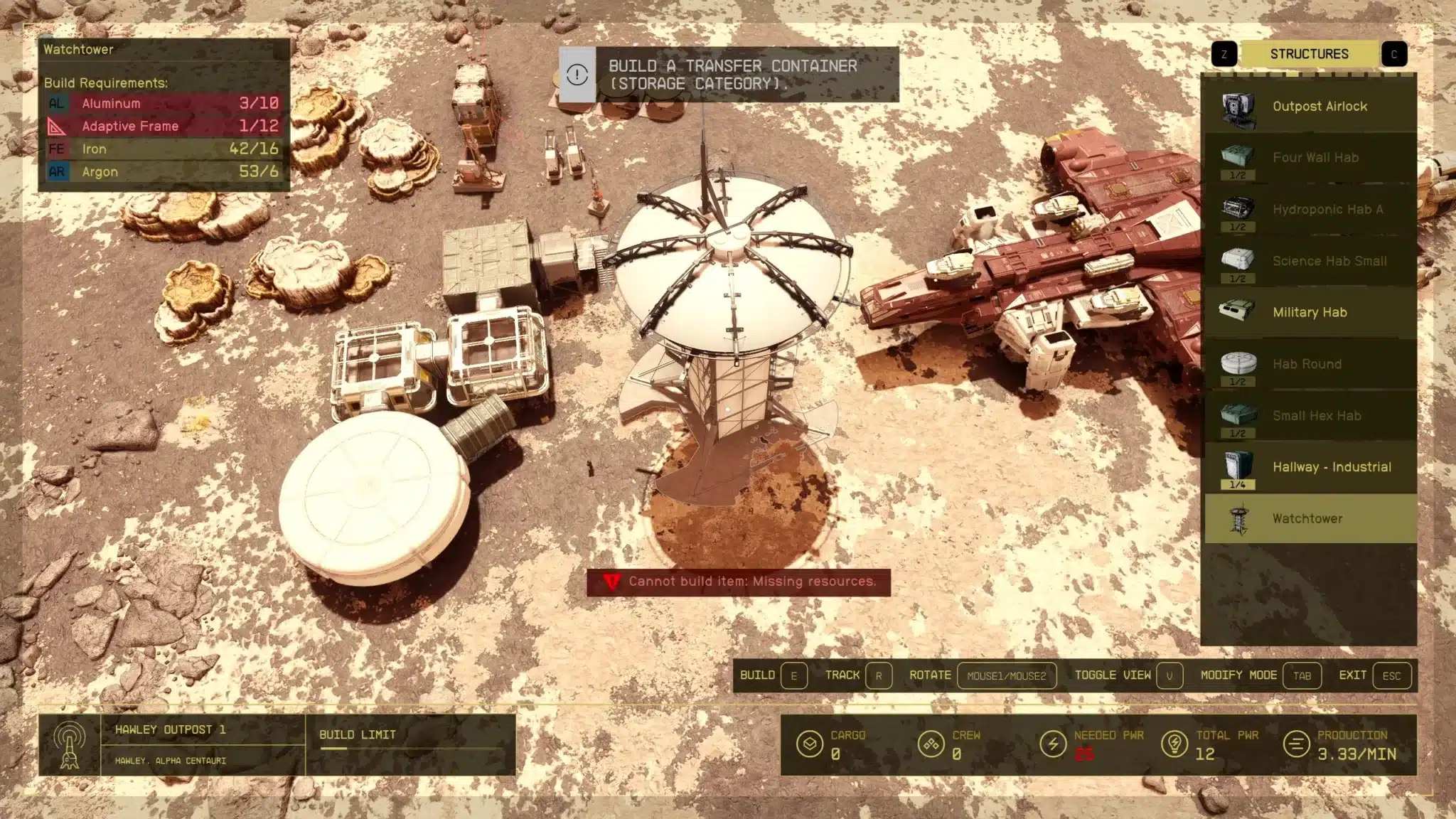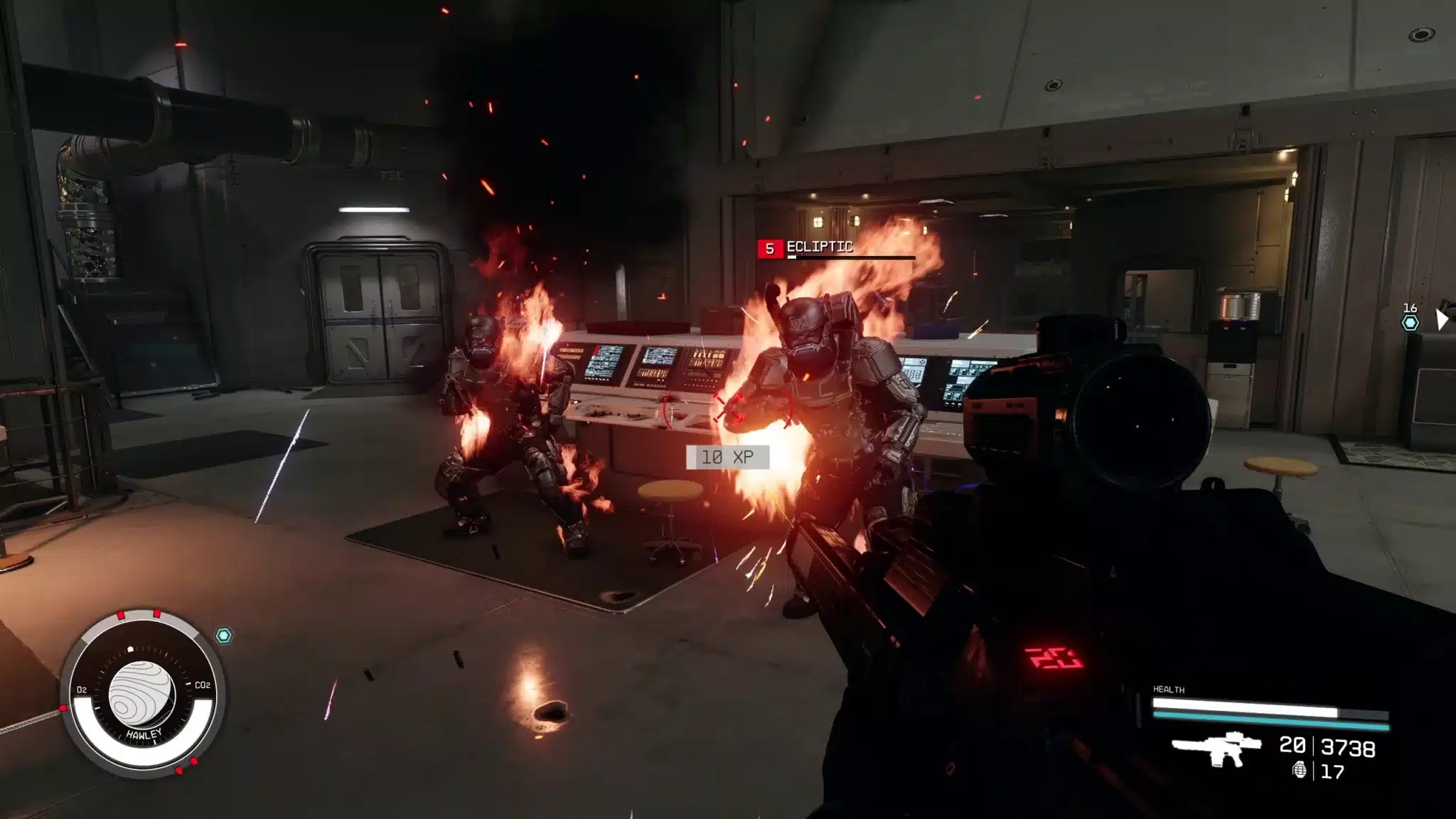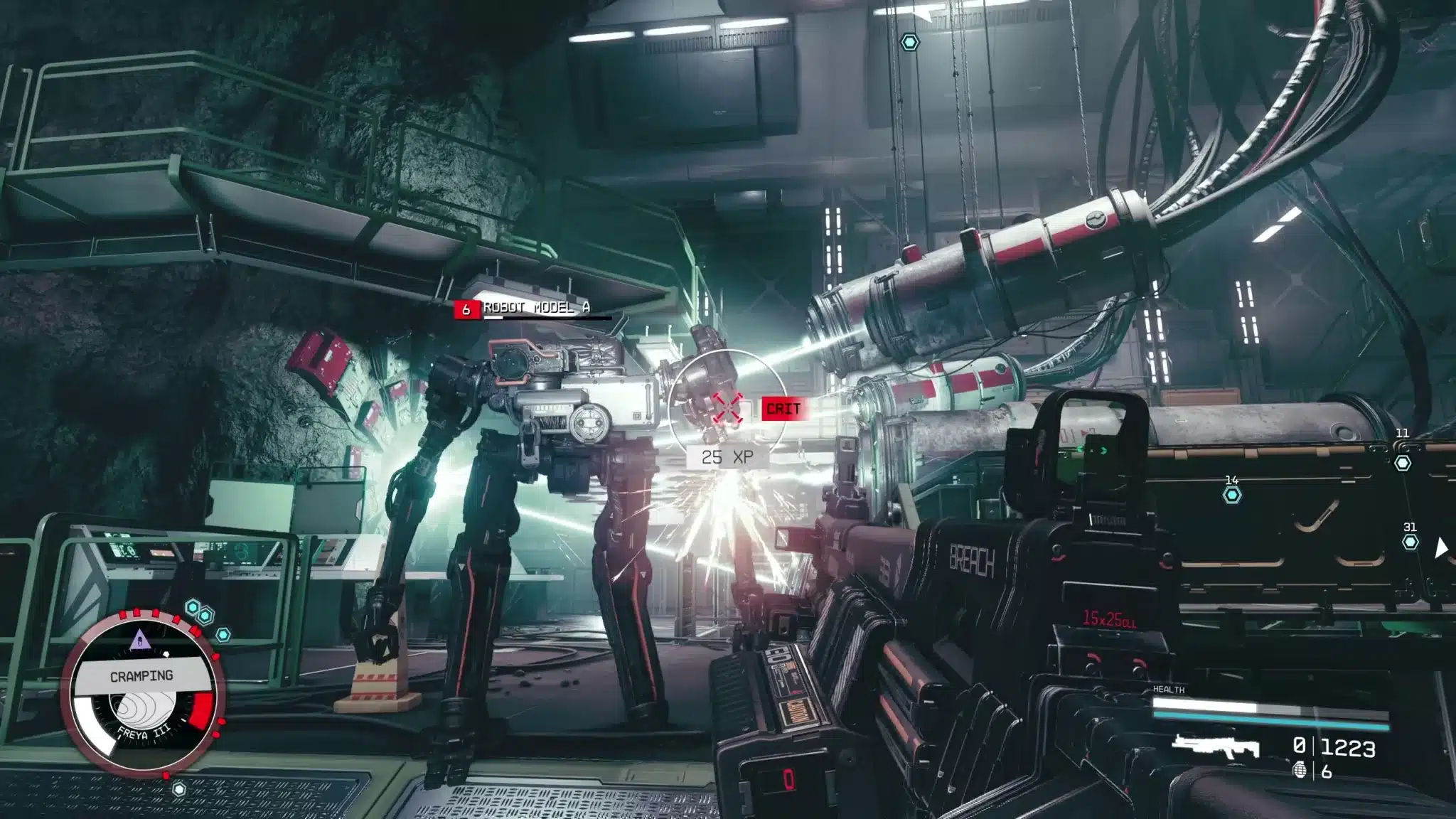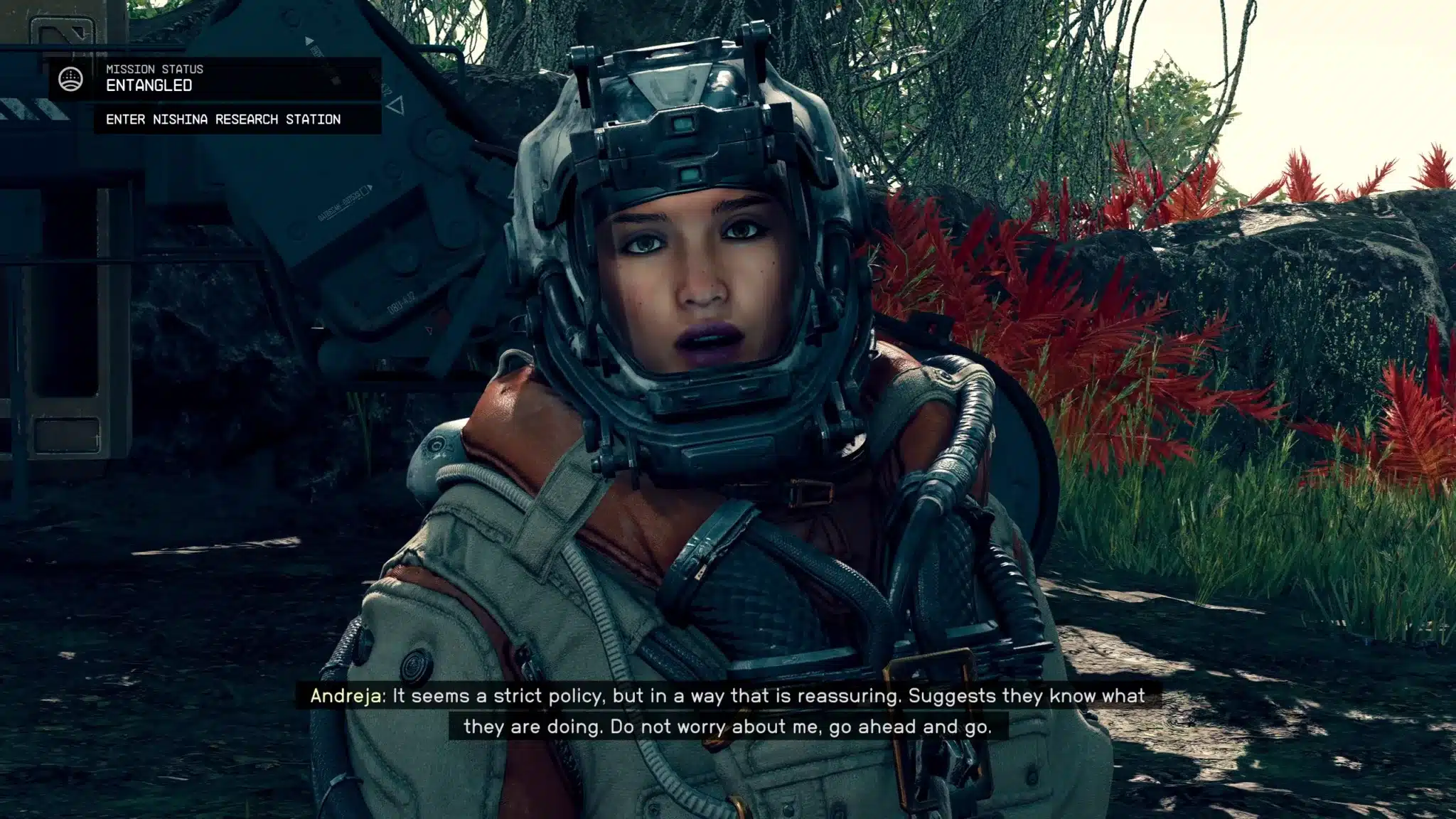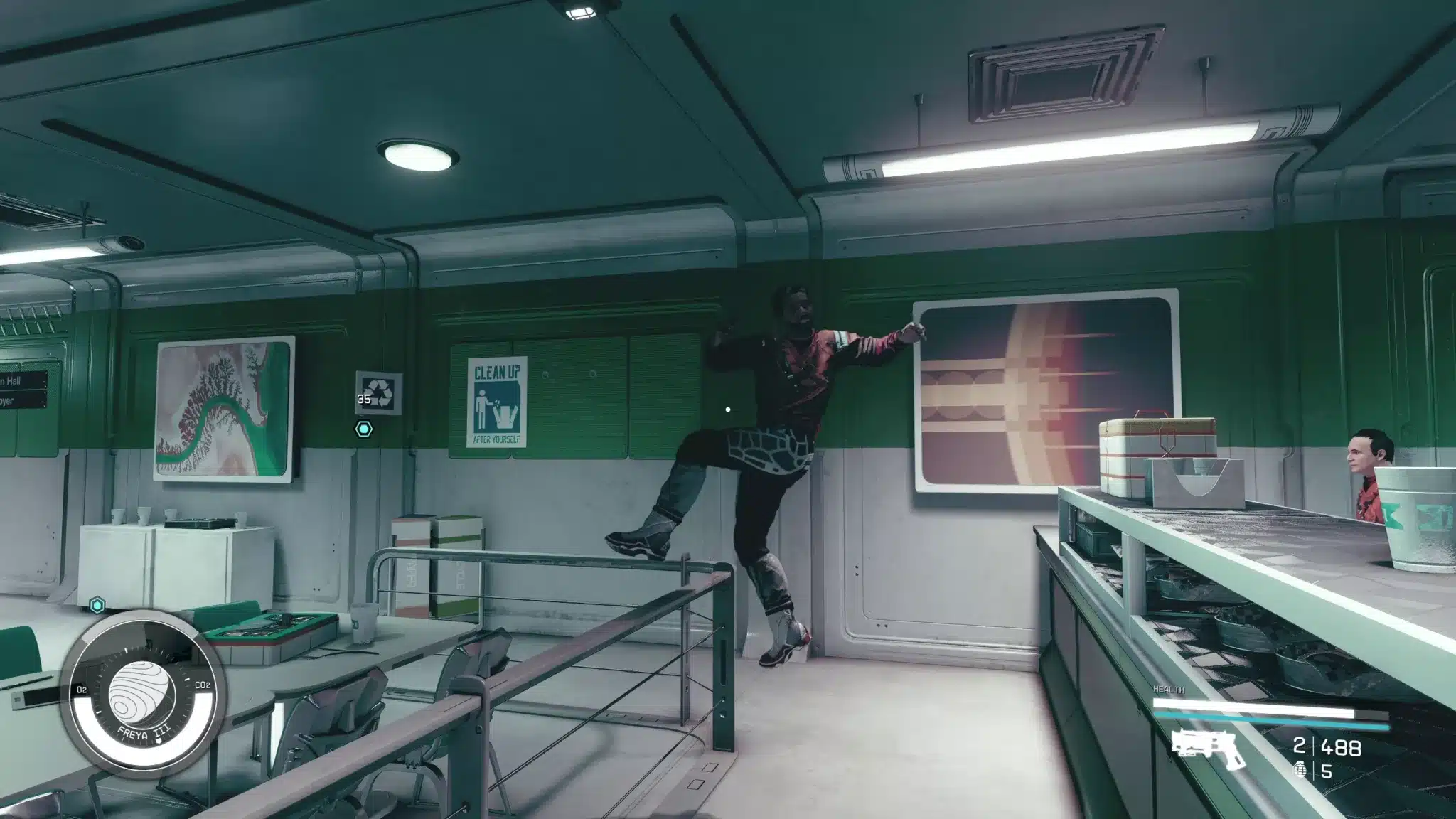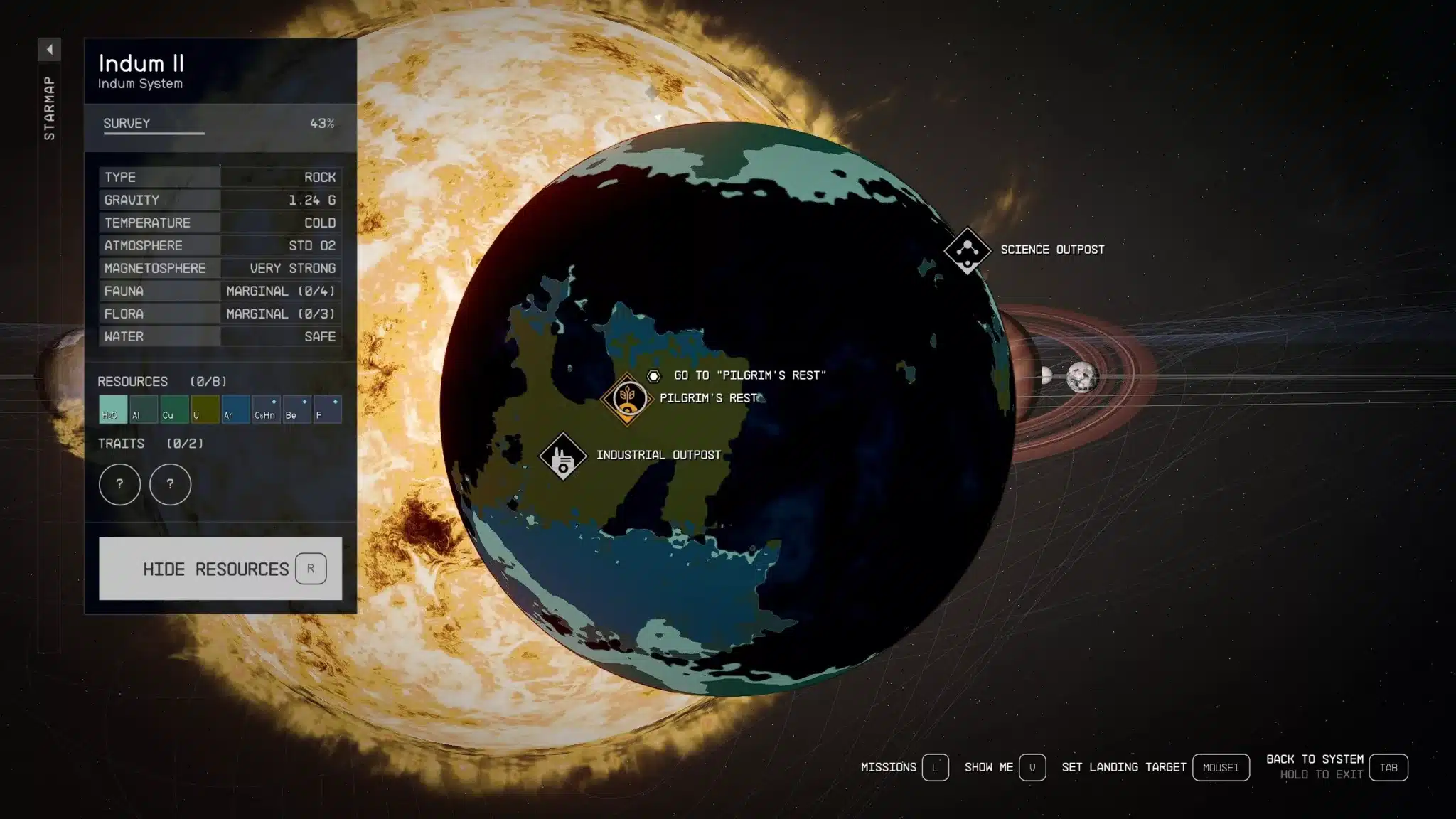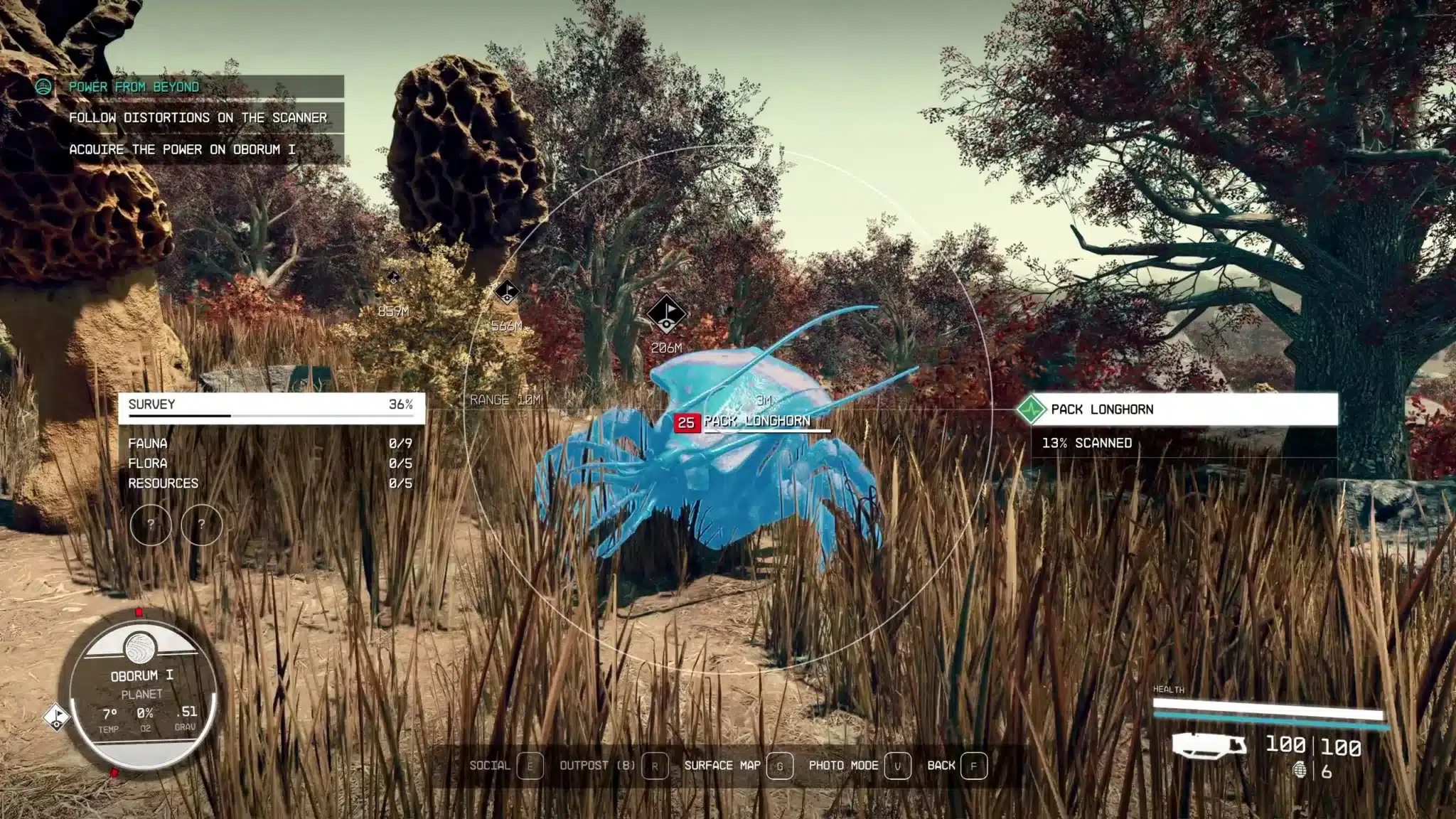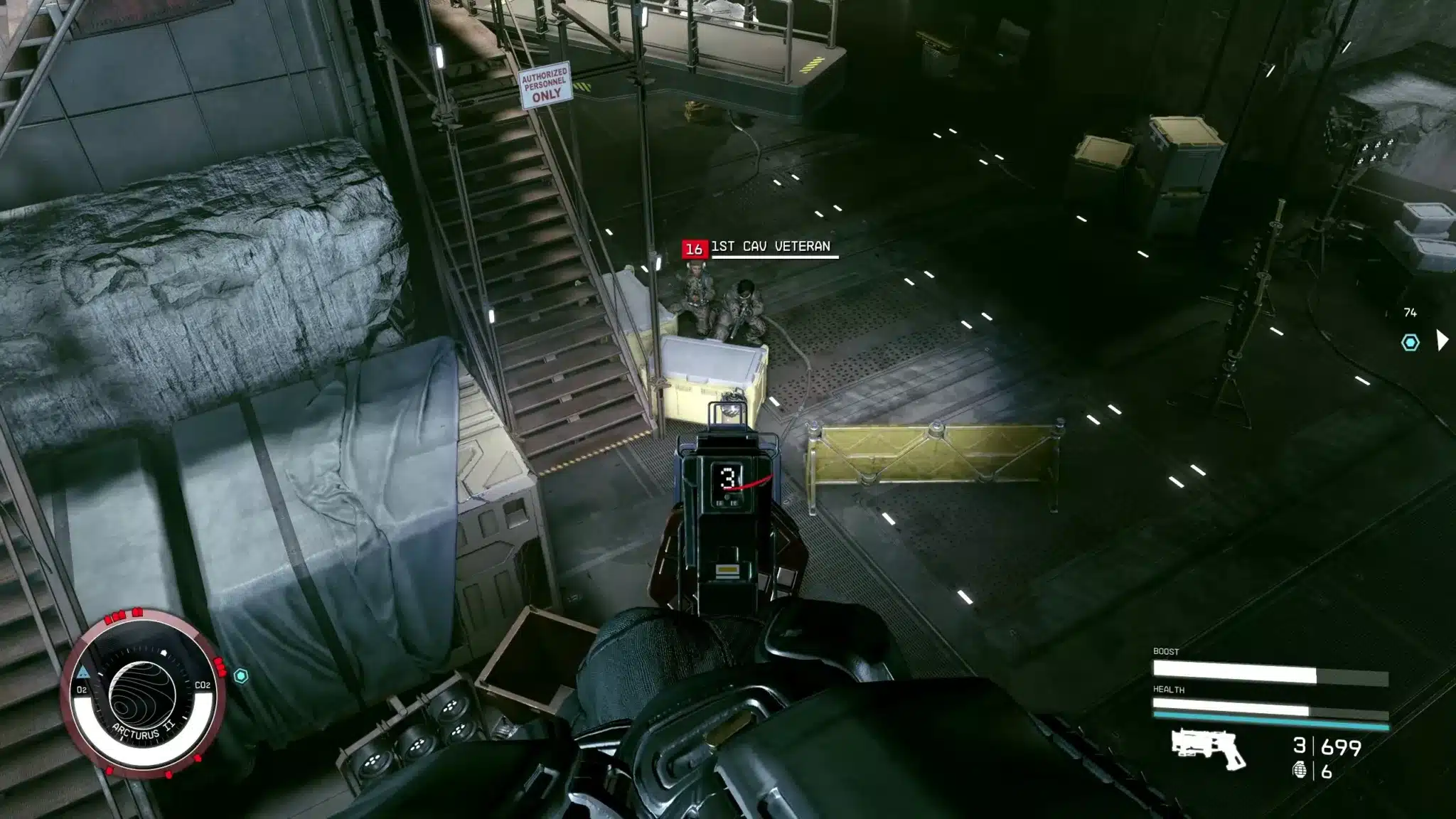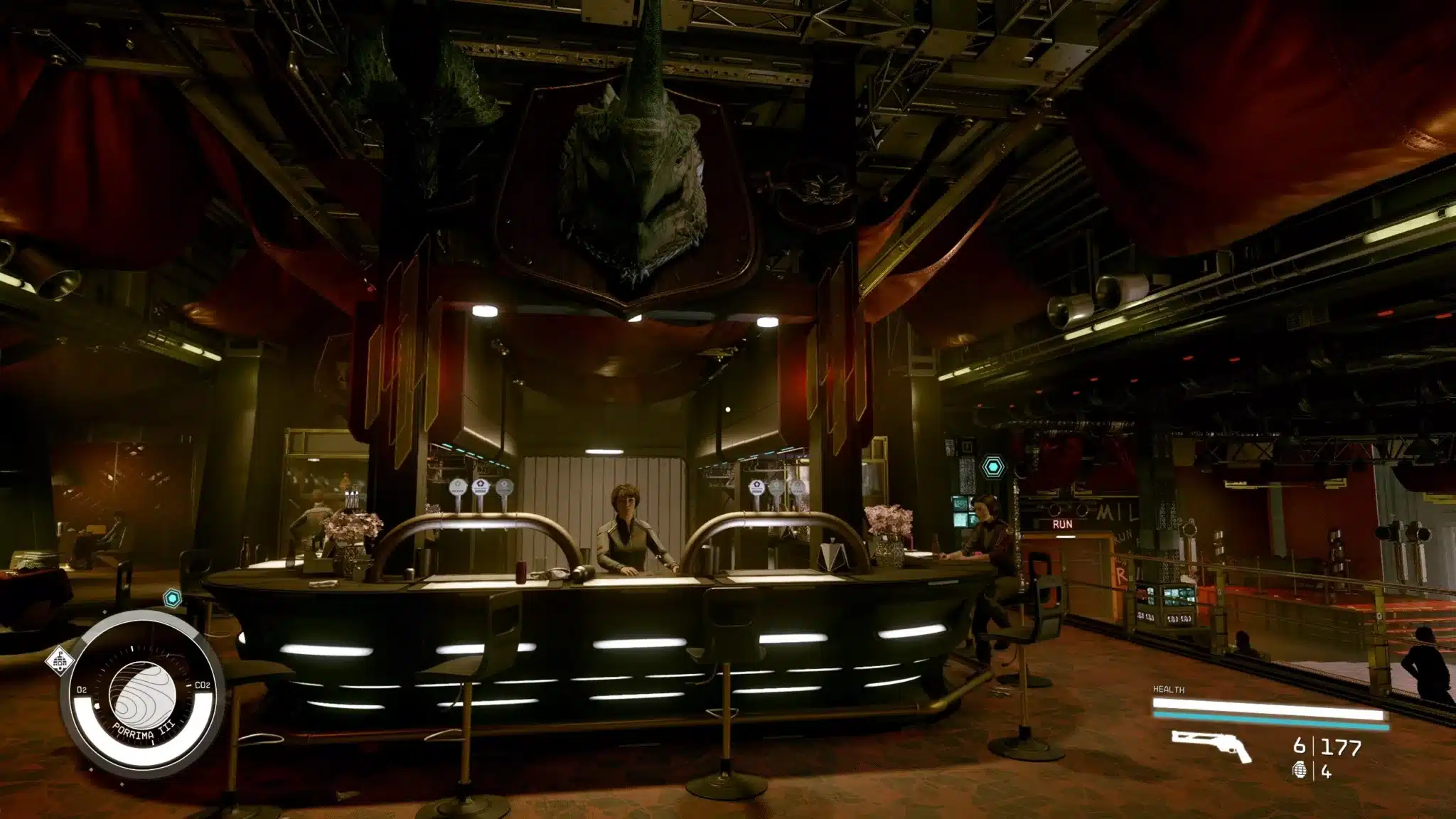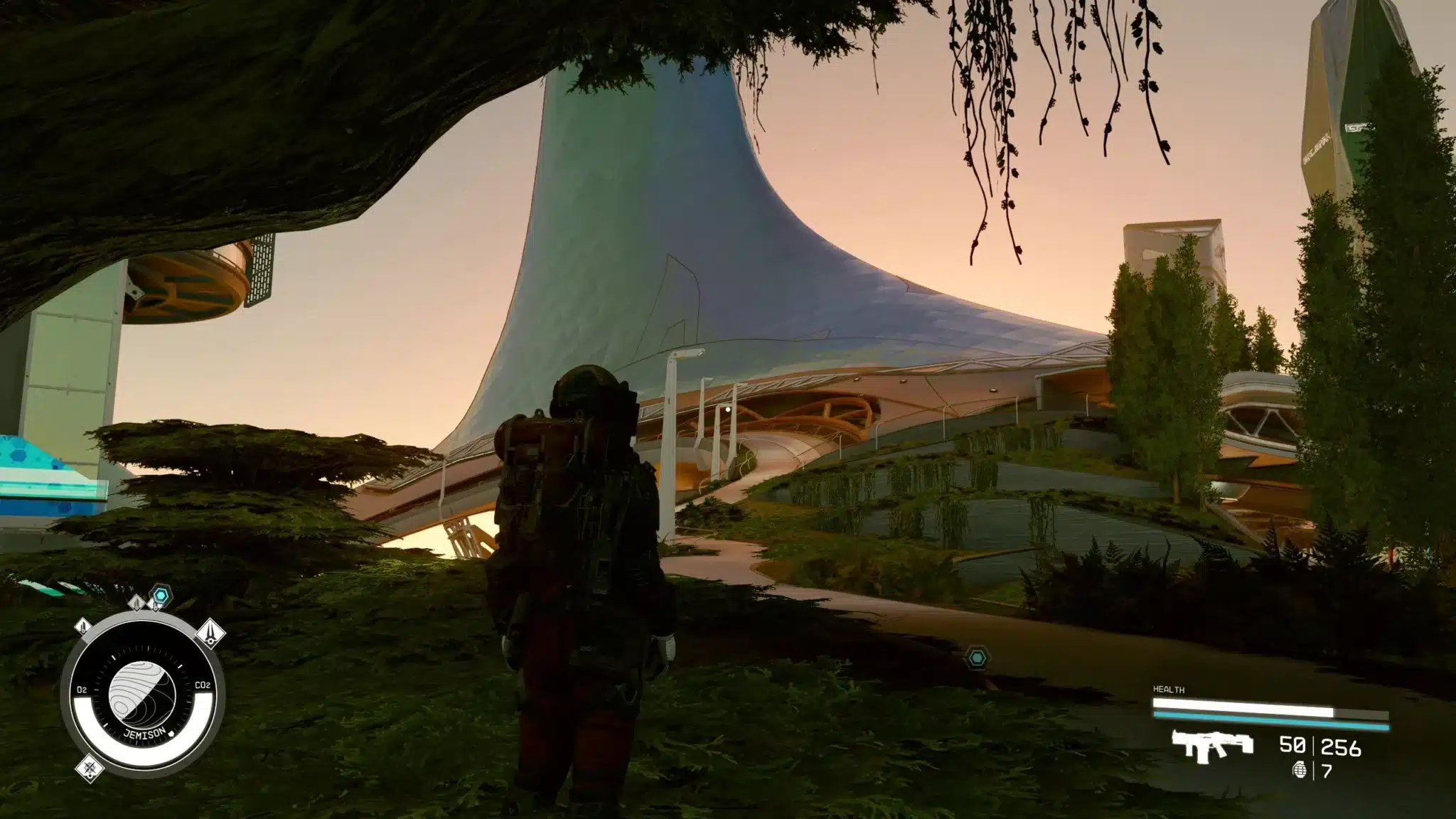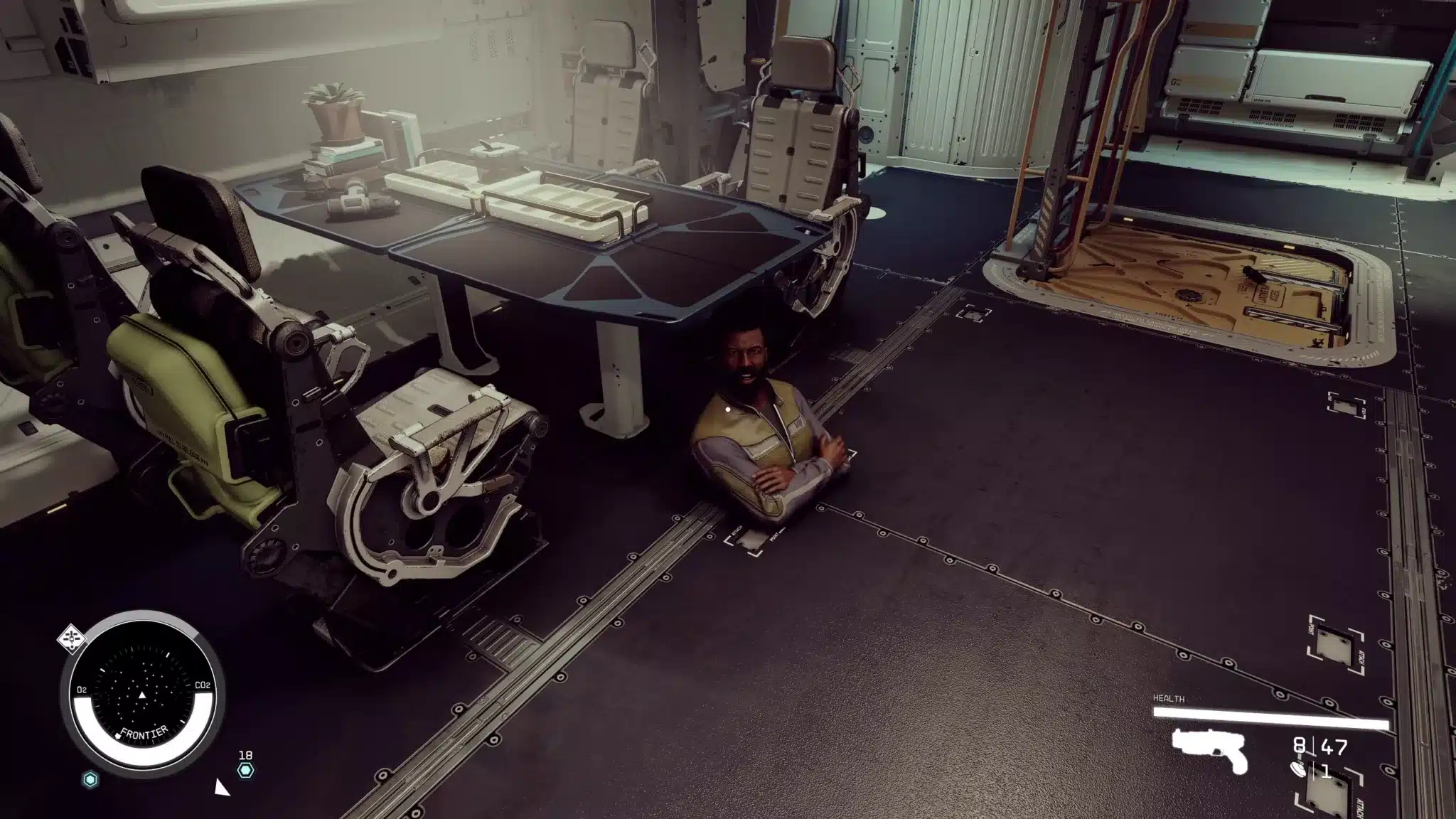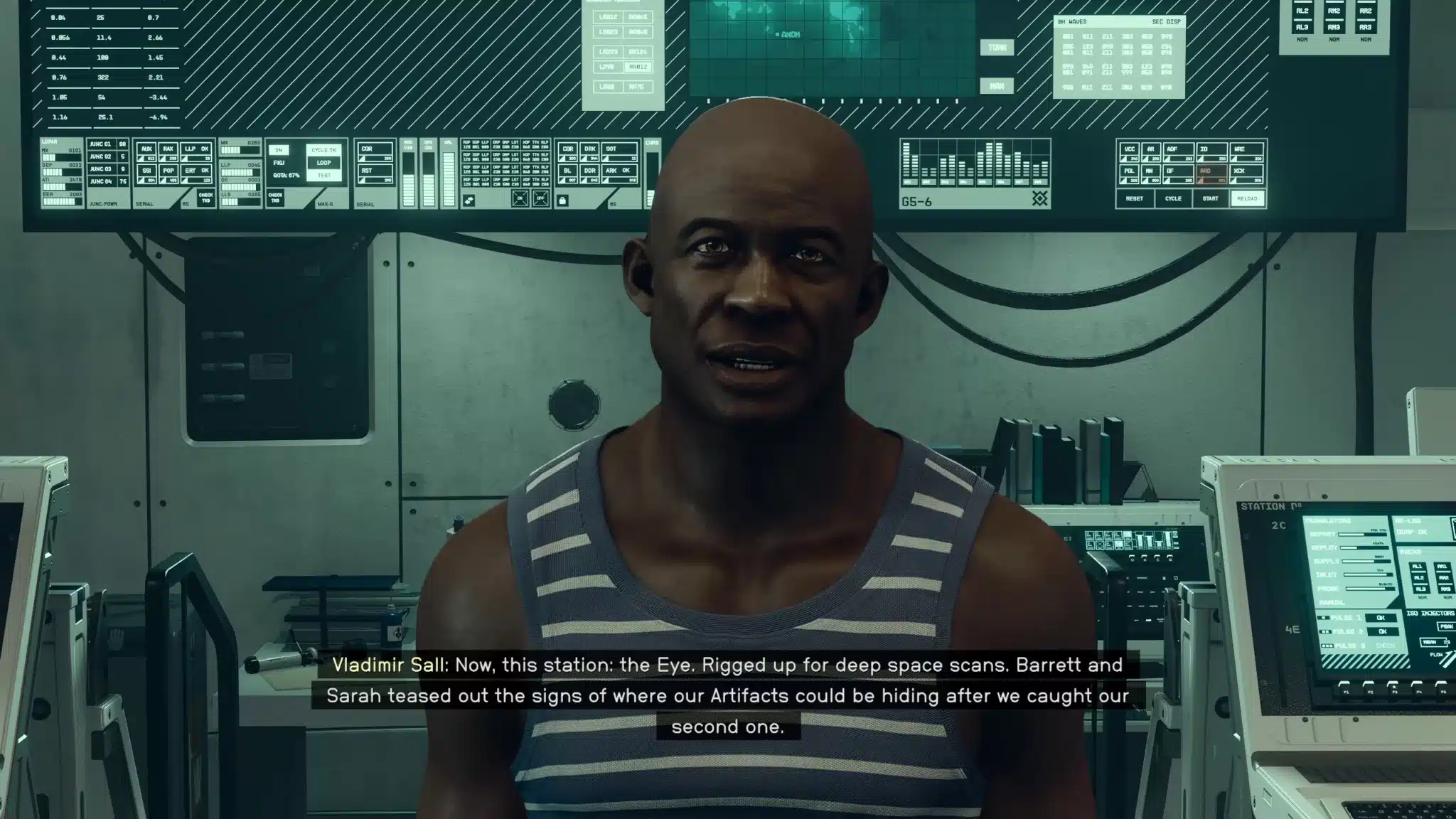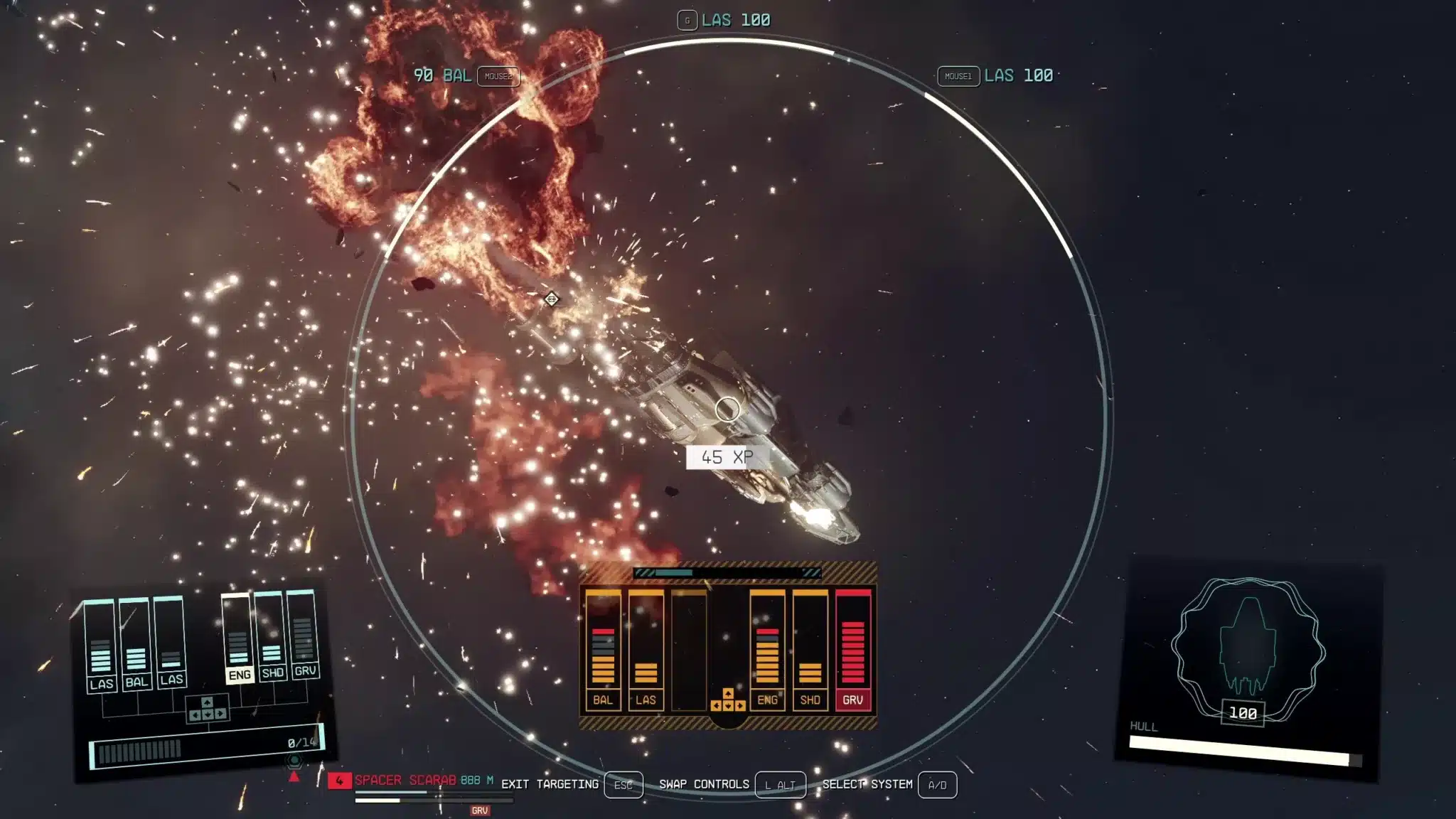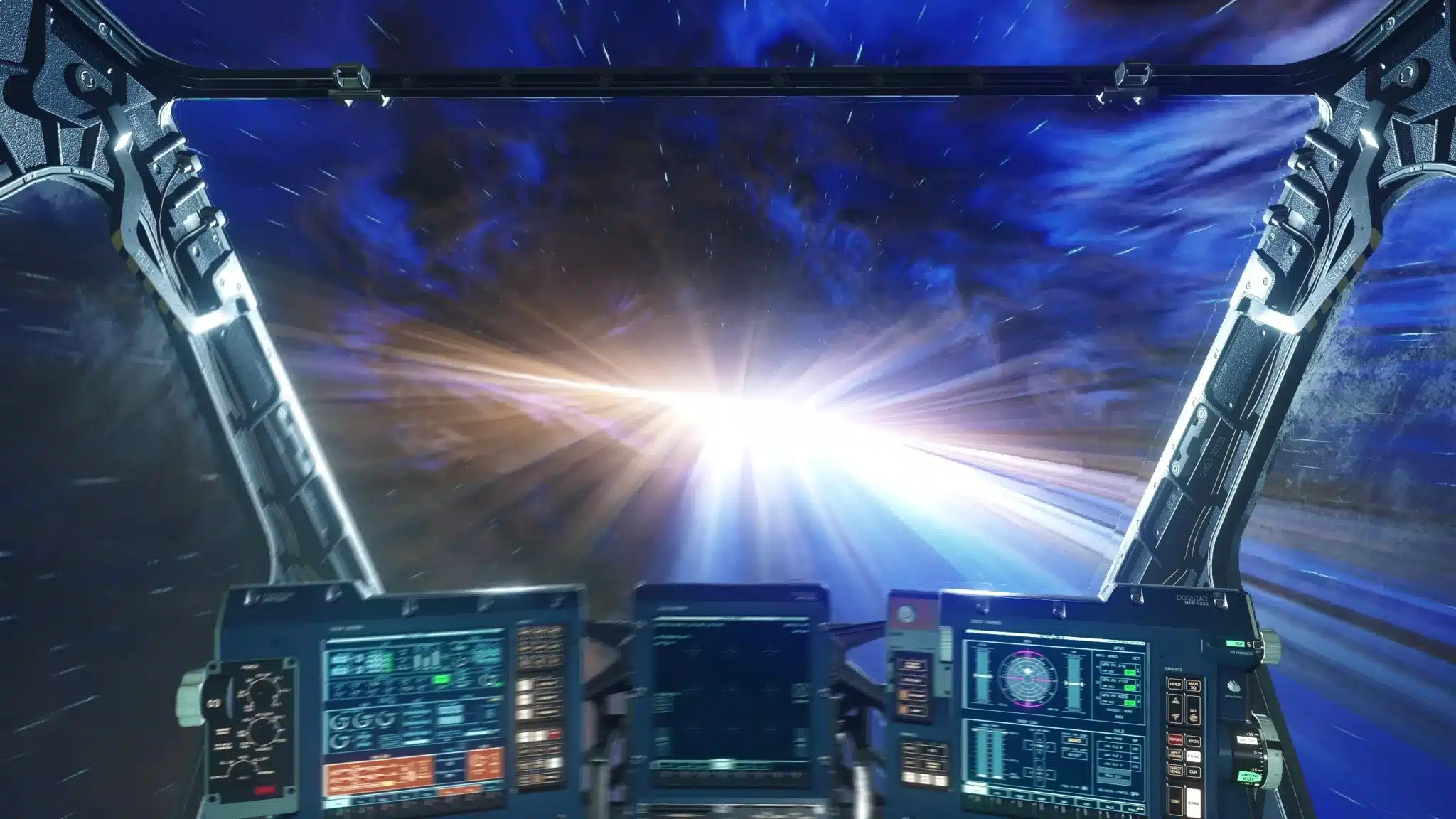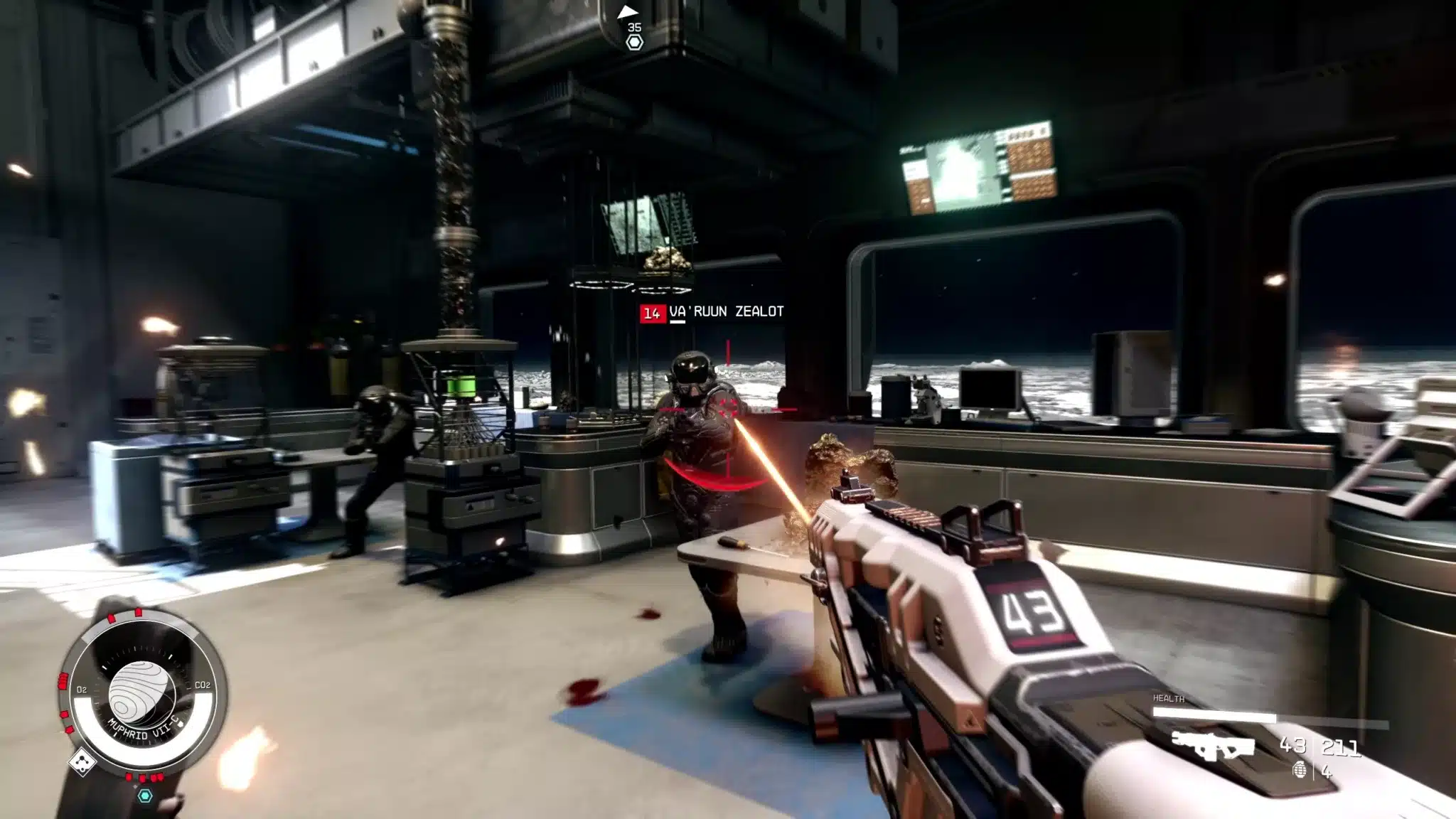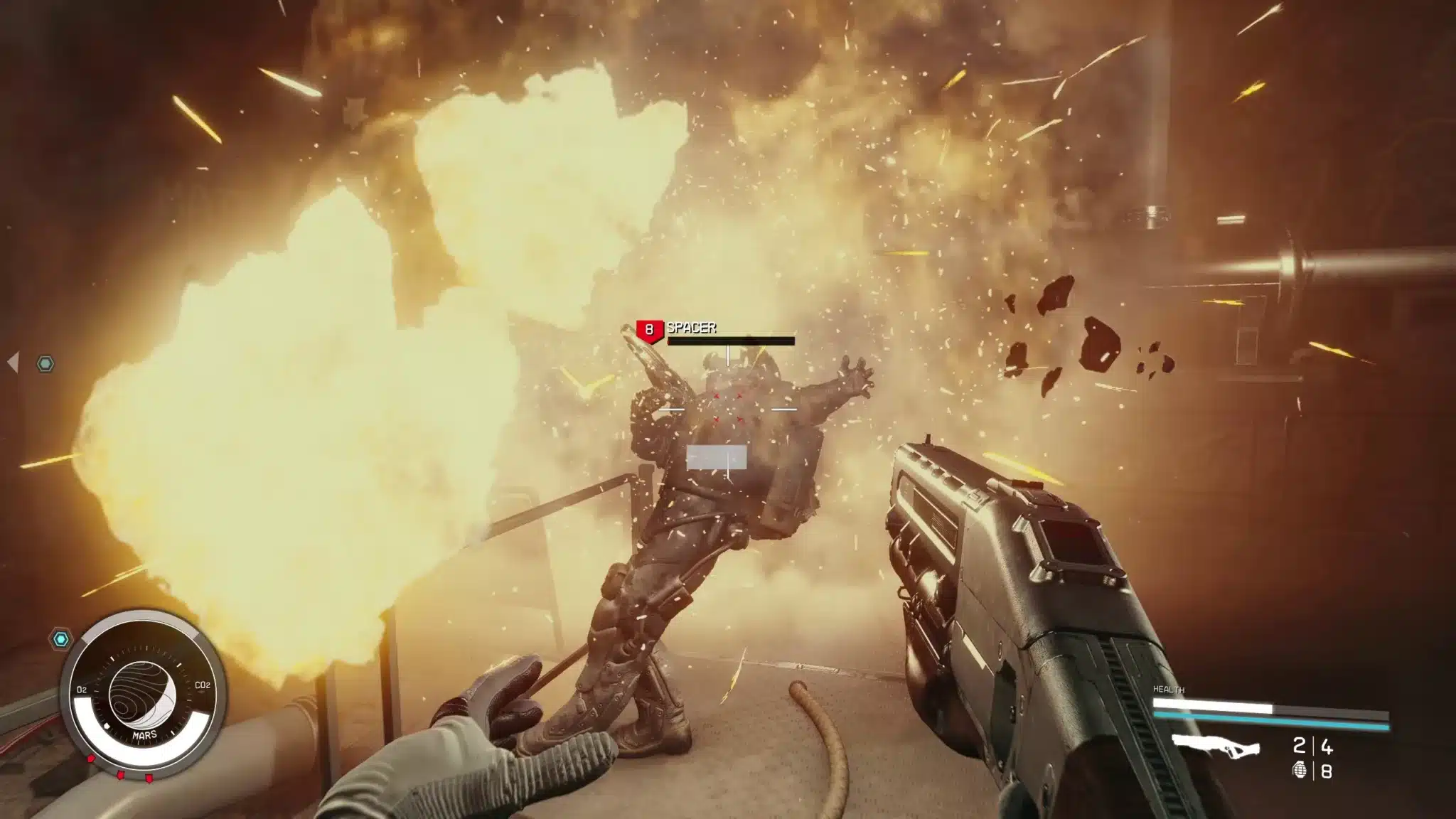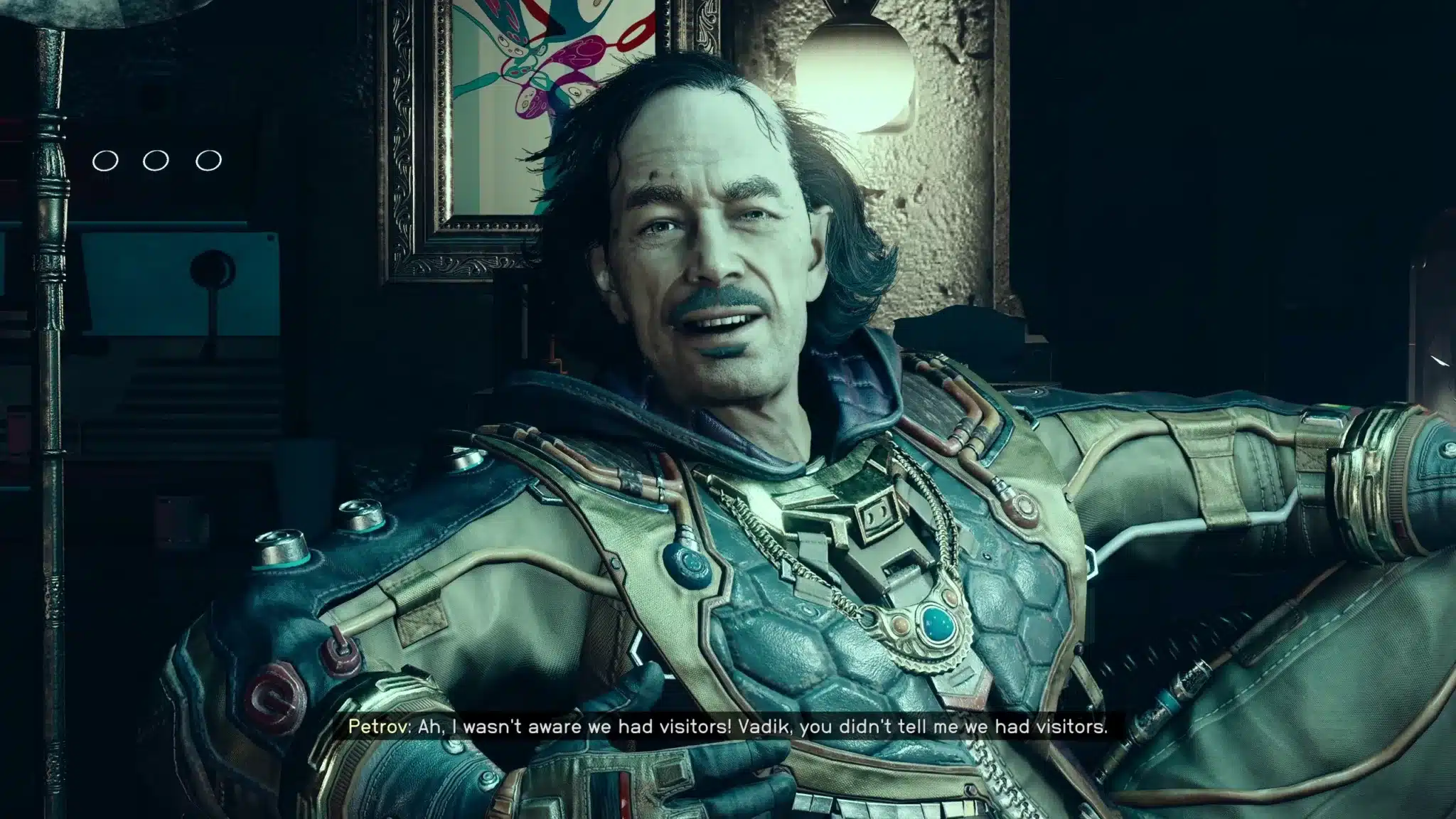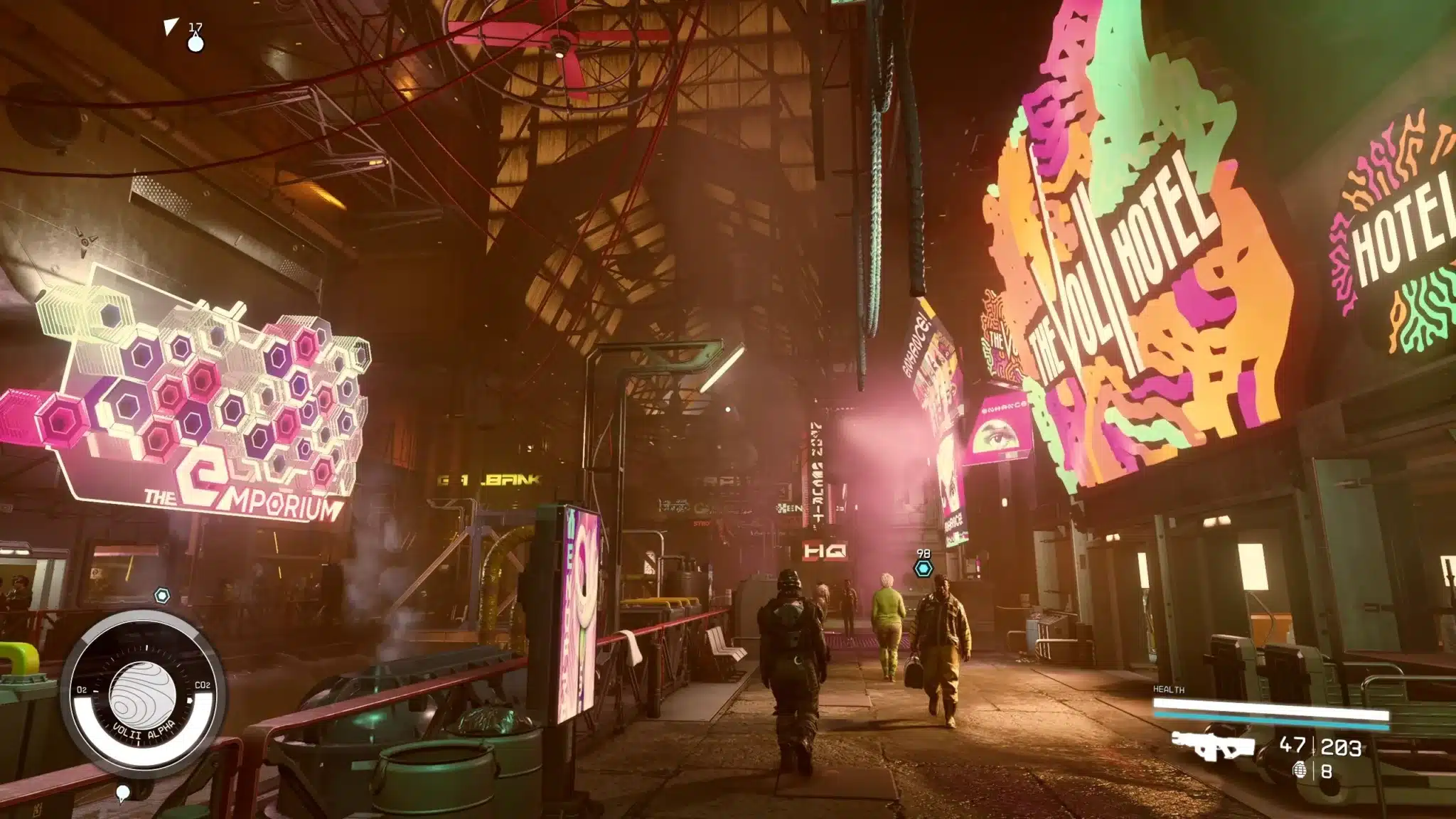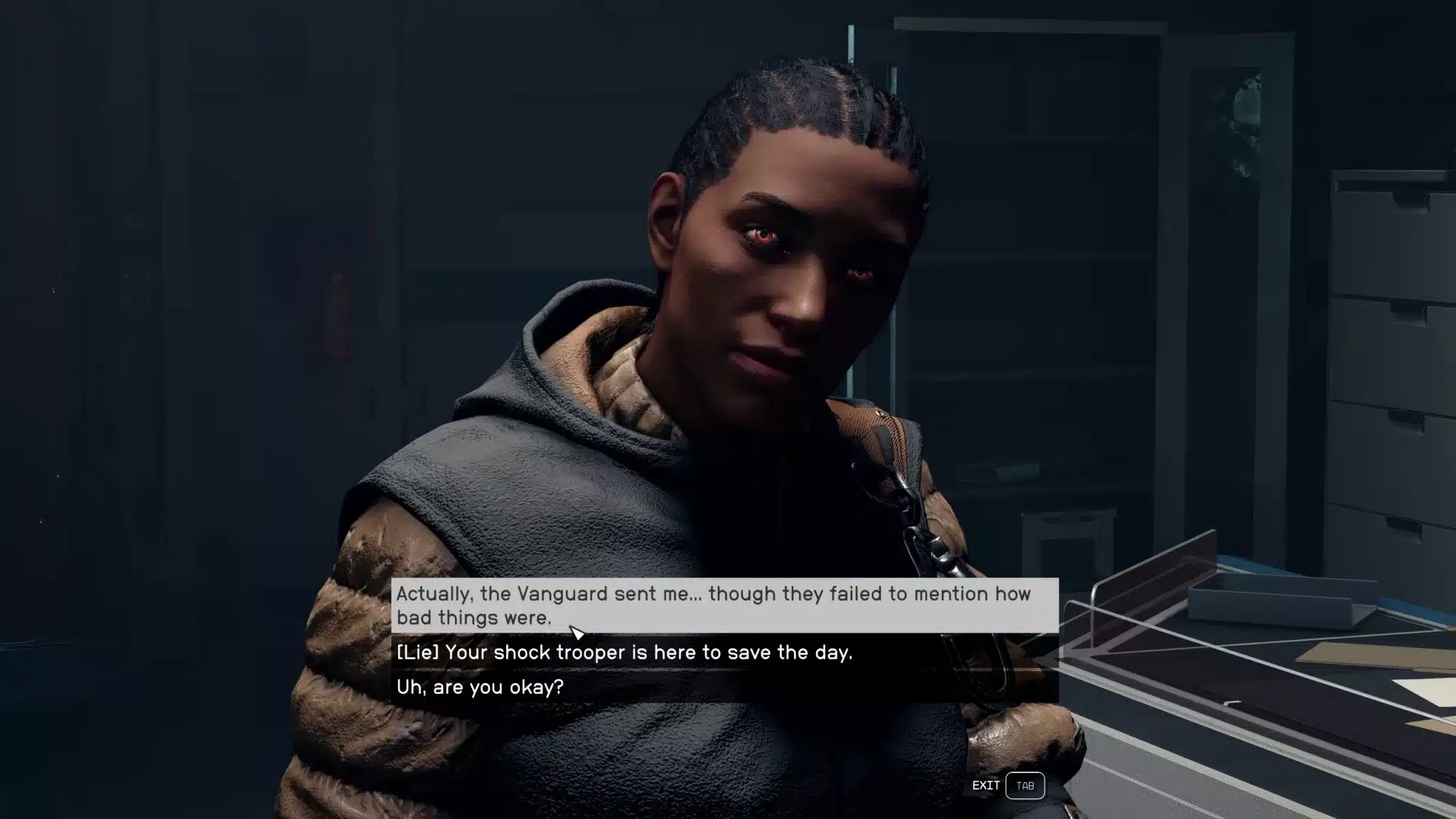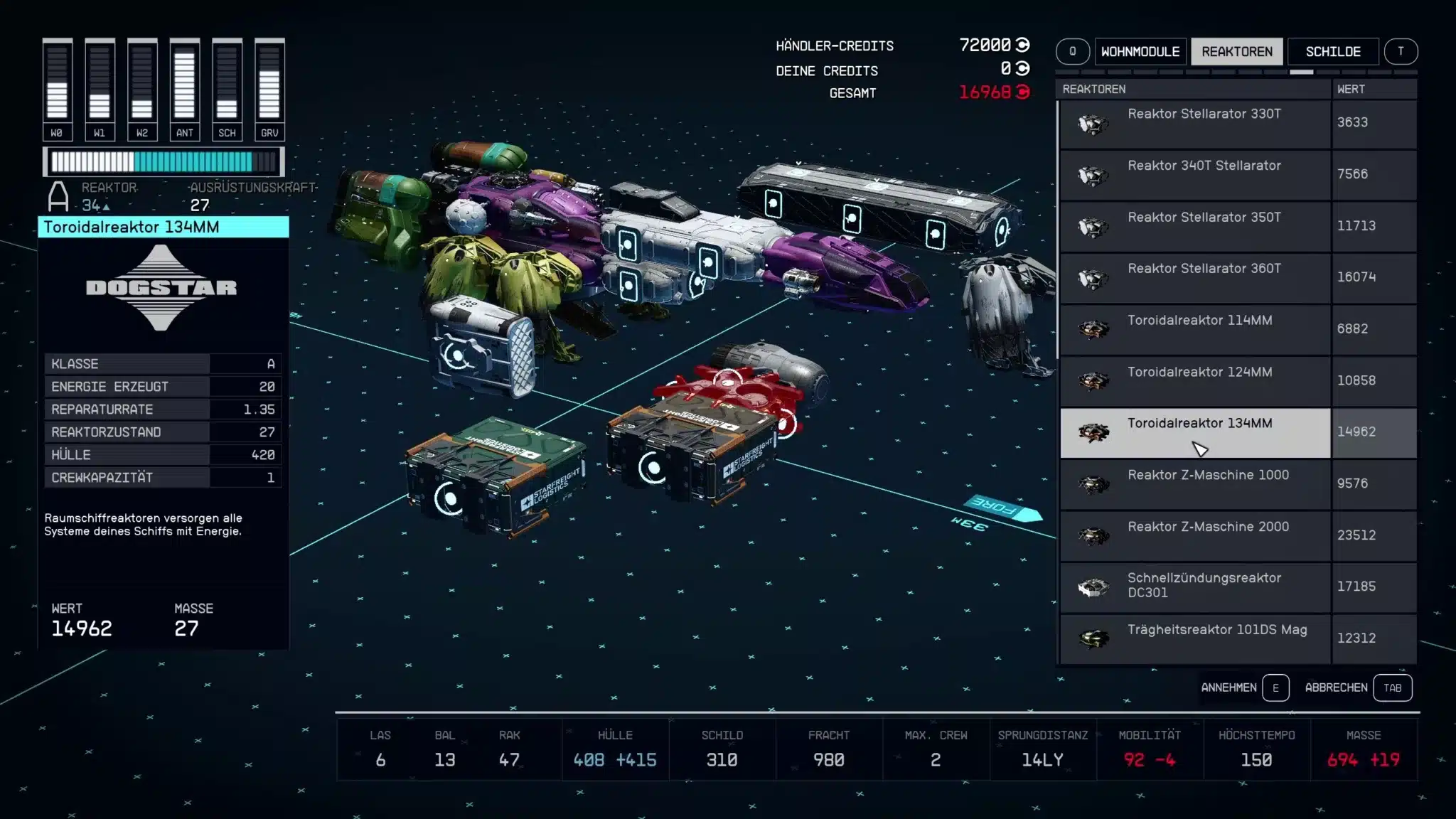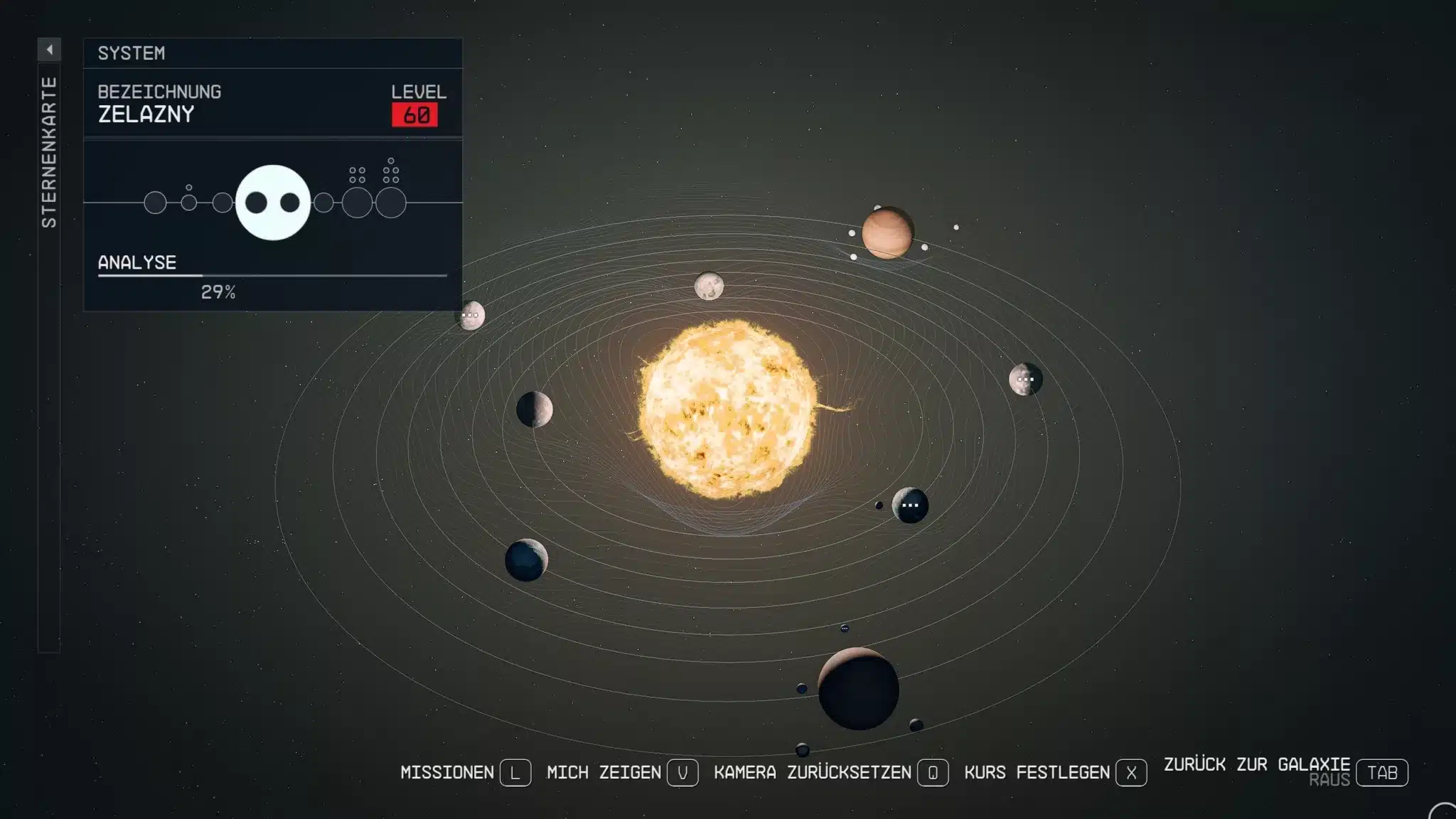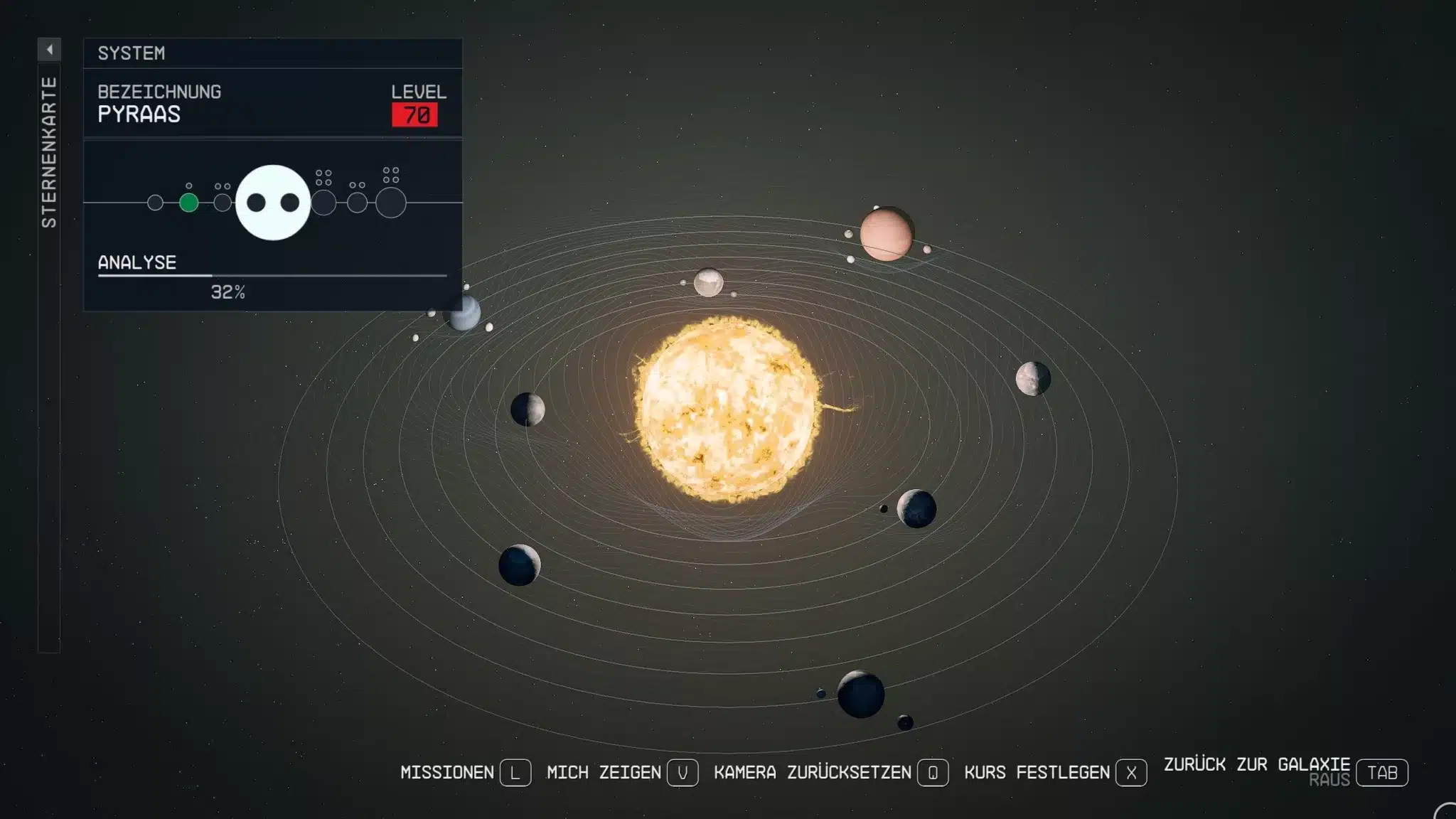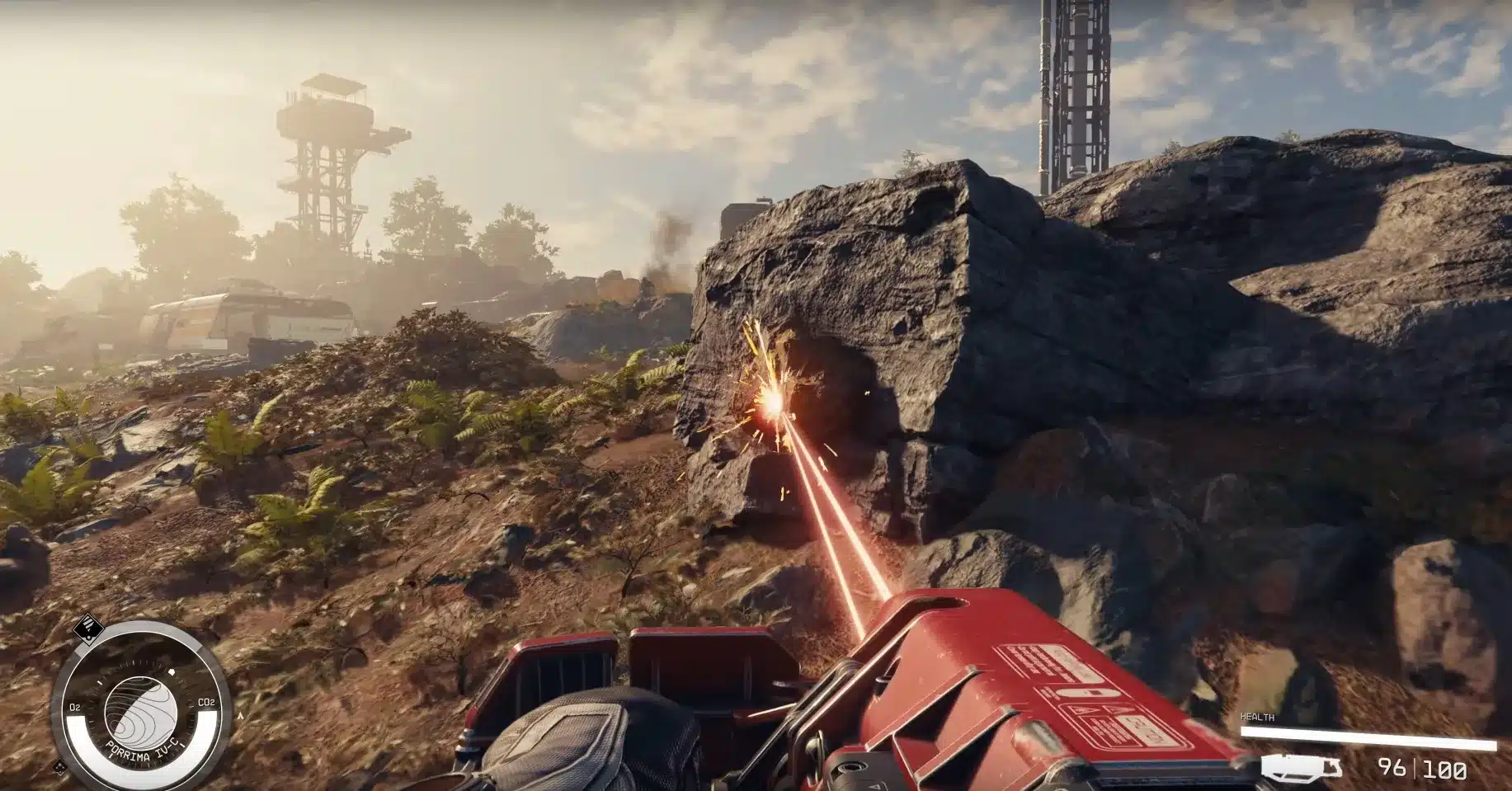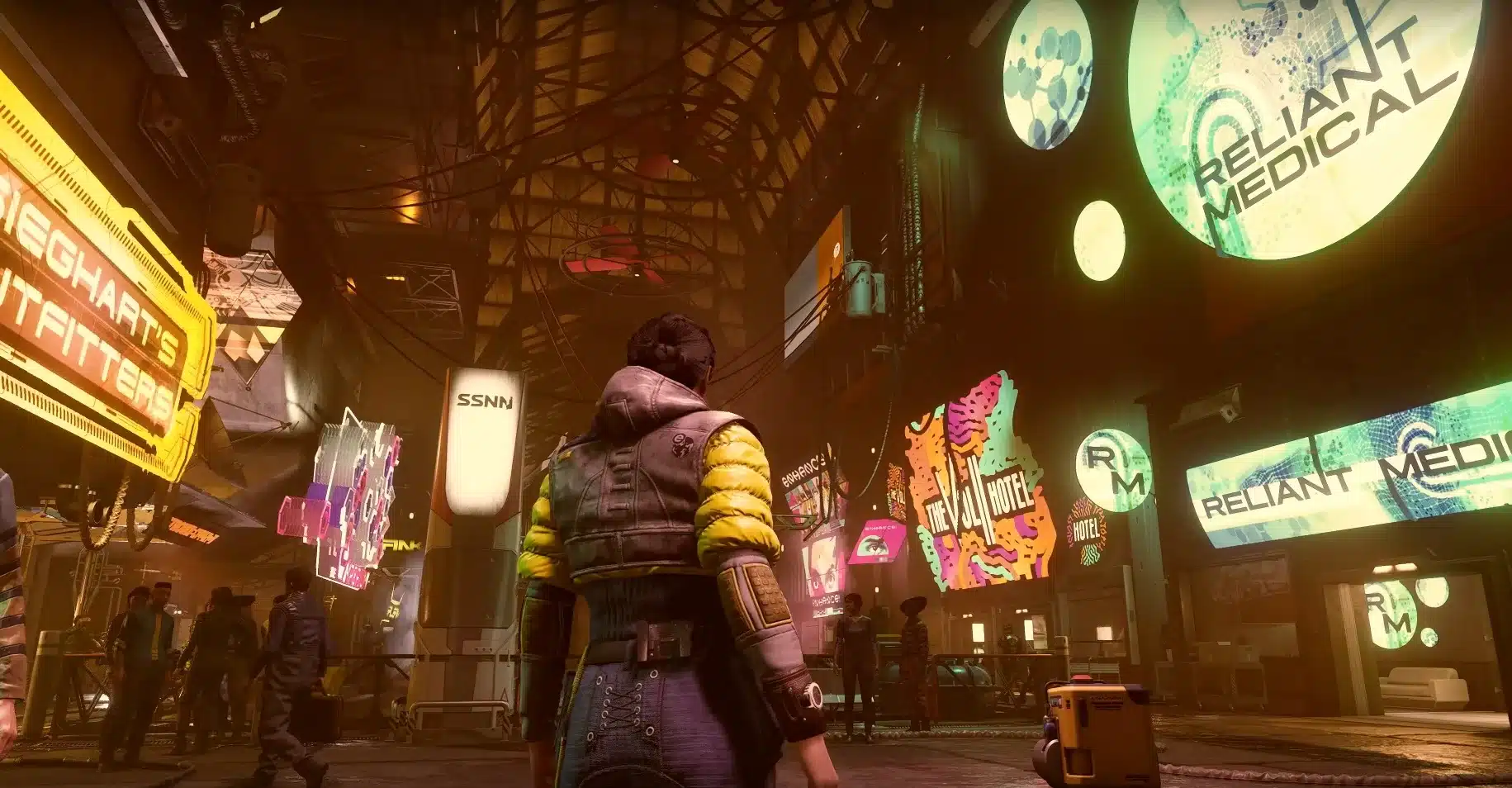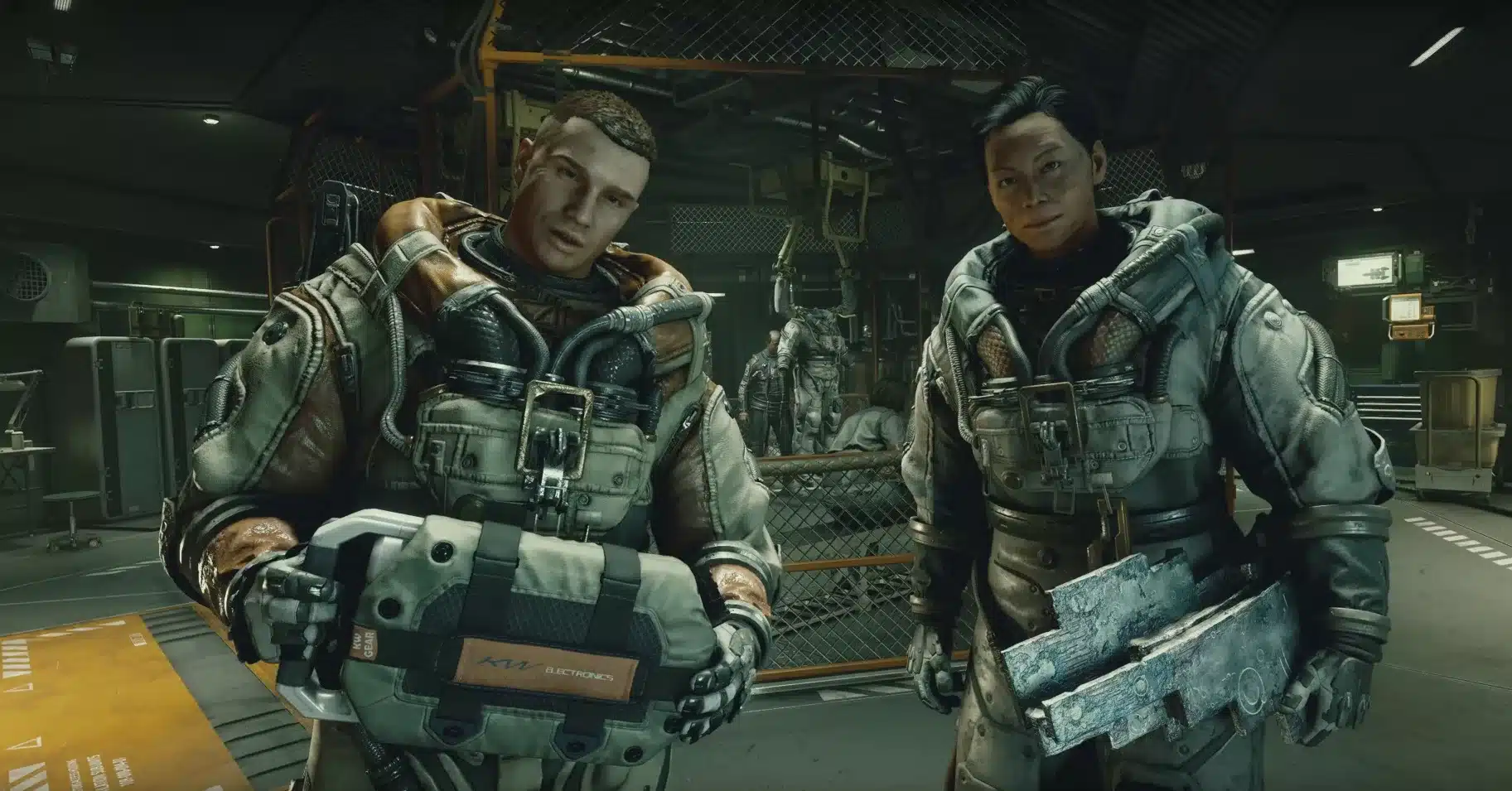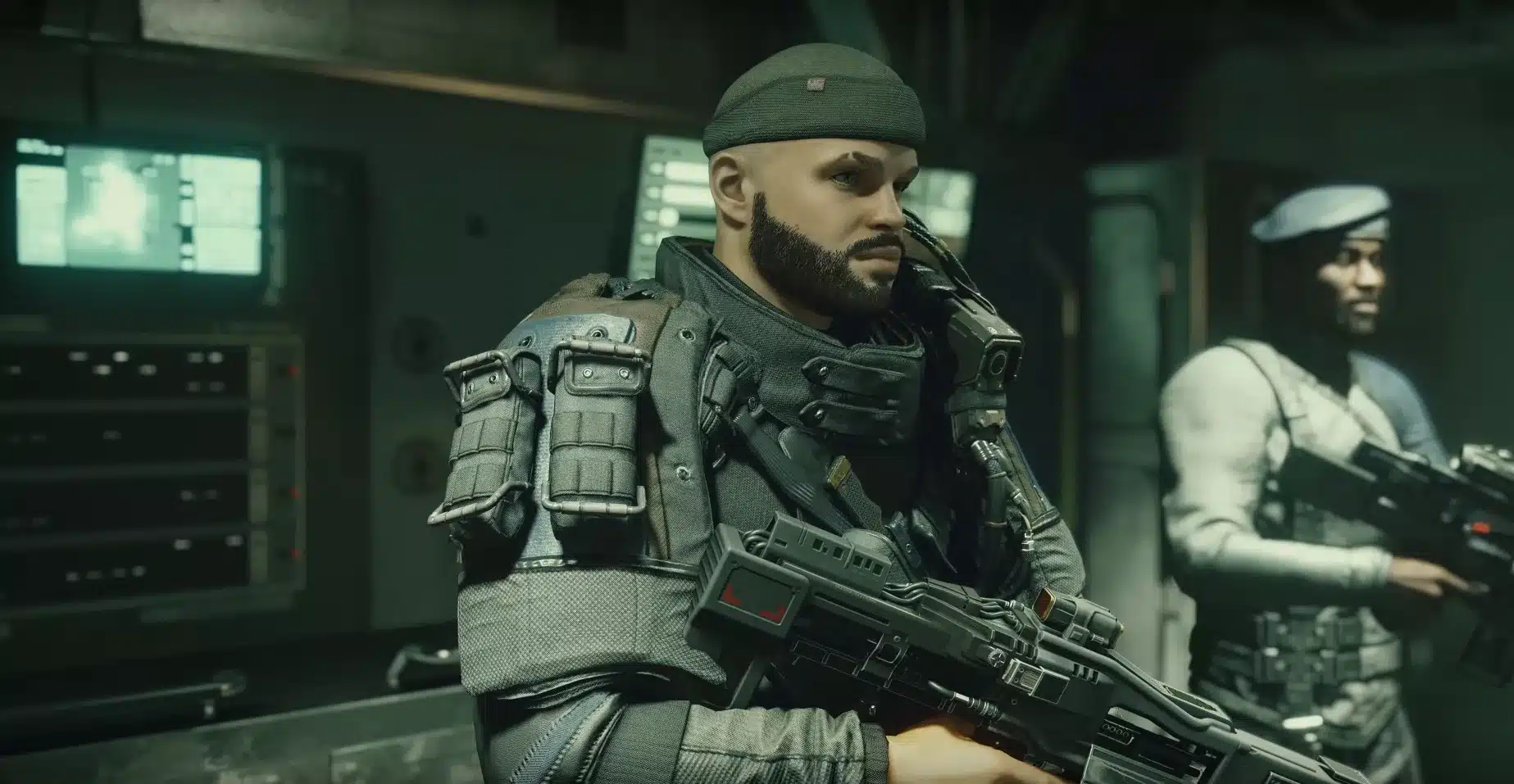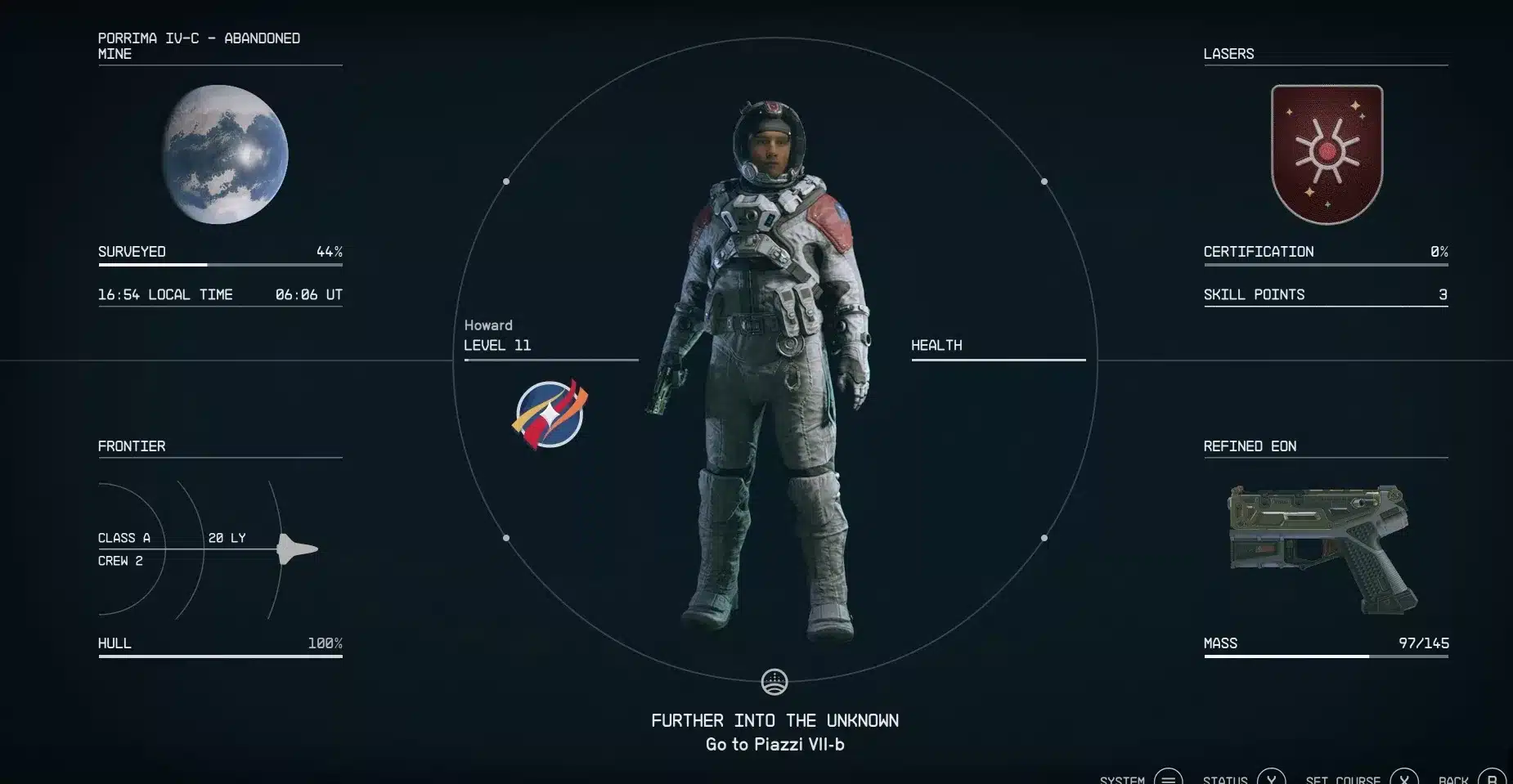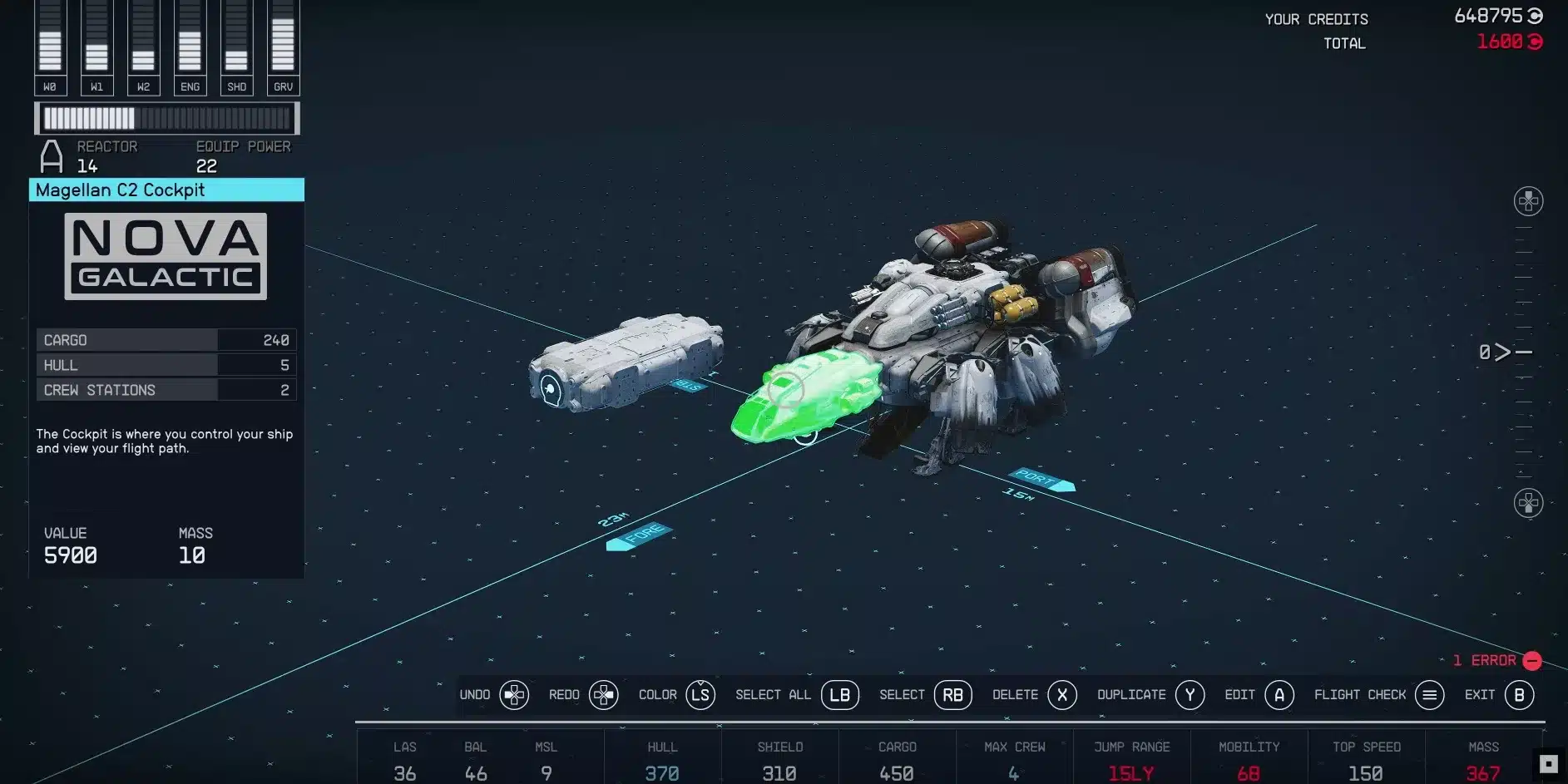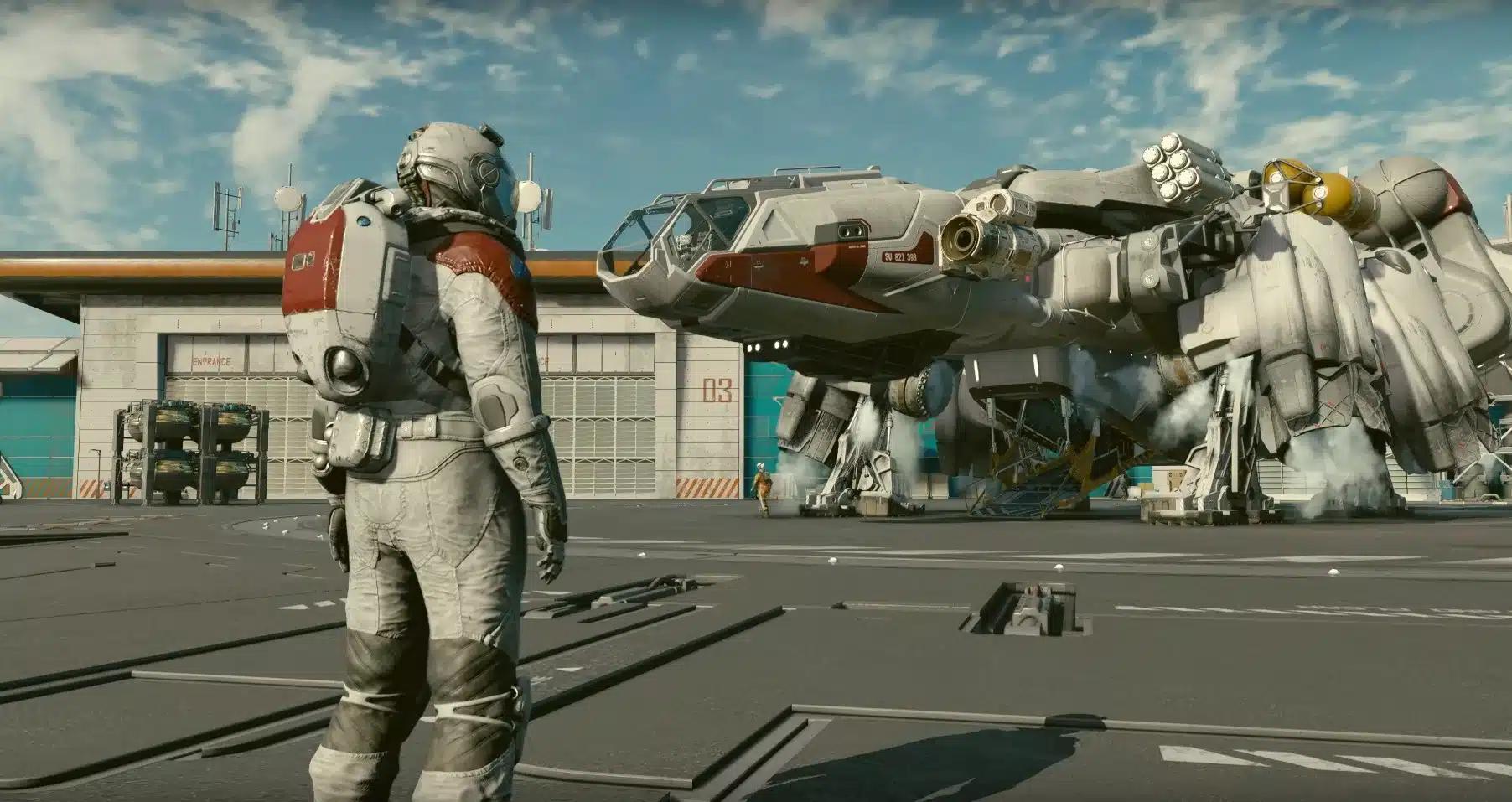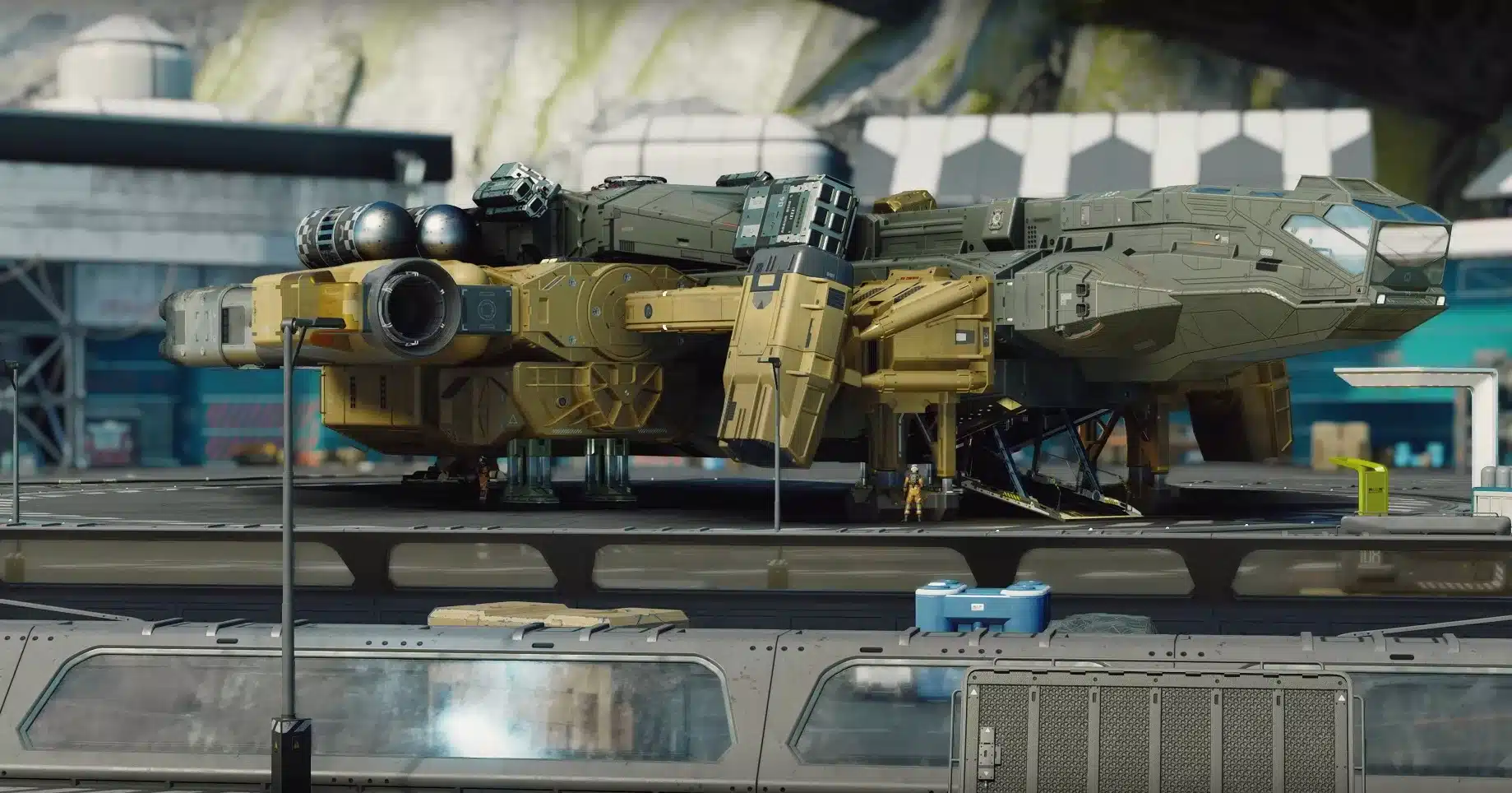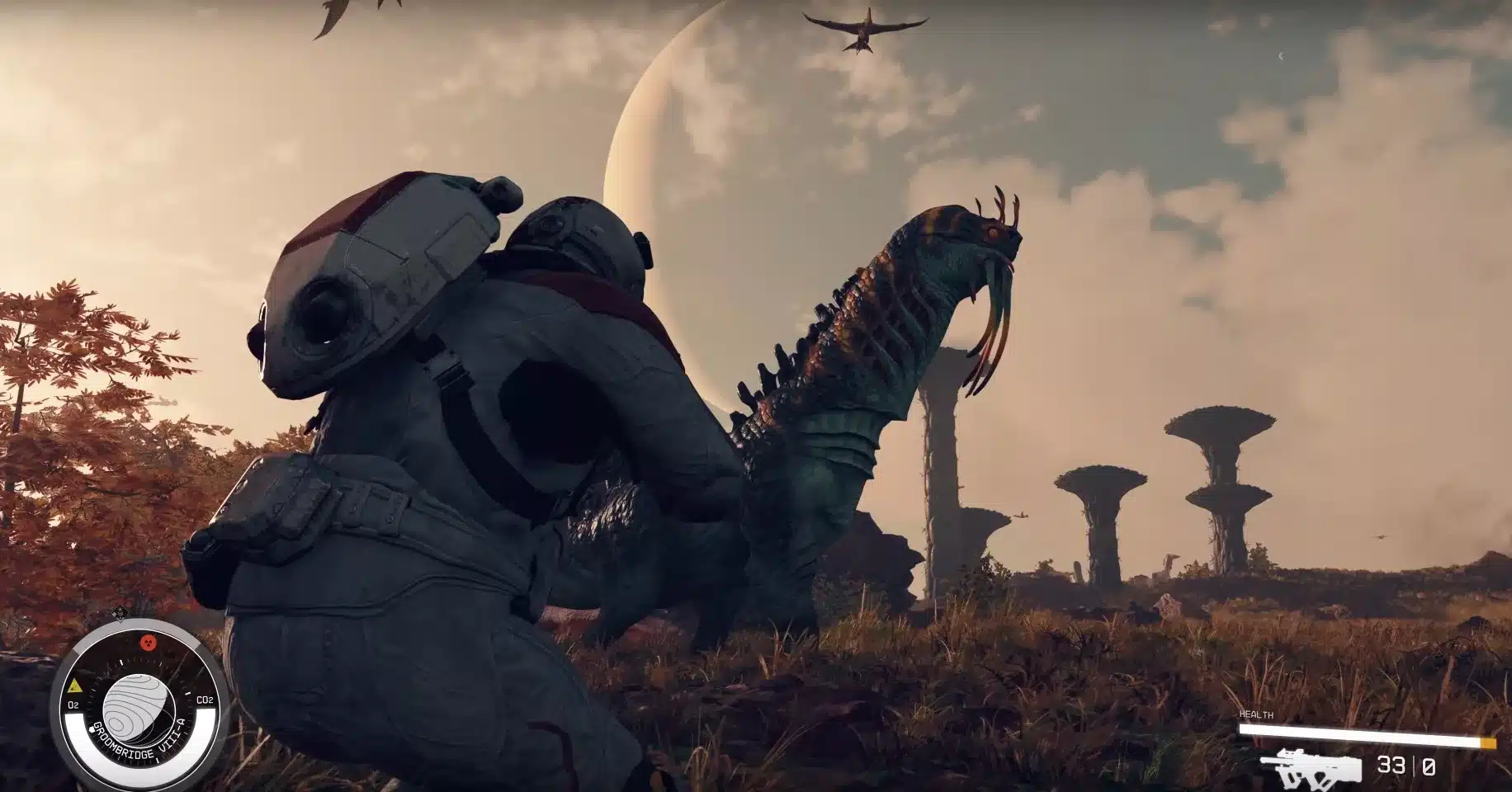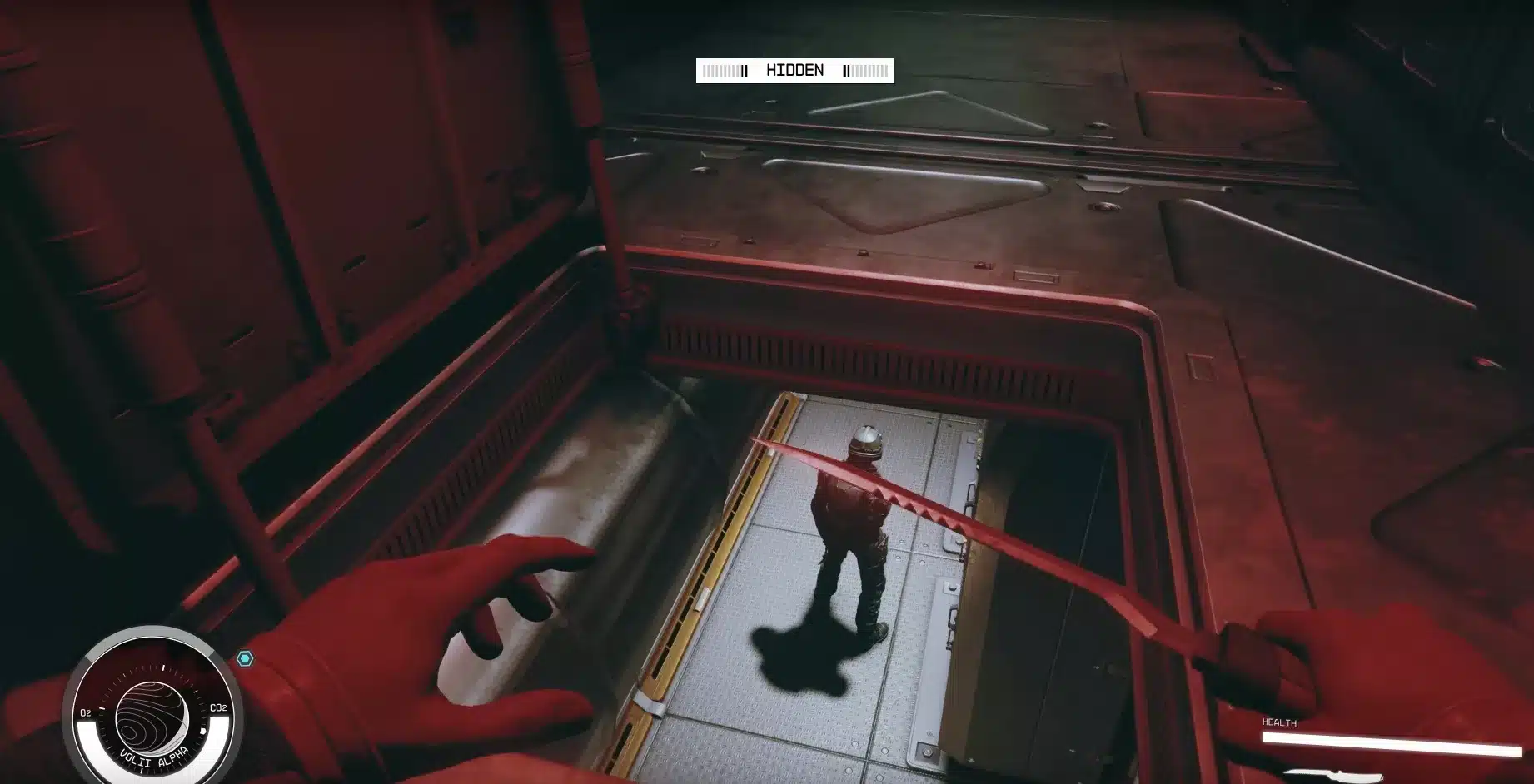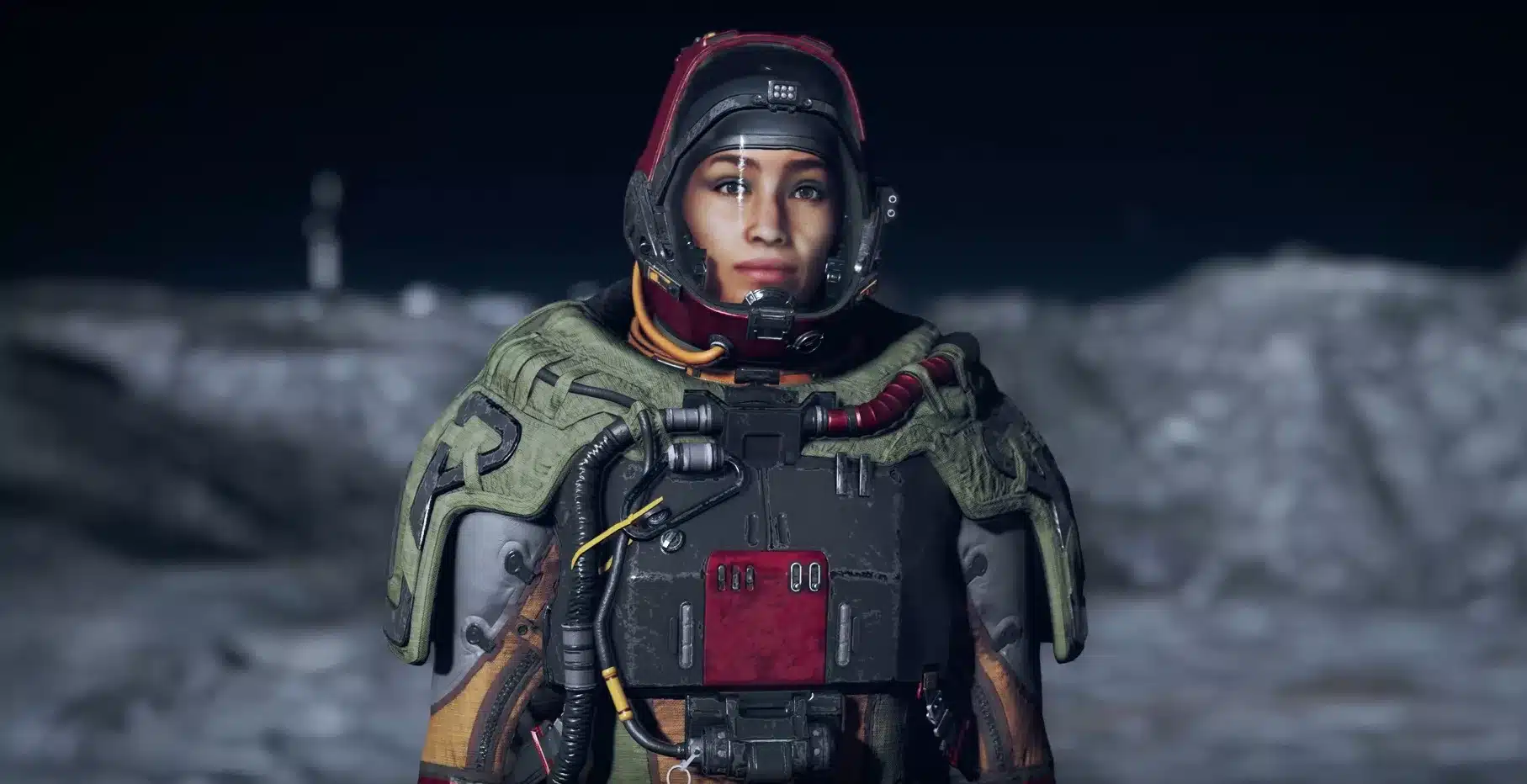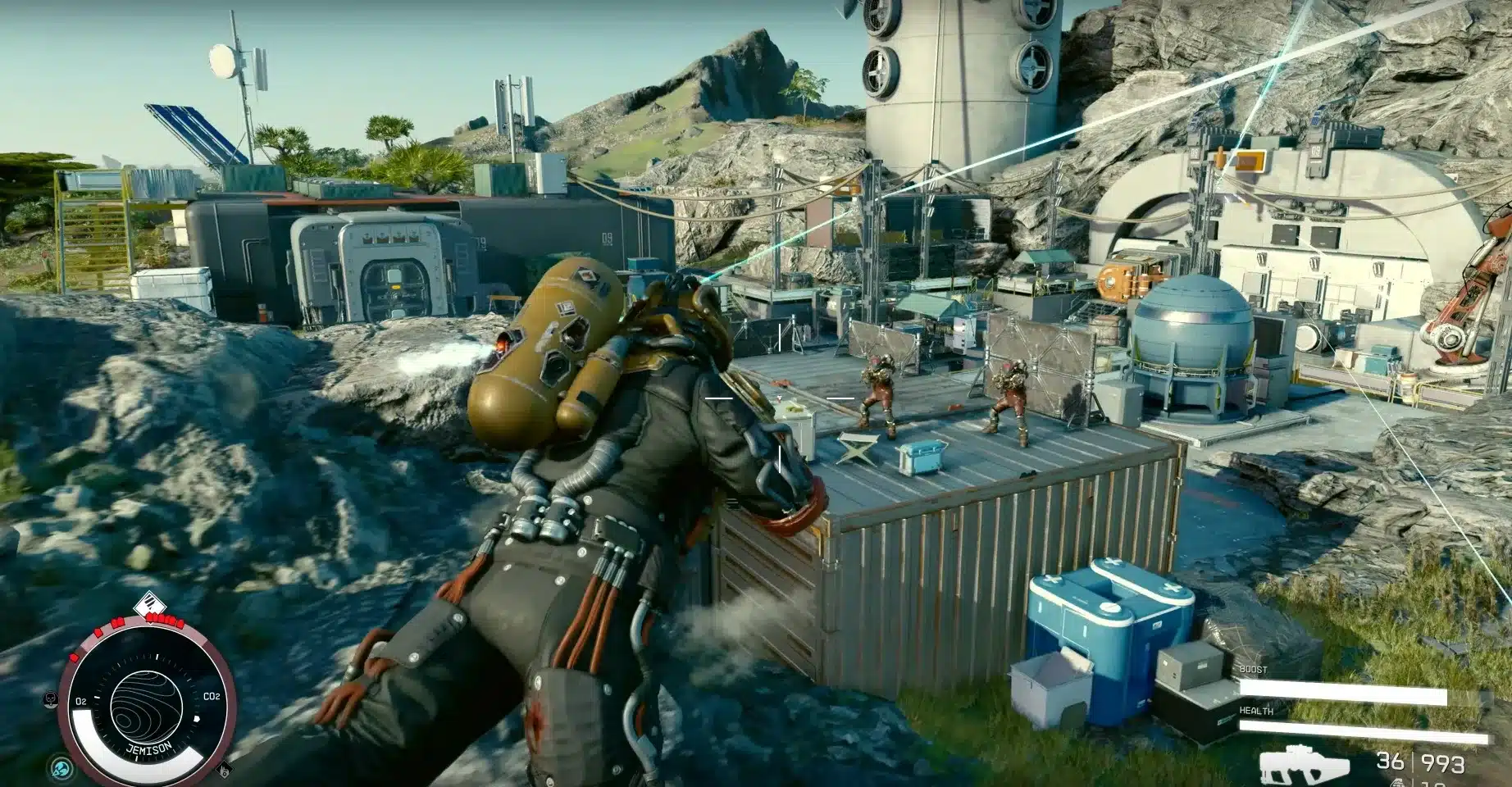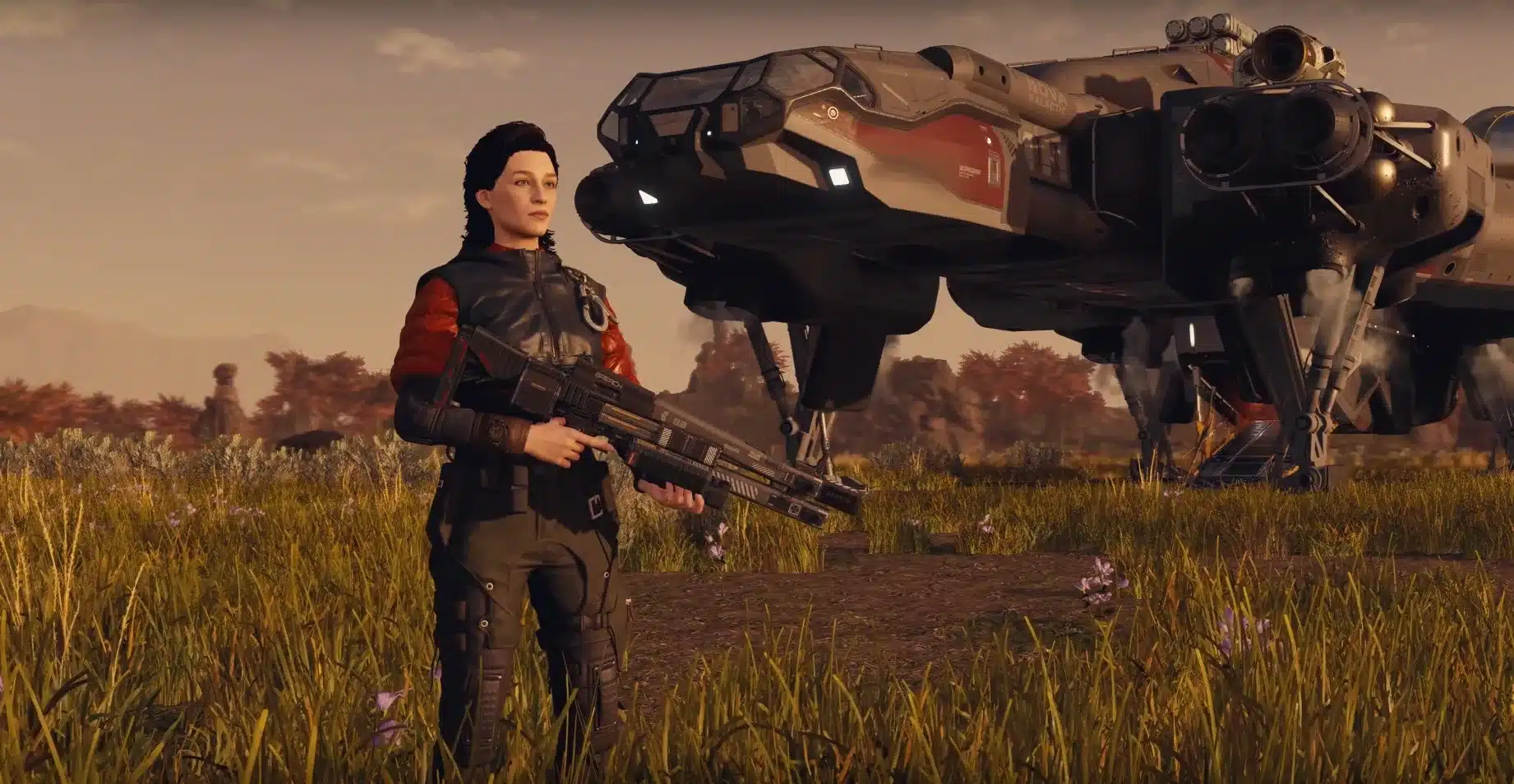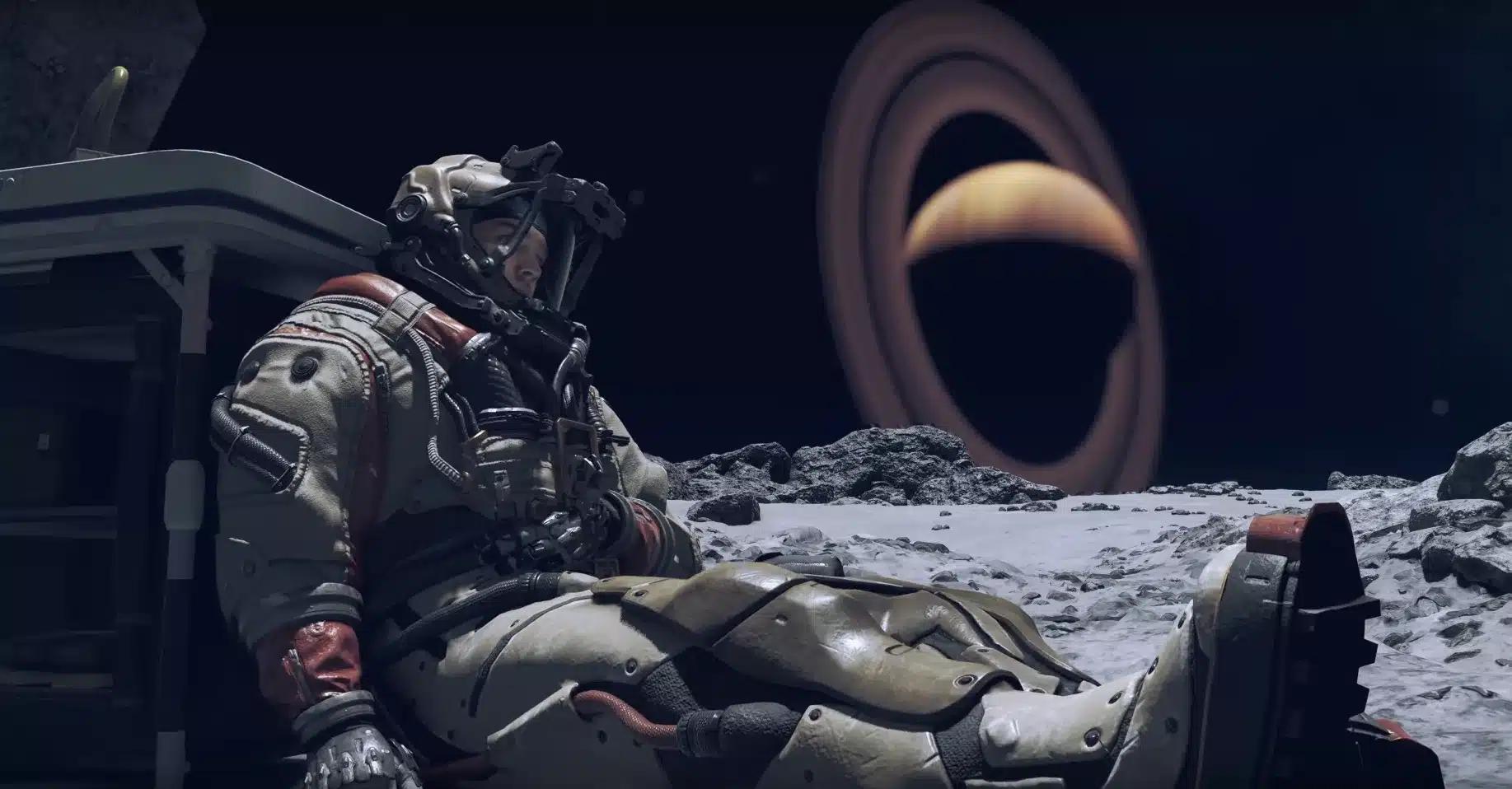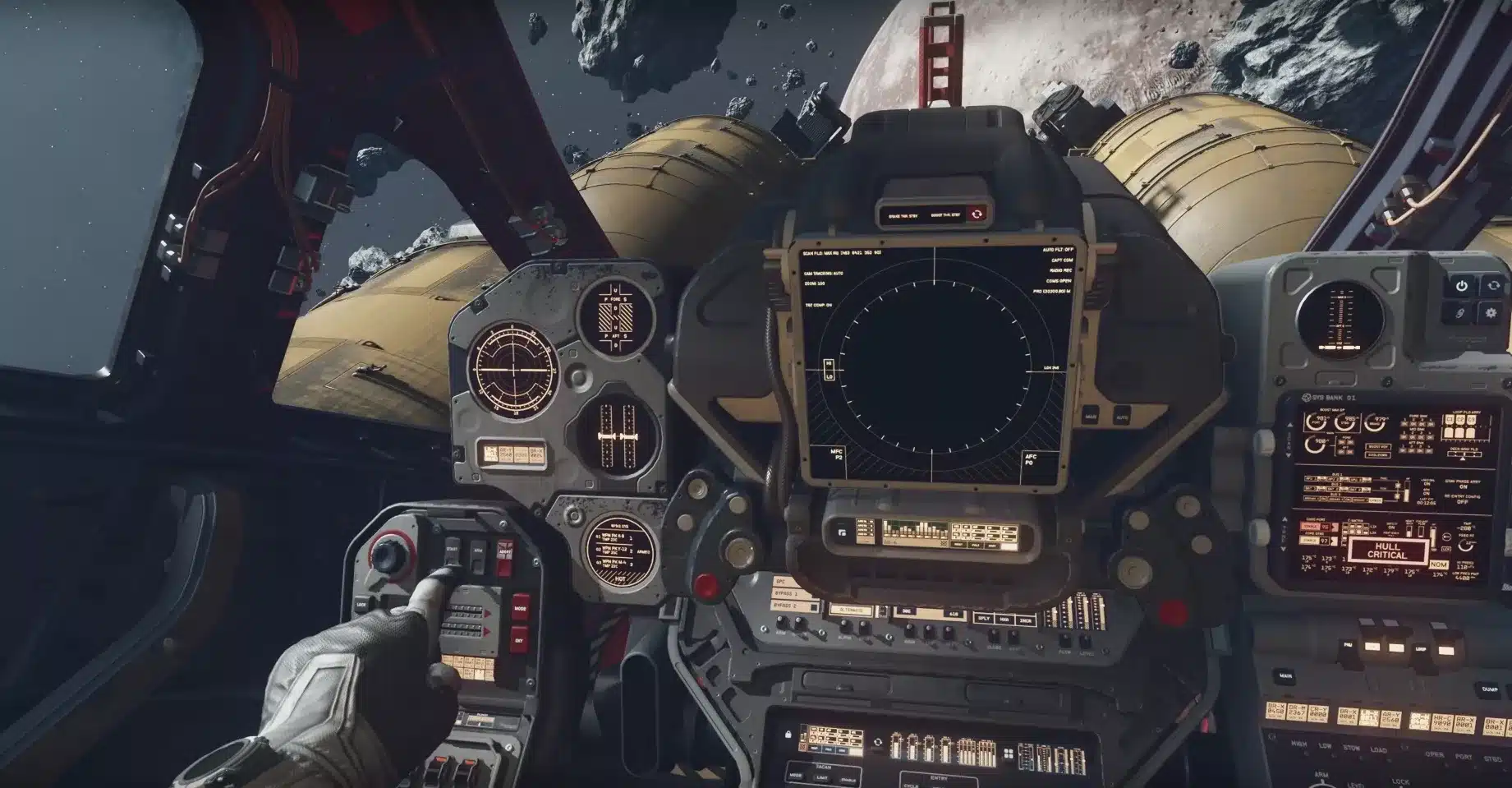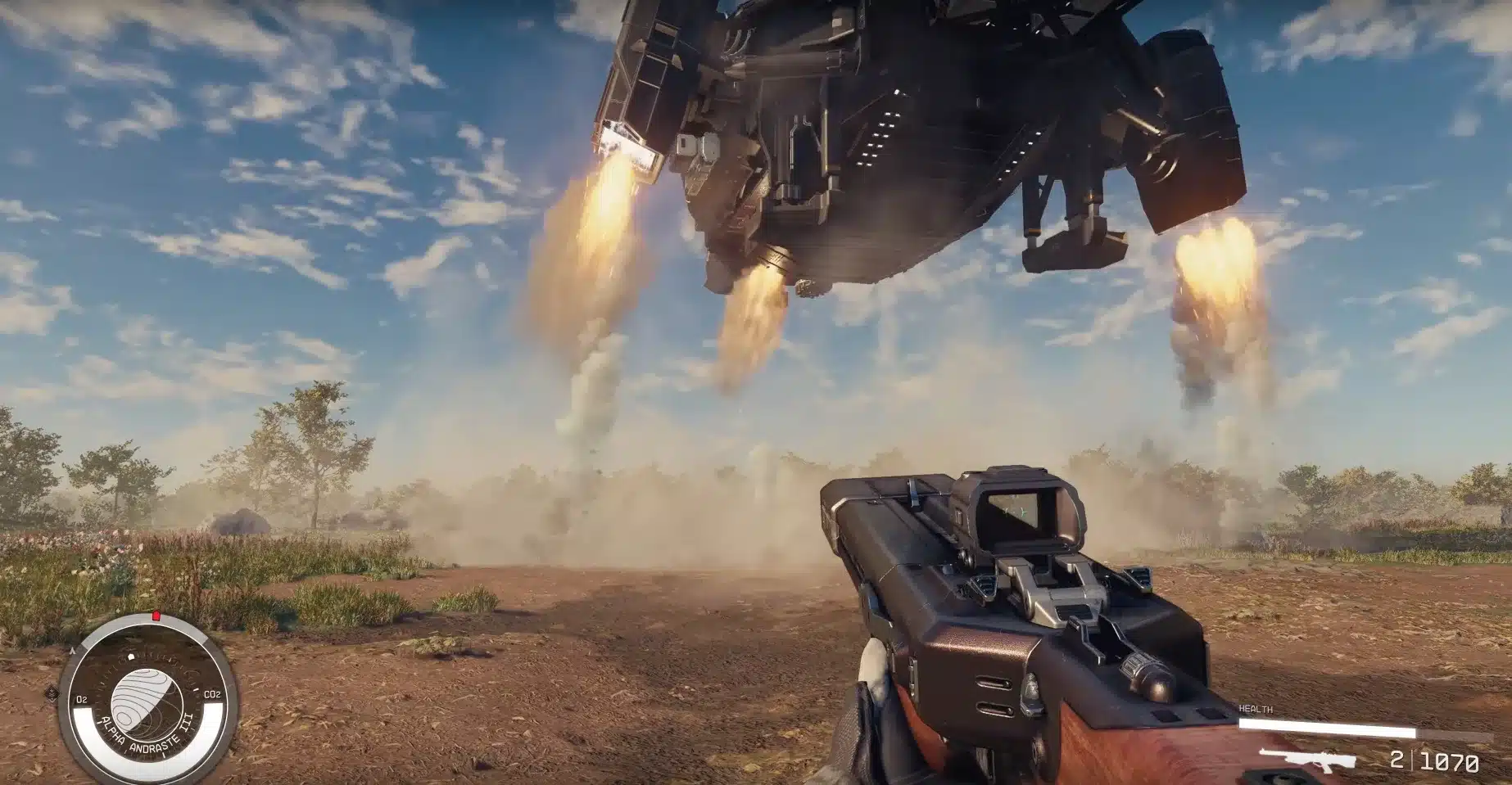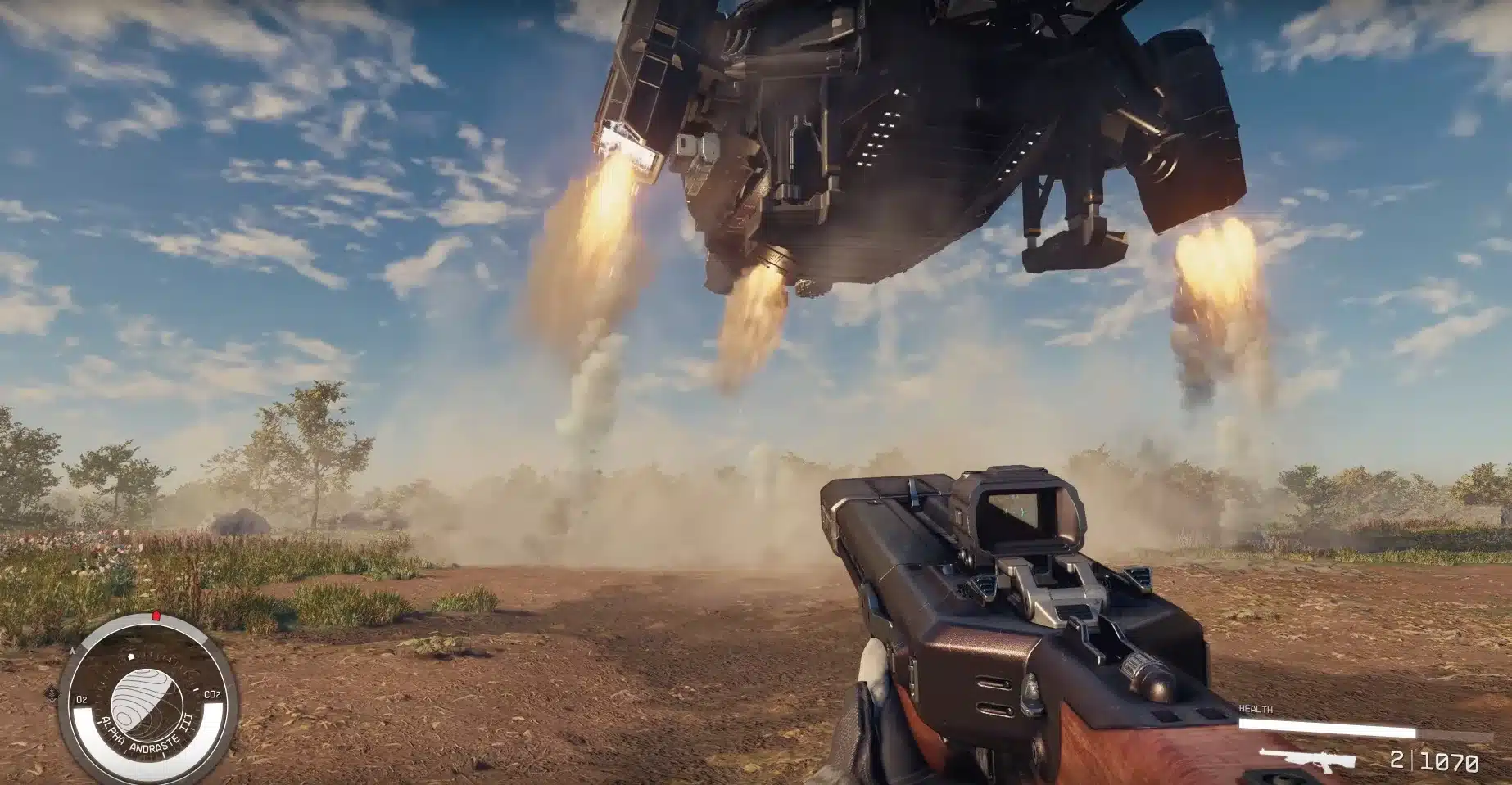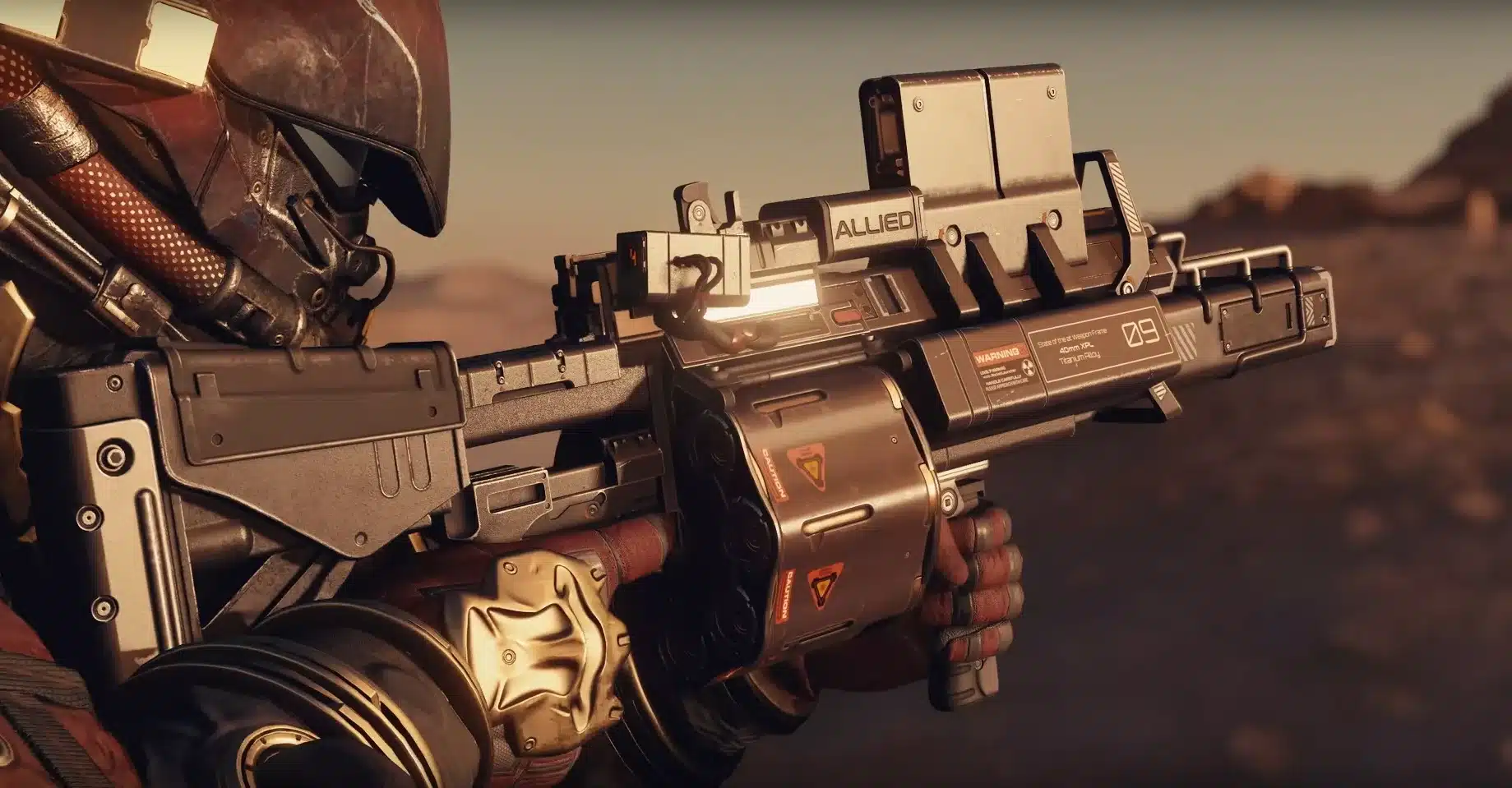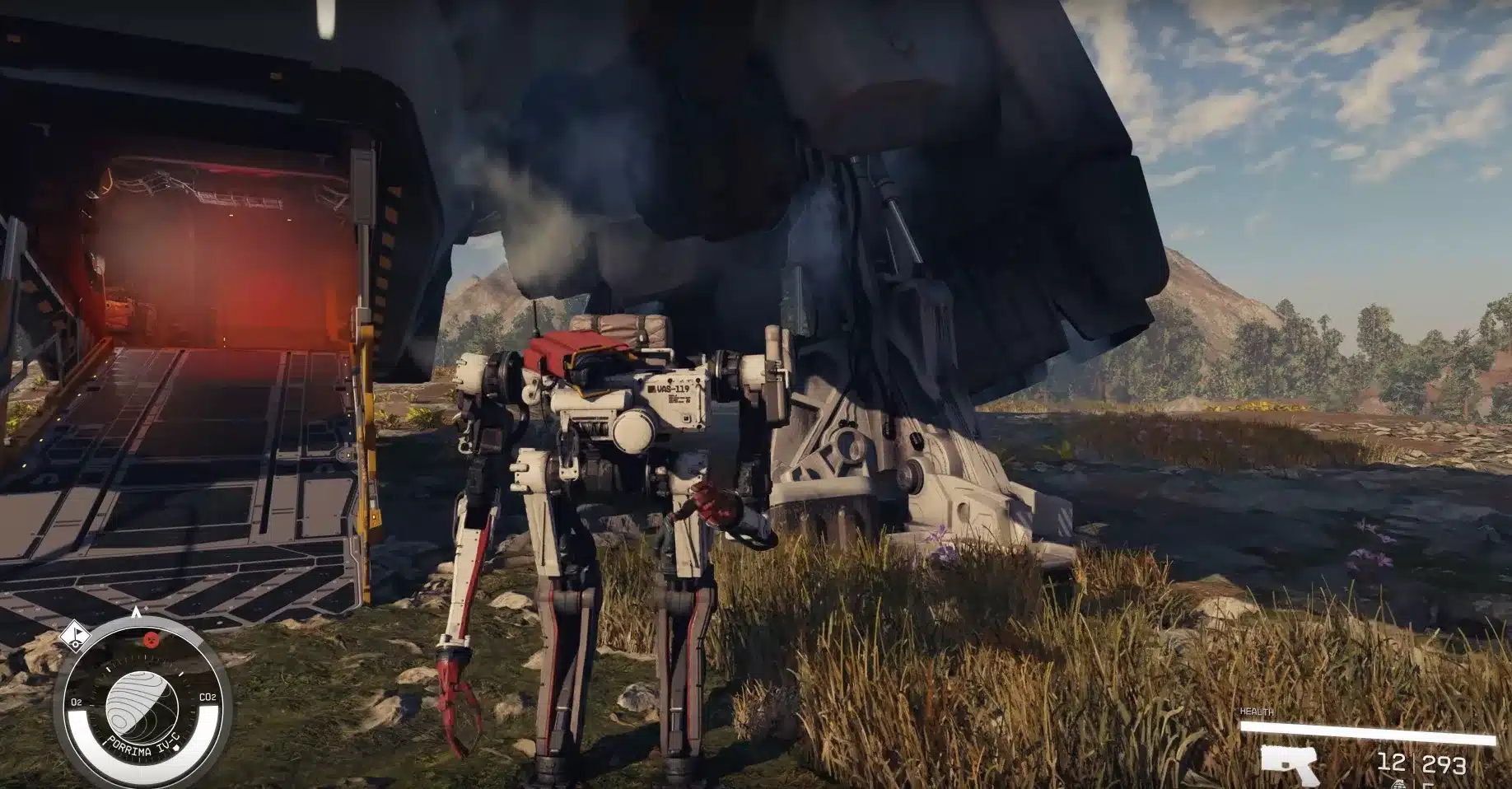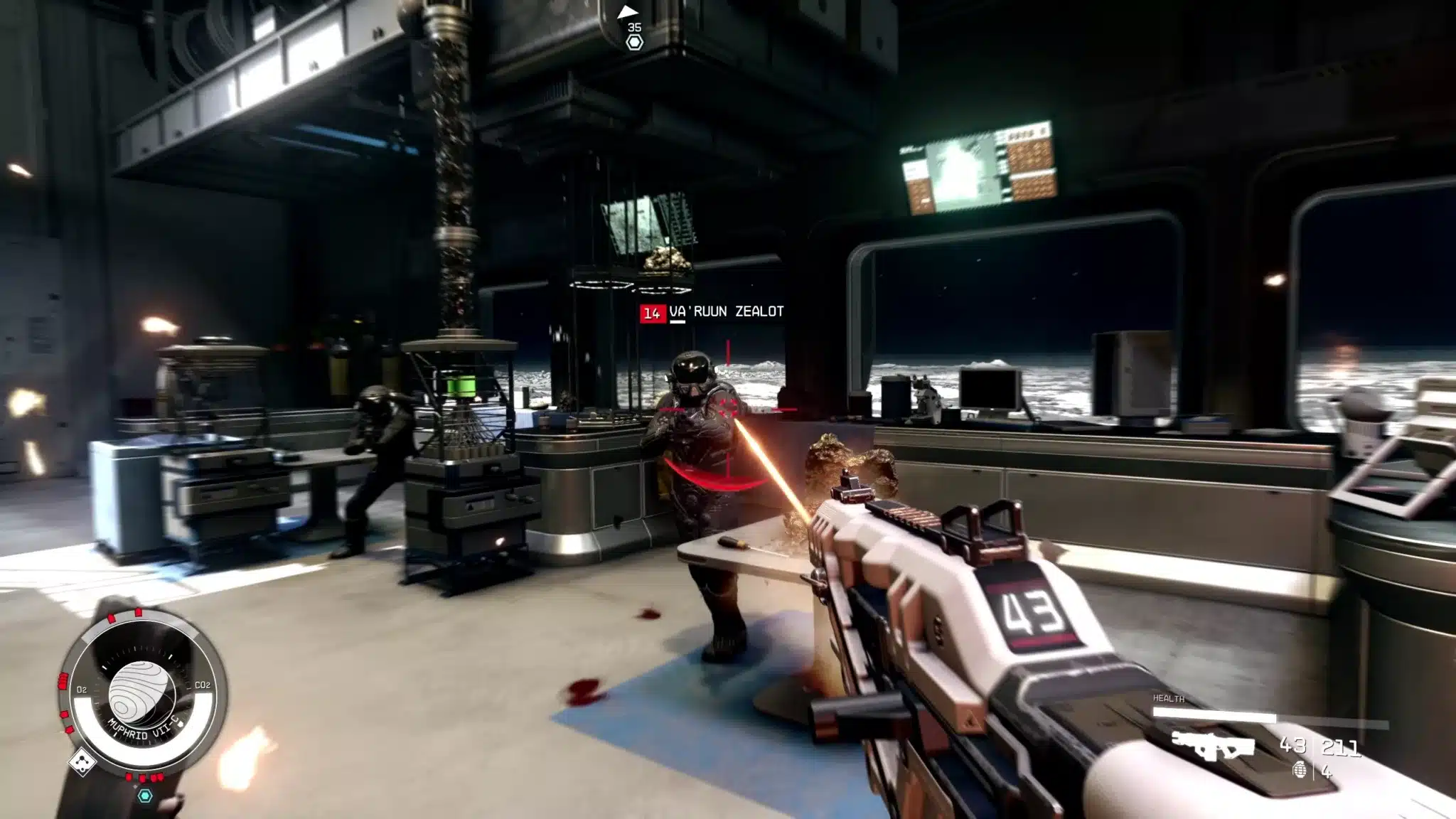The biggest Bethesda playground of all time will keep you busy for a long time, but rarely really captivate you. The test shows: such a huge universe was not needed at all.
Starfield is a dusty attic – and I’m the hoover.
There are so many fascinating things to discover in this attic! I glide through neon-coloured future cities and functional outposts in checkerboard layouts, float with my jetpack through cave systems infested with creepy-crawlies and pirates, blow out the cockpit lights of enemy spaceships and suck up everything I come across. And that’s a lot, because everything here feels interactive.
Wrenches, medpacks, new weapons, ammo, file folders, a coffee cup, two empty glass vials: It doesn’t matter, I’m in a Bethesda role-playing game and there’s nothing stopping me from packing my inventory full of as much stuff as I want. So nothing off the weight limit.
But at some point, it’s not just my backpack that gets cluttered. And it would have been good for the game itself if the developers had cleaned it out in between: Starfield has gigantic ambitions and enough content to keep you occupied for weeks, but also an immense amount of wasted potential.
As a tester, I separate the smelly socks from the hidden treasures found in this universe for you on the following pages. At the end you will find out the answer to your most pressing question: Is Starfield all that Todd Howard promised?
For two weeks, I travelled the science fiction world of the new open-world sandbox together with more than ten colleagues – and was on the move both frantically fast and unspeakably slow at the same time.
Table of Contents
Bethesda as it lives and breathes
Let me clear up a misunderstanding right at the beginning: Starfield is not a space simulation, not a new No Man’s Sky. The game universe with its 1,000 walkable celestial bodies is primarily staffage; at its heart beats the same role-playing substructure as in Fallout 4 and The Elder Scrolls 5: Skyrim, only in a science fiction guise.
This is disappointing on the one hand: You don’t fly freely through the atmosphere with your spaceship, take off on your own or target exciting points, instead you are almost always dependent on the map and fast travel. Even when docking at space stations or ships to be captured, a cutscene interrupts the action and you notice: in the background, the game loads another, smaller box in which it continues.
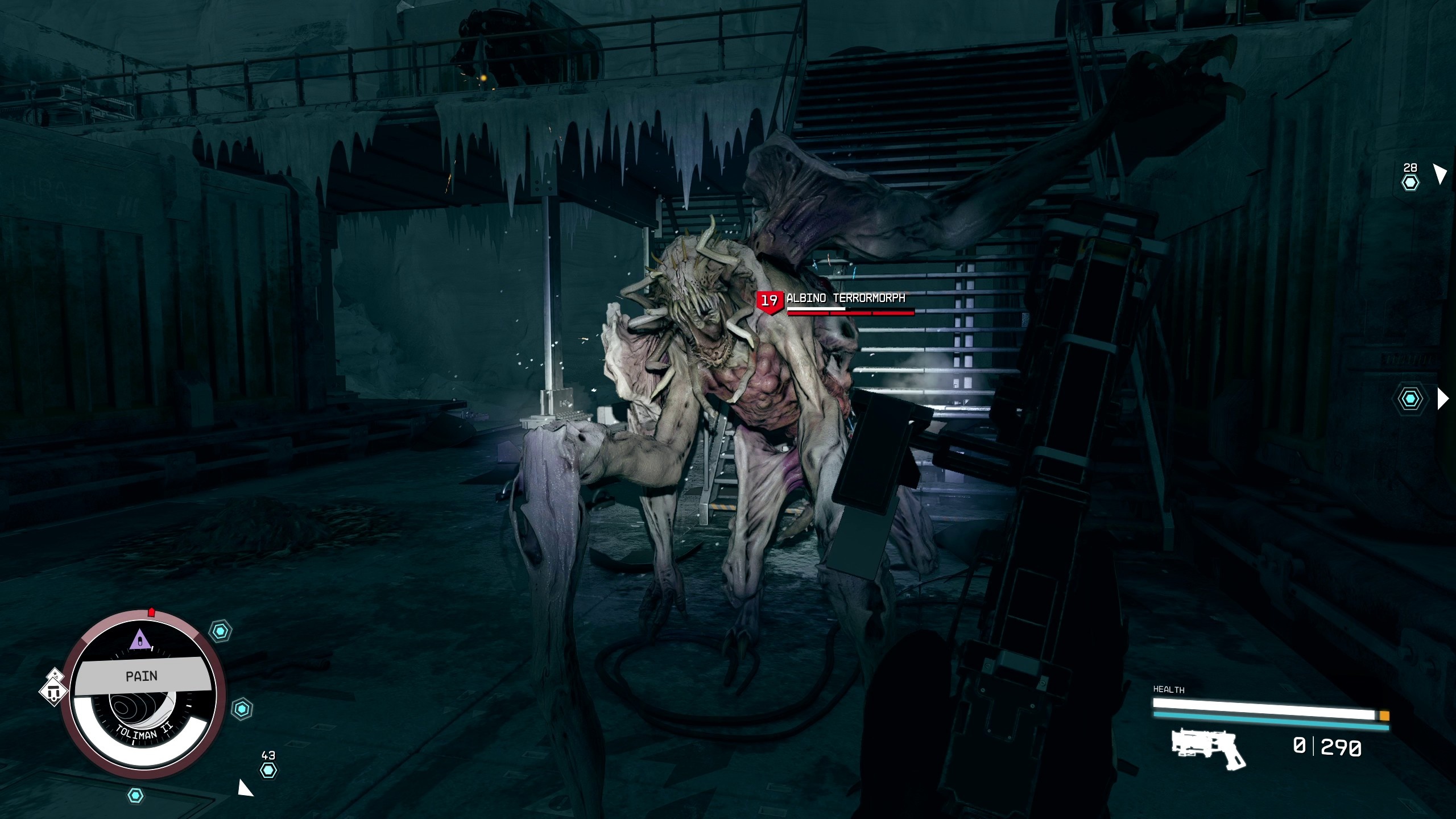
Travelling in Starfield doesn’t seem as coherent as in Star Citizen, because it lacks any technical basis. Nothing works in this game without a fast travel function; you fly off coordinates and reduce the gigantic universe to the next navigation point, to which you automatically move with the ease of a keystroke.
On the other hand, Starfield also inherits the strengths of the Bethesda games with its fidelity to tradition: The open world is crammed with quests (at least on busy planets and in cities teeming with NPCs), there are sometimes beautiful panoramas to admire and as a player you can shape your character completely freely, from the starting attributes to the craftable equipment to the skill system and the construction of an outpost.
In dialogues, you are once again allowed to make more of your own decisions than in Fallout 4, and the battles benefit from a truckload of superbly implemented weapons, which you can use effectively against all kinds of space pirates and other scum in first or third person perspective.
There are over a dozen computer-controlled companions to choose from. You can take a maximum of one with you at a time, equip it and even start a relationship. Some of the flirting attempts are rather embarrassing, but nevertheless a bond develops with the companions through the shared adventure. This is nowhere near as strong as in games by Larian Studios or the Bioware of yore, but fans of Fallout and Elder Scrolls will get their money’s worth.
Starfield is in fact a sandbox, as you know and love from Bethesda. But at the same time it is not the great evolution of the Bethesda formula that some might have hoped for, not a quantum leap in terms of game design. In some respects, Starfield is even a step backwards. Elsewhere, however, I observe small improvements in the test that benefit the gameplay. Or should I say: small leaps?
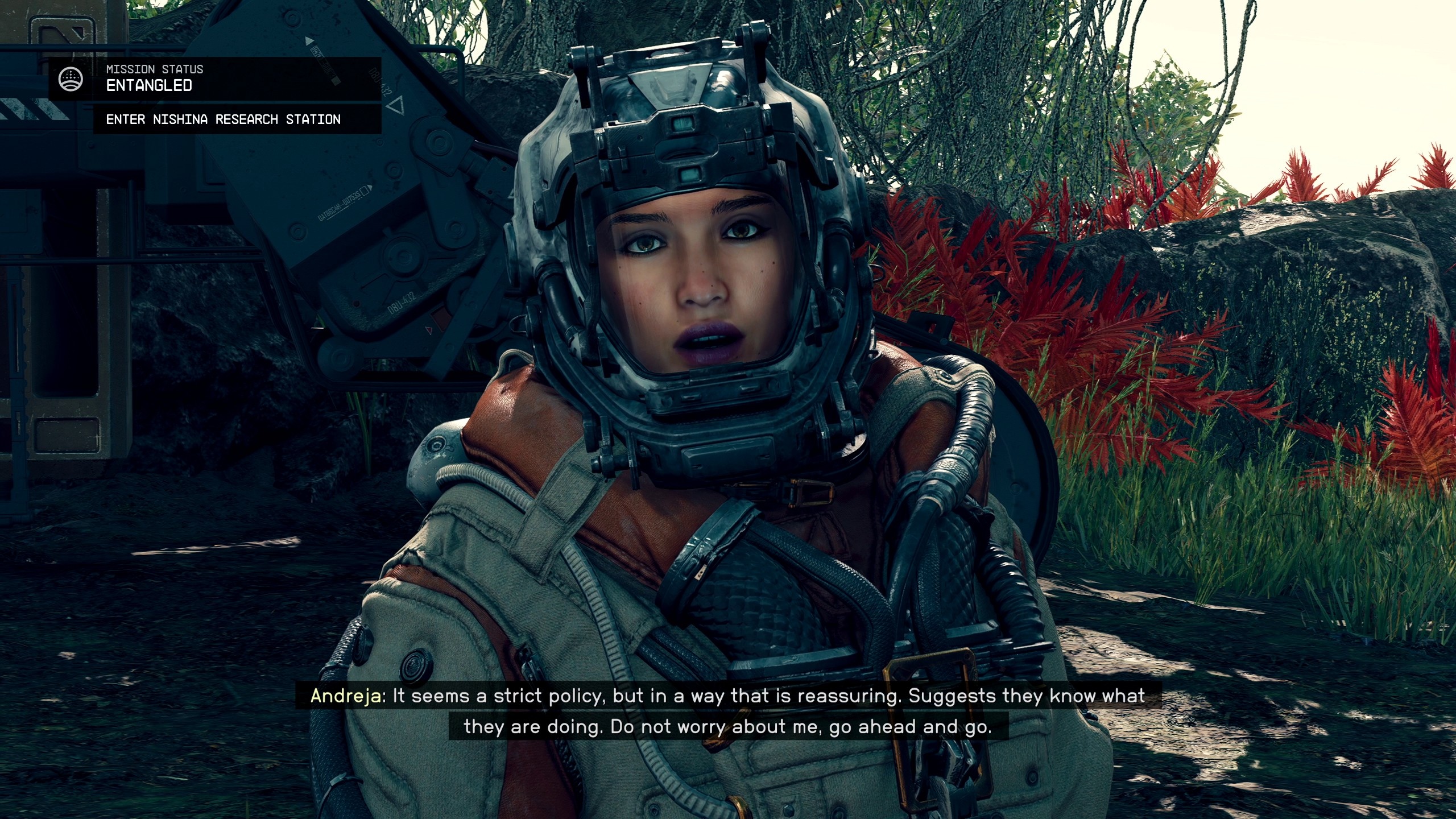
Stairs are now optional
As an explorer in the year 2330, you are on the move in the Milky Way and regularly take to the air. Because your character, which you create yourself at the beginning of the game, can equip various jetpacks that let him or her hover briefly or shoot upwards like a catapult.
This works similarly to the rocket propulsion from Fallout 4, but can be used in more ways because the character in Starfield automatically pulls himself up on edges. In addition, the level design is designed for you to use the rocket pack regularly: There are canyons and buildings with several levels. In larger cities, you find your own way and feel much freer than in previous Bethesda RPGs.
Battles in particular benefit greatly from the jetpack: In the test, it was always a pleasure for me to manoeuvre behind enemies with the thrusters or to descend on them from a great height like a bolt of lightning hurled by Zeus.
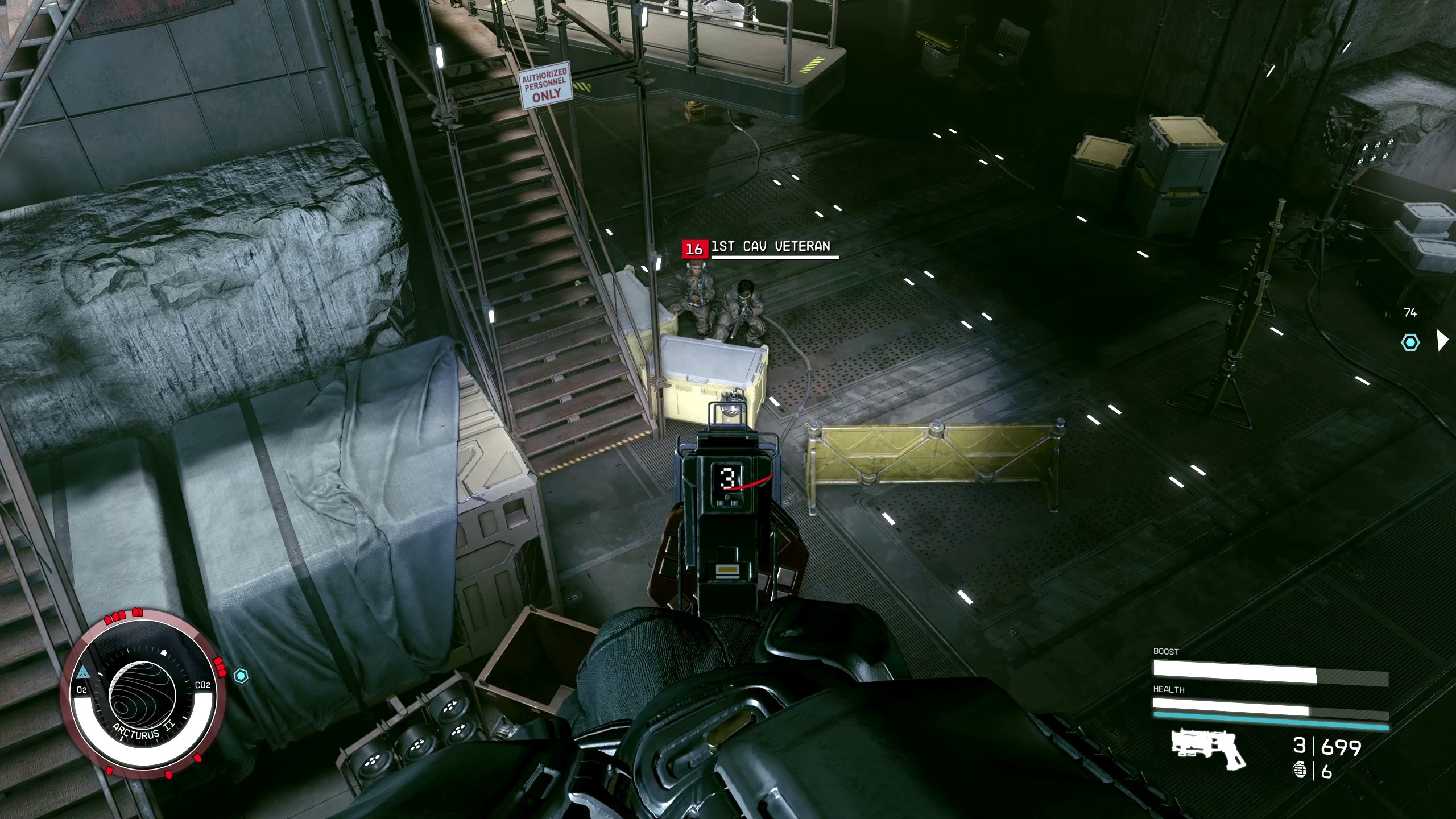
After a tough early phase, all manner of weapons join your modest starting arsenal, giving you more choice in the frequent on-the-foot confrontations. Laser rifles that set enemies on fire, revolvers with telescopic sights, grenade launchers and bolt-action rifles are waiting for you to try them out; up to twelve can be placed on quick keys.
The hit feedback is improved in comparison to the indirect predecessors: enemies react to impacts, especially when dying, and are whirled around by a shotgun hit on the shoulder, for example.
Because many human opponents also use jetpacks, they also jump wildly through the area or take off like a New Year’s Eve firecracker towards the stratosphere to explode in mid-air when you perforate their fuel tank. It’s great to watch!
Science fiction by the book
Starfield is very pompous right from the start: Ancient artefacts hold a great secret, and you players must get to the bottom of it as the newest member of the secret organisation Constellation. The orchestral music provides the perfect setting for this quest, which makes you want more right from the start.
In the course of the game, you travel through several larger cities, one of them in the classically cool design of the Citadel from Mass Effect, the next a place from the Wild West including a saloon and cowboys, then again a neon-coloured cyberpunk metropolis. But somehow it all fits together: The visuals and style of Starfield have a lot going for them, spaceships in particular look great, weapons look vivid.
You have several conversations from the first-person perspective in which the faces of the most important NPCs are very detailed; the animations when speaking, however, are not in the top league. The lip synchronicity of the German voice output also leaves a lot to be desired. In general, the translation is not too good, and there are sometimes differences in meaning compared to the very coherent English original.
Overall, the production is strong; however, the story can only partially keep up. The tension at the beginning is very successful and some quests tell cool stories. Stupid: Starfield is very serious, but doesn’t even begin to exploit the almost endless potential of its science fiction theme. All the themes and motifs are familiar, the big mystery ultimately seems banal and the authors only rarely present you with a real dilemma.
Nice: In dialogues, there is often the option to use skills selected at the start of the game or unlocked by leveling up for further conversation options. In addition, silver tongues can regularly use their persuasion talent – not only to earn more credits, as in Fallout 4, but also to completely avoid violent confrontations. Decisions also want to be made, usually distinguishing between a good and an evil option.
But although there are around half a dozen factions, you’d better not expect a multi-layered system with popularity scales and weighing up the interests of different groups. You can simply complete (almost) all the faction quest series in one go. Really dramatic cuts like the civil war in Skyrim are missing.
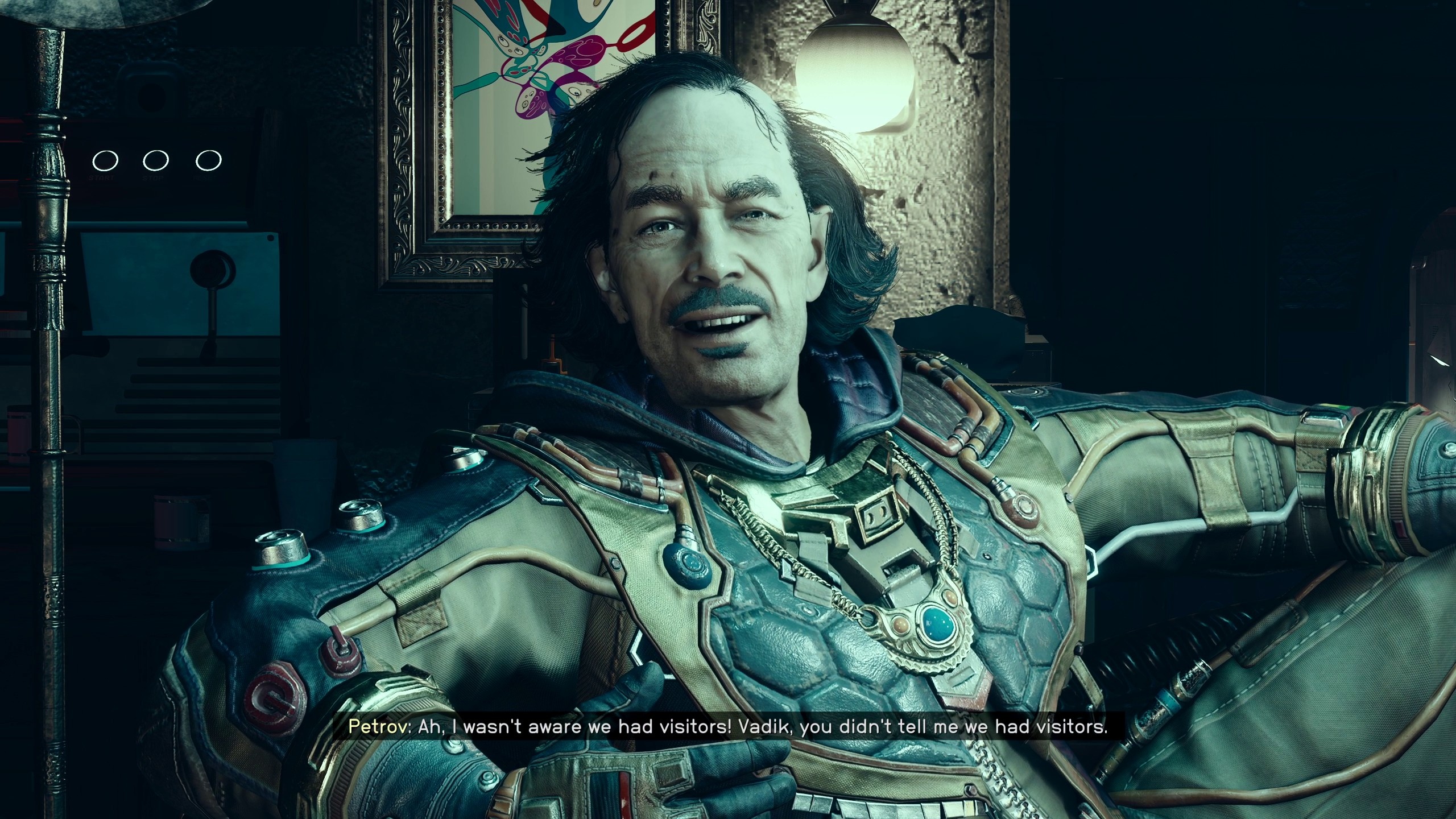
On the one hand, this is good because the most interesting and complex stories are still waiting here. On the other hand, “WAAAS did you do?” discussions between two players like in the extremely versatile Baldur’s Gate 3 are not possible. Given enough time, all players experience the same thing.
Starfield defiantly has some exciting missions, even in the main story. But these are overshadowed by countless others in which you play the DHL delivery boy or long for more colourful, memorable characters like the wonderfully overdrawn Captain Petrov, because everything seems so terribly banal and 08/15.
Admittedly, every now and then there are surprises and funny ideas like a casino in zero gravity or chance encounters (with a school class, for example!) that develop into larger quests or are merely built in as gags.
But given the massive game time (for the test I played a good 80 hours, after 50 of which I had completed the main and faction quests) they just seem like drops on the boiling surface of the sun.
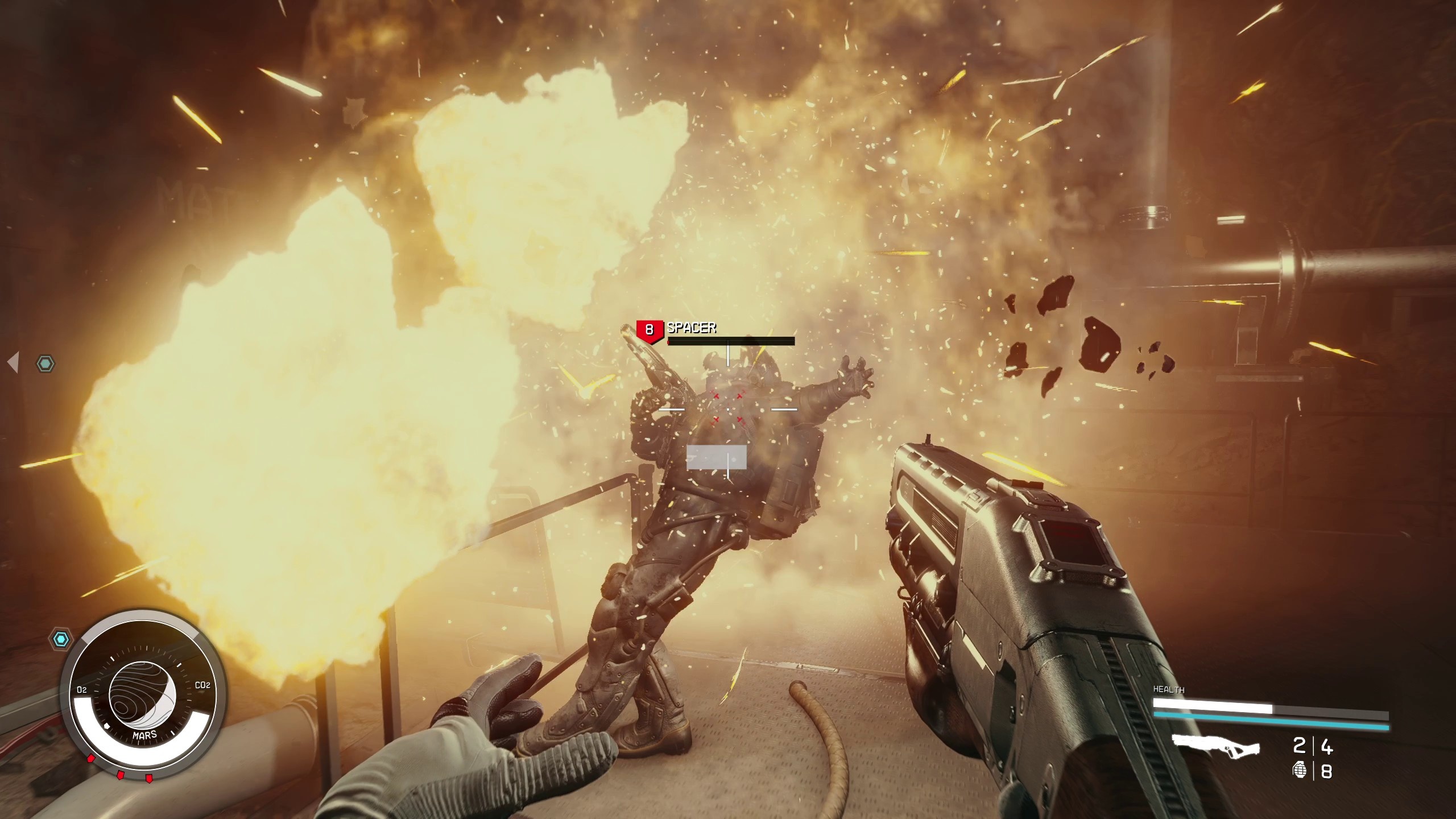
Caught up in the upgrade mania
And yet … the longer I kept up with Starfield, the more it drew me in. This is mainly due to the near-perfect motivational mechanics in terms of equipment and talent tree: earning experience points and the resulting leveling up trigger similar feelings in my hamster brain as feeding a six-year-old candy.
There is no level limit in Starfield, so you can unlock all the skills in the extremely extensive talent tree at some point, but you have to complete challenges like “Destroy 50 spaceships” or “Pick 20 locks” for higher ranks (a total of four per skill). The resulting improvements are thankfully noticeable and skills such as persuasion or damage resistance prove to be incredibly practical.
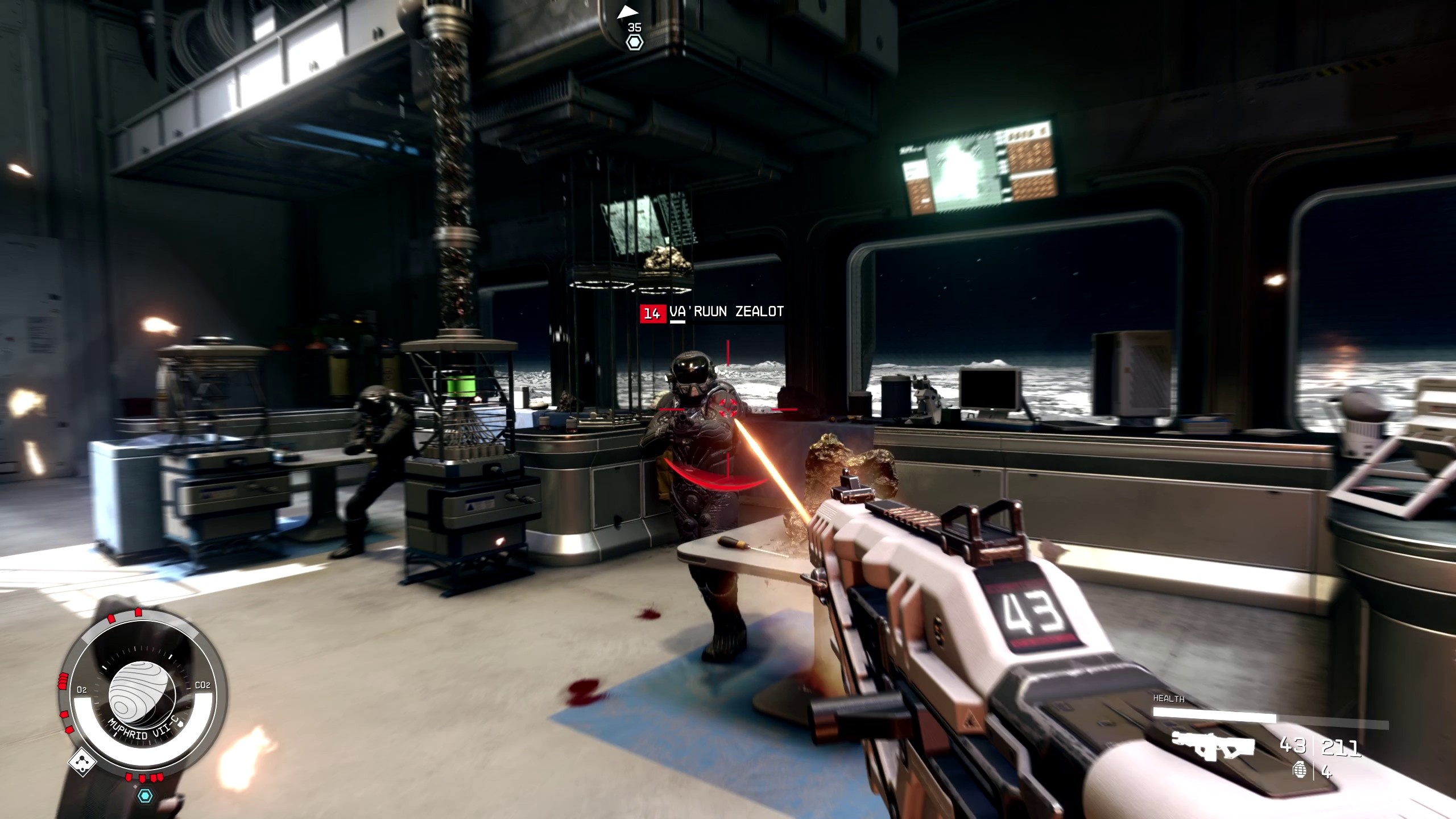
My hoover gene really kicks in when I’m looting down enemies. Getting hold of new weapons, spacesuits and other items just doesn’t get old. Especially since this time there are also different levels of rarity, so there is a touch of Diablo. However, the longer you play, the more confusing the inventory becomes, because the typical Bethesda lists are used and the sorting functions are inadequate.
I can improve and customise any equipment at crafting stations; with the right skills and resources I can modify my pistol with a larger magazine or give the killer shotgun a silencer.
But helmet and suit can also be improved. There is enough material here to keep you busy for hundreds of hours, even if you want to craft the absolute best equipment in survival games. But the upgrades are almost never really necessary; Fallout 76 offers the more successful crafting system in a direct comparison.
In addition, your character can also cook (mostly superfluous) food and make medicines that heal broken bones and frostbite or slow down time for a short time. Only the important med and trauma kits cannot be mixed together even at the highest talent level, but can only be found or bought.
Thanks to a fair difficulty level (on the third of five) and enemies that do not level up (the galaxy is divided into level areas), however, I always felt well taken care of in a marriage of challenge and a sense of power. If you want to be challenged, however, you should start right away on the two highest levels.
Extensive tools for building your own outpost on any planet, furnishing a house (you can buy different flats in the cities) or customising your spaceship also exist: anyone with even a shred of creativity will be able to spend a lot of time with these options again.
What they all have in common is an unnecessarily confused operation that requires some time to get used to, thanks to the convoluted menus with mouse and keyboard as well as gamepad. The tutorials don’t help much either, because Starfield repeatedly conceals small details about the handling, some of which you only understand after hours or in dialogue with other players.
Once you have come to terms with the controls, the results are really impressive. You can place even the smallest decorative objects by hand and thus build your dream house in what is actually a hostile environment on a deserted moon in the furthest corner of the Milky Way. Phallus-shaped spaceships are also possible, of course, with the layout inside changing with each adjustment of the hull.
Good news for all of you who are mainly interested in the story: If you don’t want to, you don’t have to build a single outpost or even adjust your spaceship design, you can completely ignore crafting and you don’t need to mine any resources. So you also have little reason to explore Starfield’s far too large universe – saving you a lot of time and nerves.
Not a space simulation
Starfield has a structural problem that lowers its quality quite a bit compared to Fallout 4 and Skyrim. The huge game world with its over 1,000 planets should actually be the great strength of the role-playing game. However, this exploration part is extremely flat and monotonous.
Starfield feels like a collection of levels connected to each other via a dull star map. The feeling of organic discovery as you wander around the Sky’s Edge and Commonwealth, as you know it from Skyrim and Fallout 4, is hugely diminished.
To travel from one level to another in Starfield, you have to set a course on the map and activate the jump drive, which sometimes requires you to reallocate energy. In the test, my input as a player was often exhausted in the key combination L-R-X: I opened the mission logbook, set a course for the selected quest destination and confirmed the jump to the destination.
Quick travel, which can be called up from almost any location, is not an optional feature in Starfield for the first time, but essential: there is no way to travel between systems independently, everything is handled by means of self-running, uninterruptible cutscenes.
Overall, spaceship gameplay is trivialised at every turn: If you’re lucky, you can navigate to a space station in the orbit of a planet or follow a mysterious signal, now and then you’ll run into NPCs in random encounters and of course there are battles against enemy ships from time to time. Everything else, however, works via menus and automatics.
These restrictions continue on the planets: free flying in the atmosphere is not allowed, landing and take-off are automatic. This makes the spaceship feel like a – admittedly very fancy – prop.
Even the dogfights seem grafted on: there are no big space battles, the highest of feelings are up to five adversaries at the same time and then they usually head straight for me. I first shoot their shields and then their hulls, maybe even target individual systems like weapons and engines in between, but that’s rarely really necessary.
Those who have a soft spot for Everspace 2, Freelancer or Star Citizen should not, for heaven’s sake, expect Starfield to do anything comparable. Even if – and here Bethesda has to take a look at itself – statements by the developers before release (especially by Todd Howard and Pete Hines) partly painted exactly this picture and raised corresponding expectations.
The problem with the 1,000 planets
Those who are not questing at the moment, as the pre-release advertising seemed to imply, can still discover a lot in Starfield on the game’s many, many planets. In fact, there are a handful of so-called points of interest on each celestial body, behind which a cave with loot or a small pirate outpost is hidden. Some of these are randomly generated.
Resources are waiting for me to break them out of the ground and rocks with machines or a laser beam. In addition, all kinds of animals roam the world, the variety here is far less than in the procedurally generated No Man’s Sky.
With a scanner I can identify certain parts of the flora and fauna until at some point the planet is considered explored. These findings can be made valuable, because there is a never-ending stream of automatically generated missions, and not just for explorers.
Computer terminals distribute bounty orders, you search for defaulters for a bank or do combat missions for the various factions. All of this ensures that you can spend an almost infinite amount of time in Starfield, but in the end you are only occupied with absolutely meaningless grinding without any linked story elements.
Yes, the universe of Starfield is big. Yes, there is an insane amount to do. But in the end, the truly handcrafted, worthwhile part of it just doesn’t make up the majority by a long shot. Many Starfield fans were also confused to the max before release: is it now possible to explore a planet completely on foot?
During the test, however, the fact that the celestial bodies are actually divided into zones with insurmountable borders hardly bothered me. This is due to three points:
- .. doesn’t make a game more or less fun for me depending on whether or not I can traverse a planet without transition.
- .. there’s hardly anything to discover on 99 percent of all Starfield planets that would make such a walk worthwhile.
- .. every excursion becomes a miserably slow ordeal due to the lack of vehicles.
..
How did a colleague put it in the group chat during the test? “I never thought I’d miss the Mako from Mass Effect.” But it’s true: Starfield would have desperately needed vehicles, the distances are too great, especially on uncivilised planets.
The problem is exacerbated by the quest design, which often sends you from one end of the galaxy/colony to the other multiple times for a simple errand or a handful of conversations – and by the endurance system.
Whoever runs or jumps in Starfield uses up oxygen in the process, represented by an indicator at the bottom left of the screen. When this is gone, red CO² builds up in its place. When the carbon dioxide reaches a peak, you risk losing life energy and suffering temporary body damage if you continue to jog.
The problem: the oxygen is gone pretty darn quickly without upgrades, which is why I eventually switched to using the jetpack whenever possible to move a tiny bit faster through the huge game world. This resulted in constant little jumps that look absolutely ridiculous, especially in third-person mode.
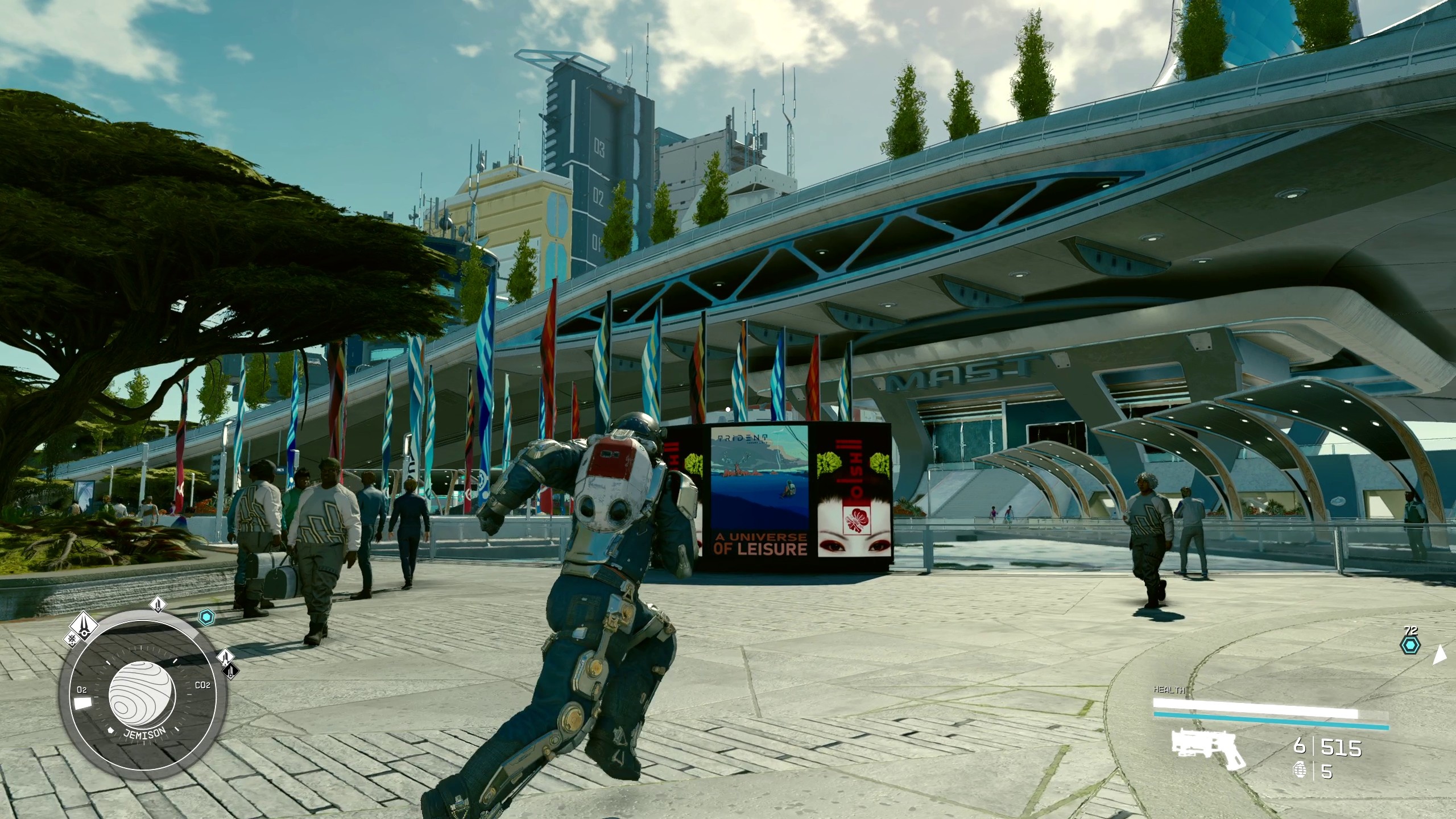
The problem is exacerbated if, like me, you bag everything that isn’t nailed down. This means that your character is quickly overloaded, consumes more oxygen or can no longer run at all. Fast travel is also useless in certain situations.
All this seems less realistic and more like a deliberate manipulation on the part of the developers, even if the weight limit can be increased with talent points. My prediction: After release, mods that soften these tightly set limits will become enormously popular. In its current state, however, much of Starfield feels like a wanton waste of time.
Potential through mods
Starfield, like previous Bethesda Game Studios games, comes with extensive mod support. Experience teaches that hobby developers will soon make numerous free modifications available for download, which will overhaul features and operation as well as provide new content and mechanics. However, this is not relevant for our rating.
The fact that Bethesda has partly taken over the planet graphics on the star map 1:1 or simply changed the colour of suns in order to fill the huge universe with content doesn’t make me feel any better. The pinnacle, however, are the more than 20 temples in which I unlock special powers for my avatar.
This is the “space magic” that was only hinted at before release; Bethesda asked us not to reveal details about it. What should be a reward for diligent players, however, degenerates into a joke: The temples are all built exactly the same, there are no puzzles or special challenges to complete, just a mini-mini game that is always the same.
The way you find the temples is also unimaginative: Dozens of times you return for a few seconds to a certain NPC who writes new entries in your logbook, then you use the familiar key combination L-R-X and after landing on a boring retort planet you have to trudge through the wasteland on foot for several minutes, done.
These are the very worst moments of Starfield.
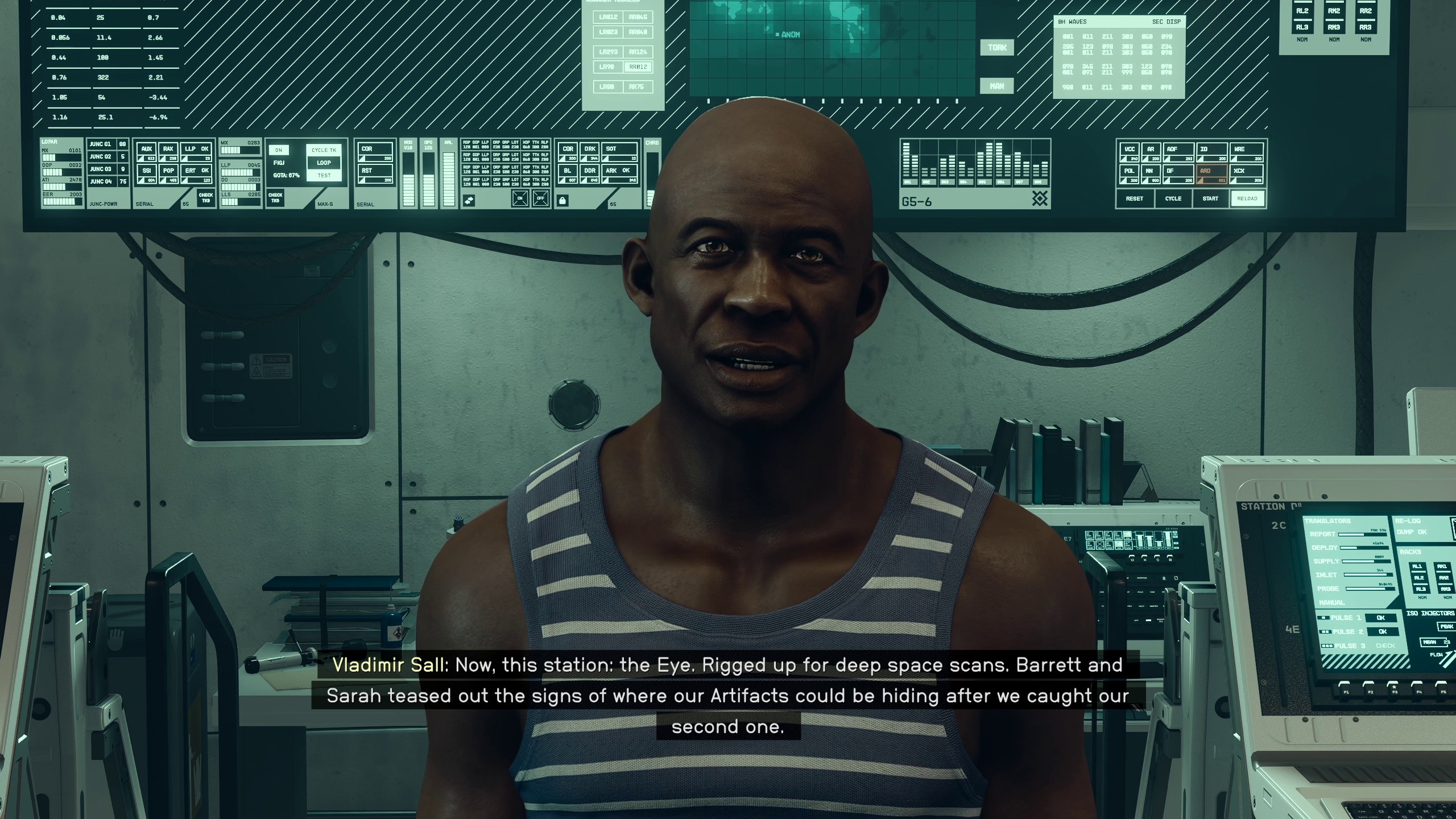
It goes on and on
Supposedly, Starfield won’t really start until you’ve completed the main story. This is, if you’ll pardon the expression, nonsense. What is true: The New Game Plus is inserted into the story in Starfield as smoothly as I’ve rarely seen it in a game. I can’t explain the reasons for this without spoilers.
What I did notice: Starfield is designed from the beginning for you to play it on and on, virtually to infinity. Did you not discover some of the well-hidden content like the legendary spaceships the first time around? Grab them on your second playthrough – or simply continue playing your savegame after the end!
This also gives you the opportunity to try out different play styles, opt for the evil conversation options for a change and instead of helping the security authorities in a quest series, be loyal to the pirates instead.
There’s light and shade in the technology
In contrast to the Xbox version, Starfield runs almost without problems on the PC. Only in the larger cities can the frame rate drop a little, especially in 4K resolution. An Intel i9-13900K with Geforce RTX 4090 and 32 GB RAM managed between 55 and 65 FPS (city) and 68 and 85 FPS (uncivilised planet) at full details in 4K.
In 1440p, things look much more relaxed, with around 100 FPS possible without any problems. 21:9 resolutions are supported, the graphics options are extensive and there is even a setting to have screen texts displayed larger.
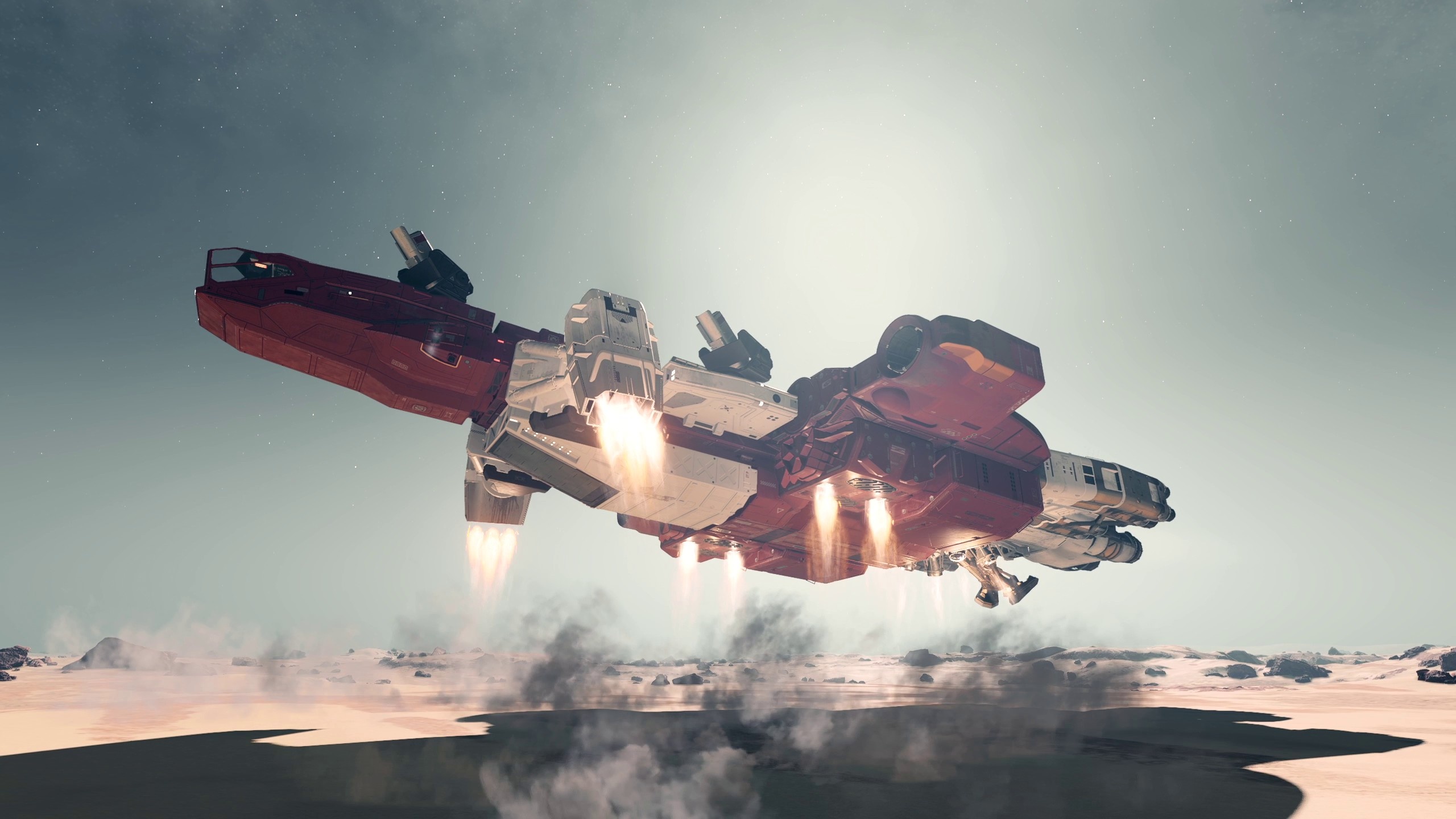
Starfield is officially optimised for AMD graphics cards and indeed my Ryzen 7 7700 with Radeon RX 7900 XTX and 32 GB in 2560 x 1440 pixels was always up to scratch, the action was smooth without slowdowns or jerks. We did not notice any dedicated performance loss with Nvidia graphics cards in the comparison, despite the lack of DLSS support.
A third system with Intel i5-6600, Geforce RTX 3080 and 32 GB RAM had mostly around 45 FPS on foot in 3440 x 1440 at medium details, and a constant 60 frames per second in space. What is mandatory in any case: an SSD, because on a slow HDD hard drive the frequent loading times become an absolute test of patience.
Typical for sandbox and Bethesda games: Starfield has to struggle with some bugs. Glitches are the most common: Figures suddenly float in the air or sink into the ground. The enemy AI keeps dropping out, running away in the middle of the battle or reacting with a delay if it doesn’t immediately get stuck in the level architecture.
Such errors are annoying, but sometimes amusing and not serious over the entire length of the game. The situation is different for several bugs that even the Day One update did not fix, according to Bethesda’s own patch notes: Twice loading a save game ended in an endless loop, another time the screen froze and once my character could no longer shoot. Only loading an older save game brought relief.
For the small and large bugs, there is a devaluation of two points.
Why Starfield gets less points than Fallout 4
You see: there is a lot to criticise about Starfield. Like for example the missing option to dive in waters. Or why NPCs often don’t react when we fire weapons near them. And why, please, some shopkeepers never go to sleep, although this could be expected from a realistic open world and is practised elsewhere in Starfield?
These are all valid points that need to be mentioned. But in the end, they didn’t weigh as heavily in the test as the fun and excitement with which I still threw myself into each new quest after 60 hours. Starfield takes the familiar and proven Bethesda concept and puts it into a science fiction world and that alone will be enough for many of you to voluntarily spend hundreds of hours in this game.
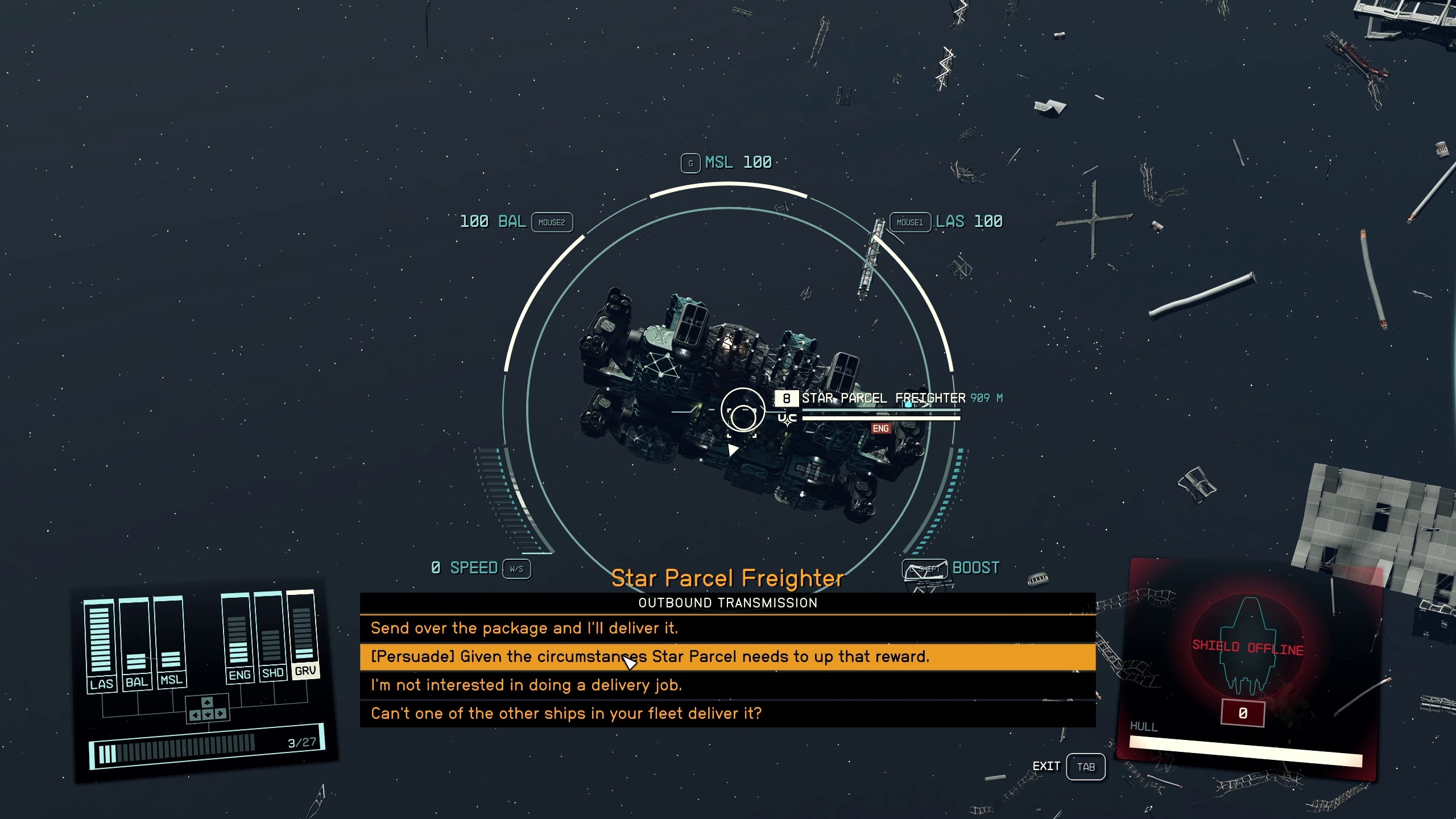
(They still exist, the random encounters and small sympathetic quests Bethesda is known for. Mostly they start in space.)
But throughout the test, I just couldn’t find an answer to a question that was crucial for me in scoring: What is the one surprising twist about Starfield, the big feature? Fallout has its vaults, Skyrim has its dragons – but Starfield puts all its eggs in one basket with its giant universe and exploration, only to disappoint in this category of all things.
In its quest to get bigger and bigger, the Bethesda game has lost a lot: the crafting options, for example, are largely superfluous and nowhere near as valuable as in the now heavily expanded Fallout 76 (whose launch status was, incidentally, significantly worse than Starfield’s).
And the environmental storytelling, praised to the skies in Michael Graf’s review of Fallout 4, is virtually non-existent in Starfield. With a few exceptions, everything seems to be mass-produced. There is hardly any space for small, likeable locations, and I don’t have the time to look for them anyway, because the planet-hopping doesn’t give me any sense of a connected, logical game world.
Starfield had the potential to take Bethesda’s open worlds to a new level. But in the end, almost everything that came after Fallout 4 breaks under the weight of its 1,000 planets. What remains is a game that, with its sandbox character, may still not have to fear any direct competition. But also one that no longer has quite the same fascination as its twelve and eight-year-old quasi-predecessors.
And that’s mainly because Todd Howard and Co. didn’t want to clean out the attic.
Editor’s Verdict
Starfield and Elex 2 have a surprising amount in common, for example the jetpack. In the end, the two open-world role-playing games are also less far apart in the rating than I would have thought before. But there is one point where the difference is enormous, and you can take that as a blatant shot across the bow for Bethesda: I liked the game world of Starfield less than that of Elex 2!
Perhaps it would have been better if Todd Howard and Co. had concentrated on one planet or one star system instead of trying to simulate half the Milky Way. Because Starfield is so crammed with (partly useless) content that I see the seams much more often than with Fallout 4 and Skyrim. I can forget that during the story campaign and the successful faction quests, especially when I land in a larger settlement (Neon, wow!) and work through all kinds of quests for different factions there without having to constantly jump back and forth between different systems via fast travel. This is the game I expected, and I’m really enjoying it!
The sense of progression is palpable, I’m constantly finding new weapons and thanks to jetpacks, battles in multi-storey, expansive environments become an amusing, wonderfully dynamic chase. But the rest is rather annoying: the spaceship, the battles in space and the soporific marching across empty planetary surfaces (where are the vehicles?) are constant reminders of the mountains of wasted potential.
Starfield didn’t turn out to be the game I had imagined it would be, given the advertising in the run-up. It is a Bethesda role-playing game as we know it, in parts with a new coat of paint, but behind the scenes the old strengths – and weaknesses – of the system still exist. Those who can accept that will find a new home here for the next few weeks. All other role-playing game fans are currently better served with Baldur’s Gate 3.

